Forums
- Forums
- Axis And Allies Forum
- General Discussion
- Aviation News
Aviation News
Post a reply
- Go to Previous topic
- Go to Next topic
- Go to Welcome
- Go to Introduce Yourself
- Go to General Discussion
- Go to Screenshots, Images and Videos
- Go to Off topic
- Go to Works in Progress
- Go to Skinning Tips / Tutorials
- Go to Skin Requests
- Go to IJAAF Library
- Go to Luftwaffe Library
- Go to RAF Library
- Go to USAAF / USN Library
- Go to Misc Library
- Go to The Ops Room
- Go to Made in Germany
- Go to Campaigns and Missions
- Go to Works in Progress
- Go to Juri's Air-Raid Shelter
- Go to Campaigns and Missions
- Go to Works in Progress
- Go to Skinpacks
- Go to External Projects Discussion
- Go to Books & Resources
-
6 years agoThu Nov 22 2018, 10:21pm
 Main AdminTrinidad, Nov. 21, 2018 /PRNewswire/ -- Boeing [NYSE: BA] and Caribbean Airlines today announced the airline has chosen to enhance and renew its single-aisle fleet with the 737 MAX 8. The carrier, which has long operated the Next-Generation 737, will take delivery of 12 MAX airplanes in the coming years.
Main AdminTrinidad, Nov. 21, 2018 /PRNewswire/ -- Boeing [NYSE: BA] and Caribbean Airlines today announced the airline has chosen to enhance and renew its single-aisle fleet with the 737 MAX 8. The carrier, which has long operated the Next-Generation 737, will take delivery of 12 MAX airplanes in the coming years.
The airline commemorated the selection of the MAX during a ceremony featuring national dignitaries, including the Prime Minister of Trinidad and Tobago, the Honorable Keith Rowley, and Caribbean Airlines Chief Executive Officer, Garvin Medera.
"Boeing has been by our side since Caribbean Airlines was founded twelve years ago using the 737-800. The 737 MAX allows us to continue offering a safe and comfortable experience for our passengers, while significantly improving fuel efficiency and environmental performance," said Medera. "All of these elements position us for long-term success."
The 737 MAX 8 ? part of a fuel-efficient family of airplanes ? will seat up to 160 passengers in Caribbean Airlines' three-class configuration featuring the "Caribbean Plus" Cabin, and provide more than 500 nautical miles more range than the existing aircraft.
The airplane incorporates the latest technology CFM International LEAP-1B engines, Advanced Technology winglets, and other airframe enhancements to improve performance and reduce operating costs. Caribbean Airlines projects the MAX 8 will provide up to 16 percent fuel savings compared to its current fleet.
The MAX, outfitted with the popular Boeing Sky Interior and designed to be quieter than previous jets, will also offer Caribbean's customers the latest in passenger comforts.
"We are honored that Caribbean Airlines has placed its trust once again in the Boeing airplane family and chosen to bridge to the future with the 737 MAX 8. Its selection reaffirms the partnership we have built together with the Next-Generation 737 family," said Ihssane Mounir, senior vice president of Commercial Sales & Marketing for The Boeing Company.
In addition to flying Boeing airplanes, Caribbean Airlines also uses Boeing's services to optimize its operations. The carrier participates in the Fuel Dashboard Program, for example, which allows operators to look across their fleet and identify fuel savings. Caribbean also uses Boeing's consumable and expendable material services to ensure it has the parts it needs when it needs it.
The 737 MAX family is the fastest-selling airplane in Boeing history, accumulating about 4,800 orders from more than 100 customers worldwide. Boeing has delivered more than 200 737 MAX airplanes since May 2017.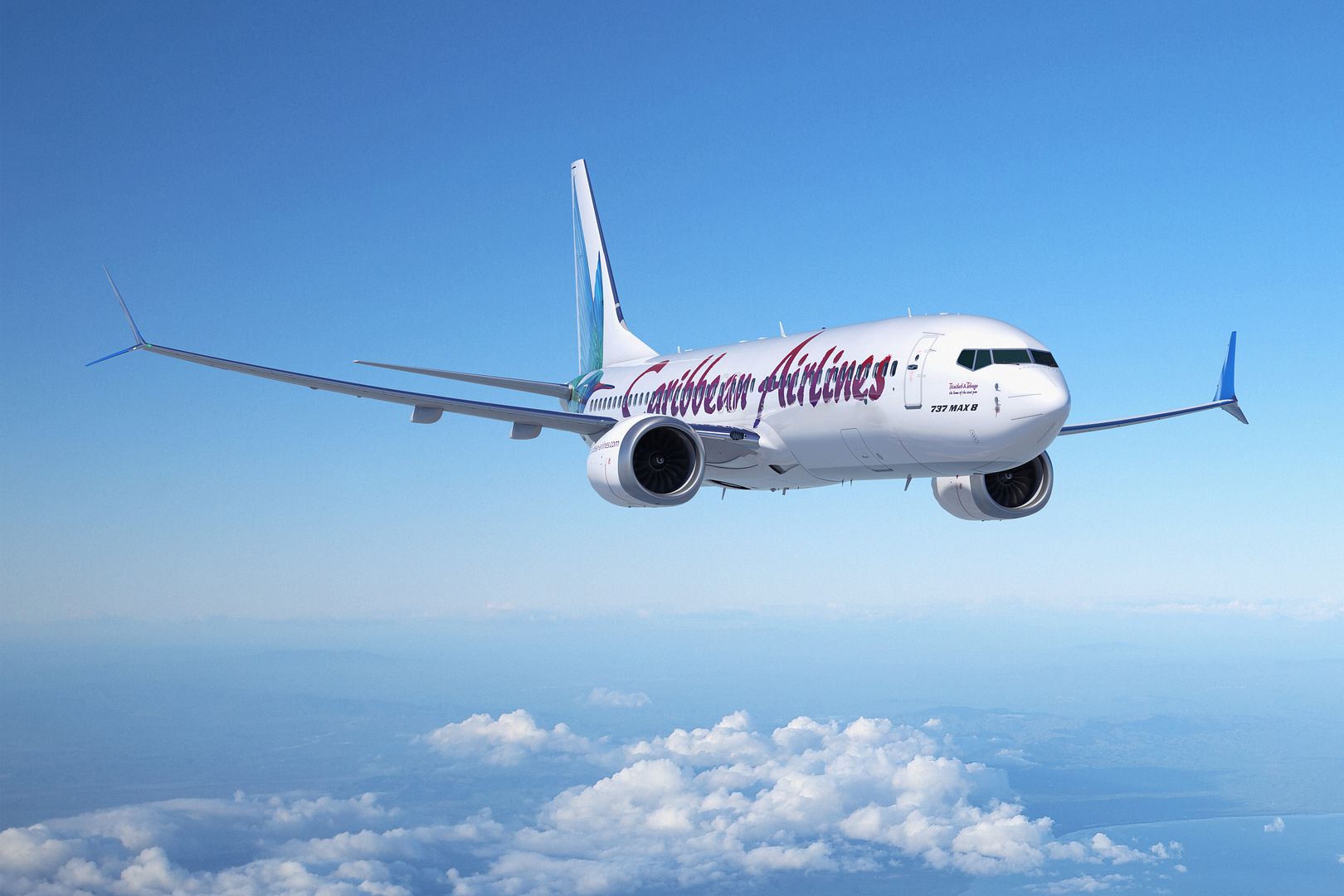
-
 Main AdminMEDITERRANEAN SEA (Nov. 21, 2018) Sailors transport an F/A-18E Super Hornet assigned to the Knighthawks of Strike Fighter Squadron (VFA) 136 across the flight deck aboard the Nimitz-class aircraft carrier USS Harry S. Truman (CVN 75). Currently operating in the U.S. 6th Fleet area of operations, Harry S. Truman will continue to foster cooperation with regional allies and partners, strengthen regional stability, and remain vigilant, agile and dynamic. (U.S. Navy photo by Mass Communication Specialist Seaman Joseph A.D. Phillips/Released)
Main AdminMEDITERRANEAN SEA (Nov. 21, 2018) Sailors transport an F/A-18E Super Hornet assigned to the Knighthawks of Strike Fighter Squadron (VFA) 136 across the flight deck aboard the Nimitz-class aircraft carrier USS Harry S. Truman (CVN 75). Currently operating in the U.S. 6th Fleet area of operations, Harry S. Truman will continue to foster cooperation with regional allies and partners, strengthen regional stability, and remain vigilant, agile and dynamic. (U.S. Navy photo by Mass Communication Specialist Seaman Joseph A.D. Phillips/Released)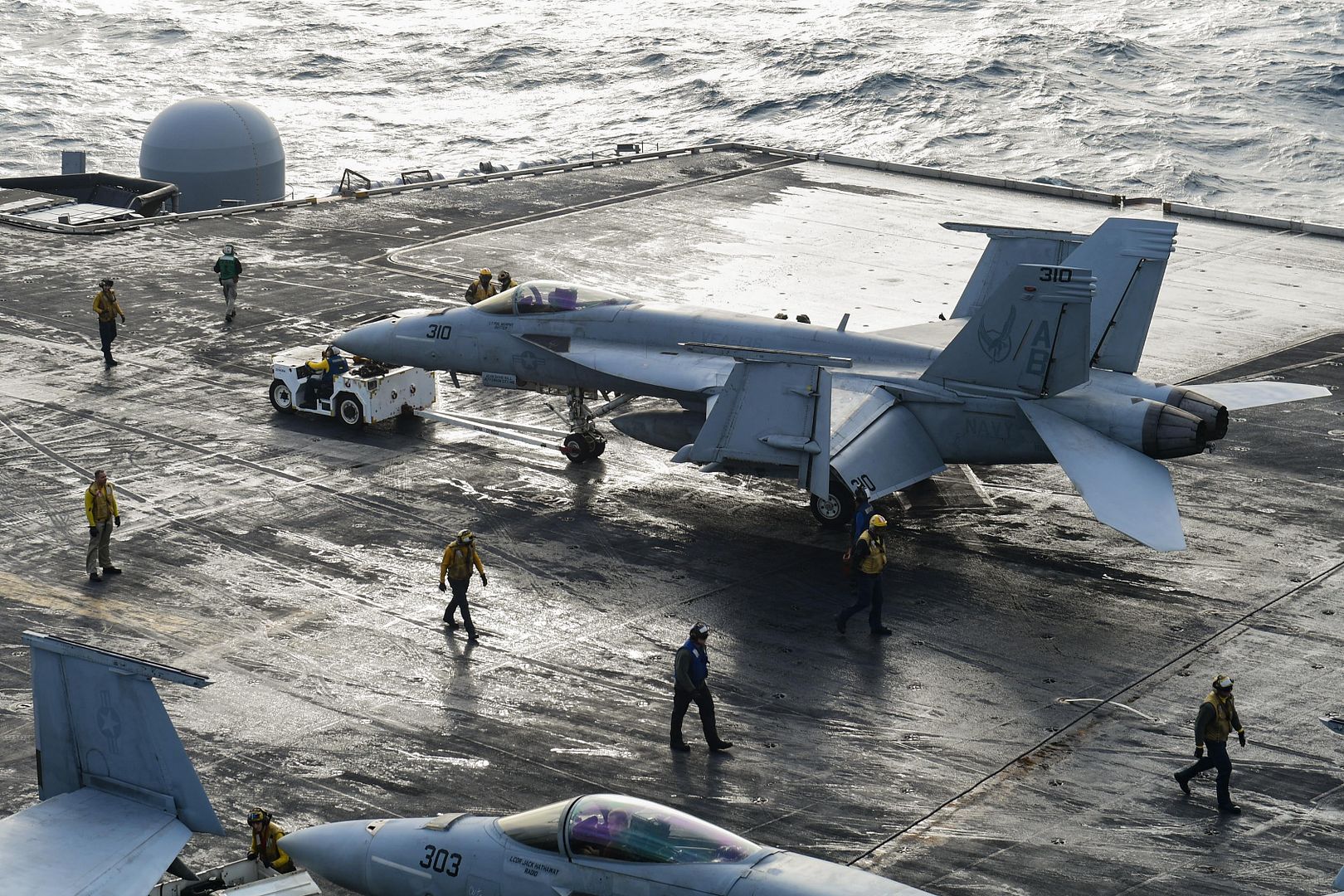
Donauw?rth, The Serbian Minister of Defence Aleksandar Vulin visited the Airbus Helicopters Donauw?rth site to accept the first H145M for the Serbian Air Force. In December, two H145Ms will be delivered to the Serbian Ministry of Interior. Altogether, Serbia will receive nine H145Ms, earmarked for the Air Force and for the Ministry of Interior. Four of the Air Force?s aircraft will be equipped with the HForce weapon management system.
?We assess the implementation of the contract as an example of successful cooperation and positive business practice,? said Aleksandar Vulin. ?All the activities so far have been carried out within the agreed deadlines, and we expect the future activities to be implemented in the same manner. We are particularly pleased to point out that the activities of the industrial cooperation covered by the contract are taking place within the planned timelines.?
?I would like to thank the Serbian government and personally Defence Minister Vulin for their trust in the latest member of our H145 family and for the smooth cooperation since the negotiations started in 2016,? said Wolfgang Schoder, CEO of Airbus Helicopters Germany. ?We see a lot more opportunities for the H145M in Europe and beyond.?
The contract between Airbus Helicopters and Serbia foresees transfer of technology, spare parts, tools and documentation for the helicopters? maintenance and repair. Airbus Helicopters will also certify Serbia's Moma Stanojlovic aeronautical plant as a centre for the maintenance of Gazelle helicopters and will include it in its overhaul network. Airbus will also support Serbian manufacturing plants and research and development institutions to obtain relevant qualifications and certificates to become a supplier.
The H145M has several optional equipment packages that can be installed or removed depending on the assigned mission. With a maximum take-off weight of 3.7 tonnes, the H145M can be used for a wide range of tasks, including troop transport, utility, surveillance, air rescue, armed reconnaissance and medical evacuation.
The Serbian aircraft will be equipped with a fast roping system, high-performance camera, fire support equipment, ballistic protection as well as an electronic countermeasures system to support the most demanding operational requirements. The HForce system, developed by Airbus Helicopters, will allow Serbia to equip and operate their aircraft with a large set of ballistic or guided air-to-ground and air-to-air weapons.
The H145M is a tried-and-tested light twin-engine helicopter that was first delivered in 2015 to the German Armed Forces and has since been ordered by Hungary, Thailand and Luxemburg. The programme?s maturity allows Airbus Helicopters to execute orders on cost and on schedule. Mission readiness of the H145Ms already in service is above 95 percent.
Powered by two Safran Arriel 2E engines, the H145M is equipped with full authority digital engine control (FADEC) and the Helionix digital avionics suite. It includes a high-performance 4-axis autopilot, increasing safety and reducing pilot workload. Its particularly low acoustic footprint makes the H145M the quietest helicopter in its class.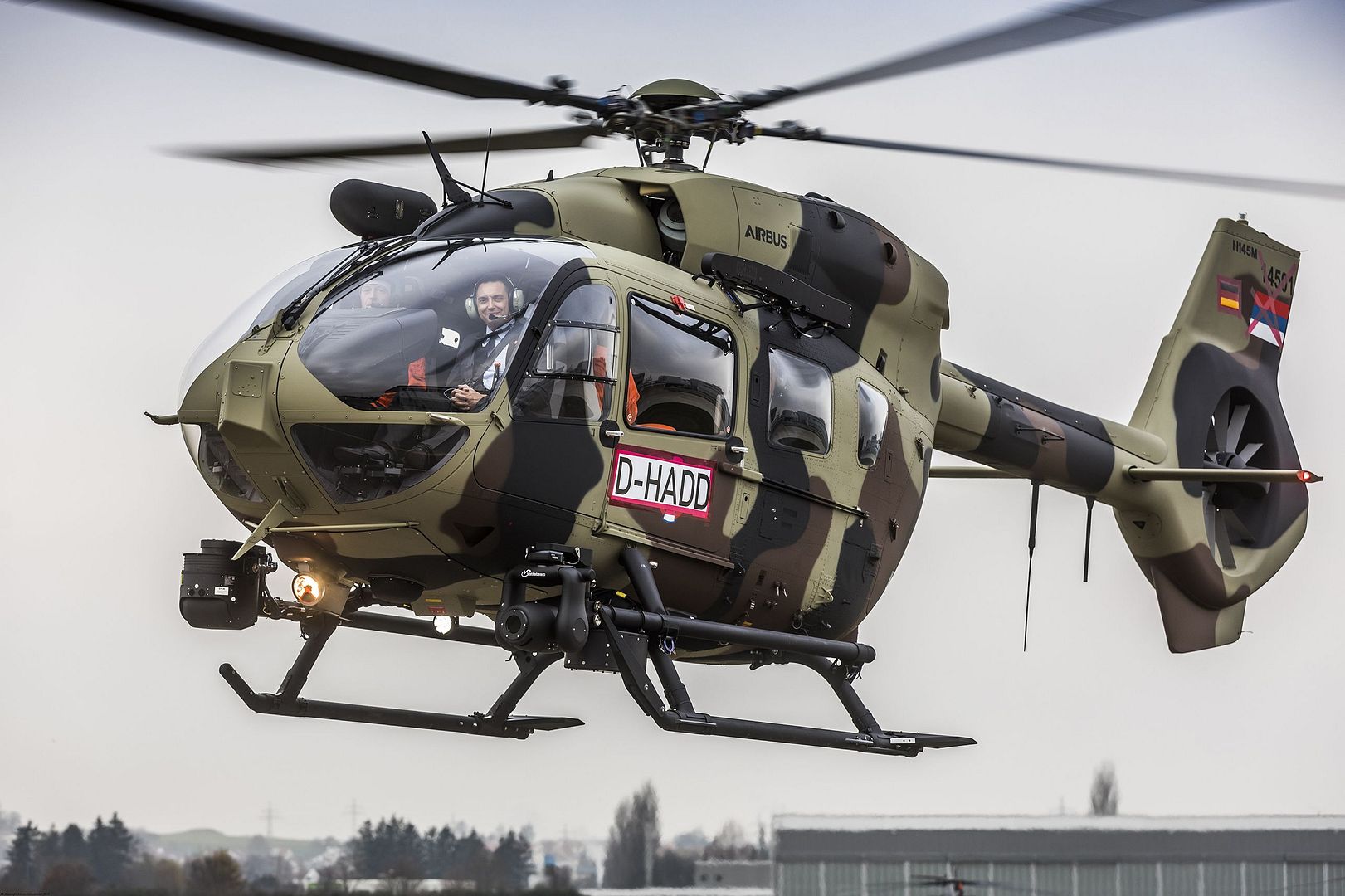
Seville, 21 November 2018 ? Airbus has unveiled the new full flight and mission simulator (FFS) of the Airbus A330 MRTT Multirole Tanker Transport aircraft at its International Training Centre (ITC) in Seville. The simulator, developed by Airbus together with the Spanish company Indra, joins the A400M, C295 and CN235 programs, reaffirming the capabilities of the Airbus ITC in Seville as a reference centre for training crews for all military transport programs of the Airbus portfolio.
With 60 firm orders by twelve nations and 33 aircraft delivered, the Airbus A330 MRTT is todays only new generation tanker/transport flying, certified and battle-proven.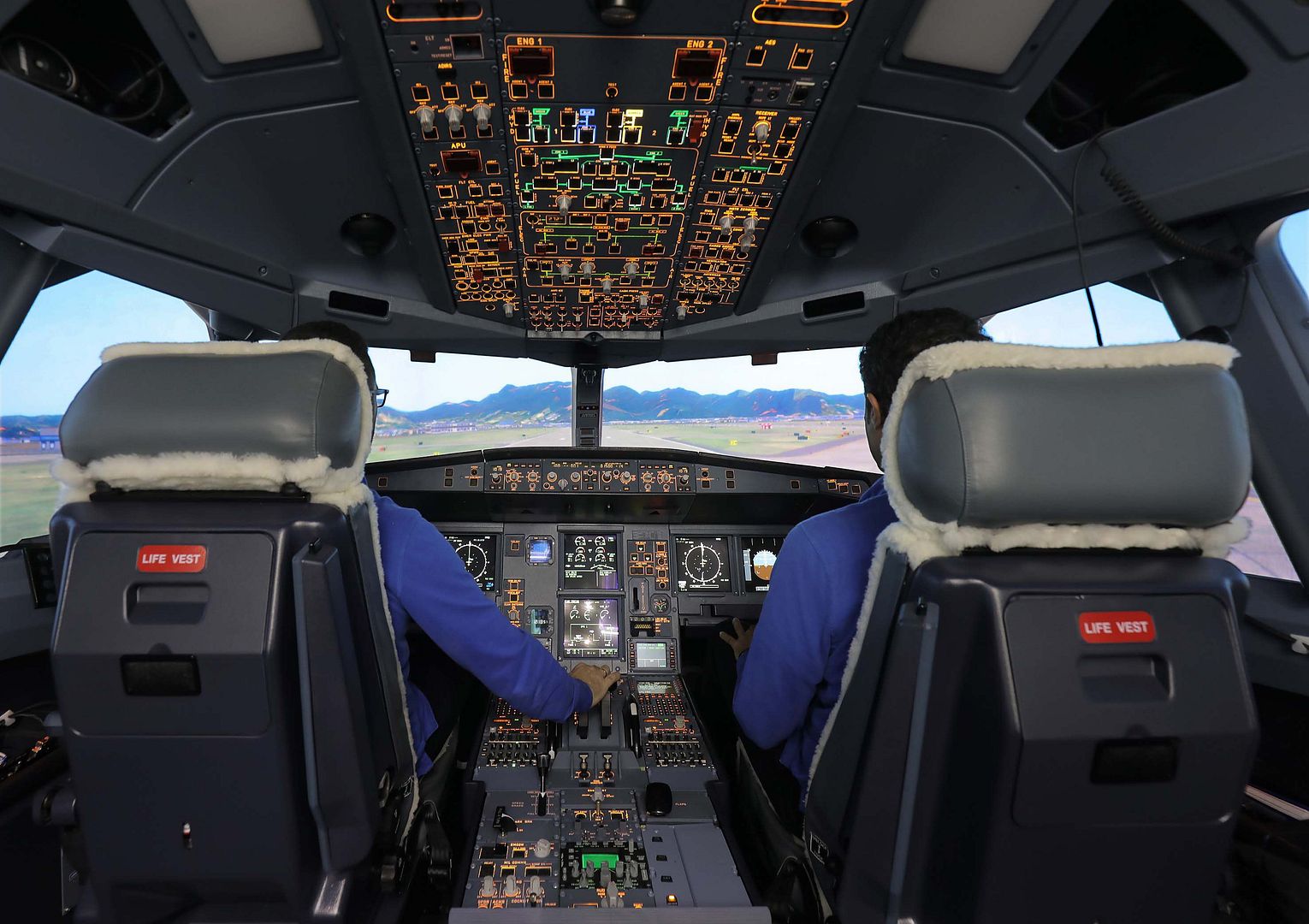
-
 Main AdminMEDITERRANEAN SEA (Nov. 25, 2018) A C-2A Greyhound, assigned to the "Rawhides" of Fleet Logistic Support Squadron (VRC) 40, lands aboard the Nimitz-class aircraft carrier USS Harry S. Truman (CVN 75). Currently operating in the U.S. Sixth Fleet area of operations, Harry S. Truman will continue to foster cooperation with regional allies and partners, strengthen regional stability, and remain vigilant, agile and dynamic. (U.S. Navy photo by Mass Communication Specialist Seaman Maxwell Higgins/Released)
Main AdminMEDITERRANEAN SEA (Nov. 25, 2018) A C-2A Greyhound, assigned to the "Rawhides" of Fleet Logistic Support Squadron (VRC) 40, lands aboard the Nimitz-class aircraft carrier USS Harry S. Truman (CVN 75). Currently operating in the U.S. Sixth Fleet area of operations, Harry S. Truman will continue to foster cooperation with regional allies and partners, strengthen regional stability, and remain vigilant, agile and dynamic. (U.S. Navy photo by Mass Communication Specialist Seaman Maxwell Higgins/Released)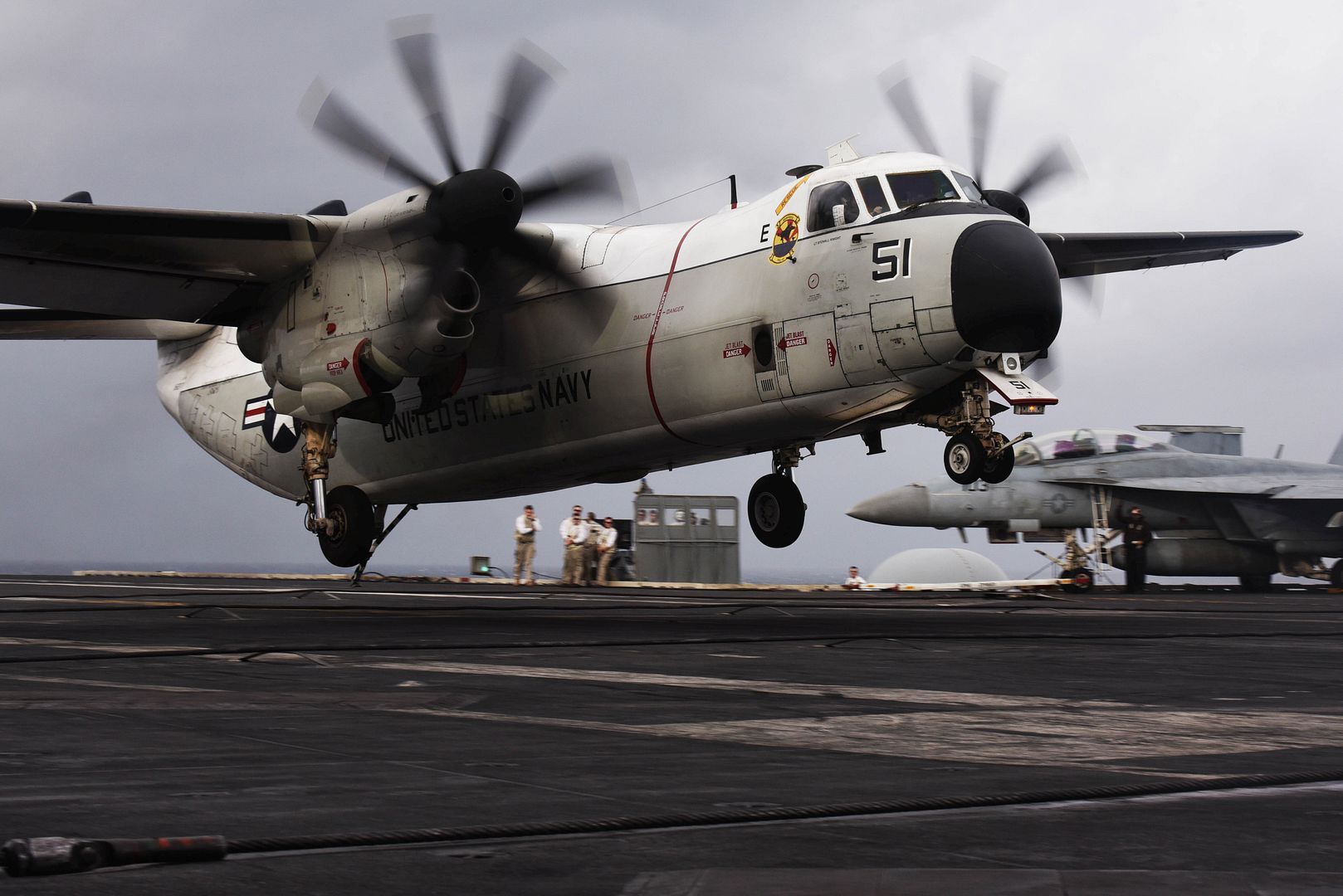
U.S. Airmen unload cargo from a C-130J Hercules, during air cargo operations in East Africa, November 25, 2018. The 75th Expeditionary Airlift Squadron supports Combined Joint Task Force - Horn of Africa (CJTF-HOA) with medical evacuations, disaster relief, humanitarian and airdrop operations. The CJTF-HOA is a multinational effort to conduct security cooperation, combat violent extremism and enable freedom of movement within East Africa in order to defend U.S. interests and support aligned regional efforts. (U.S. Air Force Photo's by Tech. Sgt. Chris Hibben)
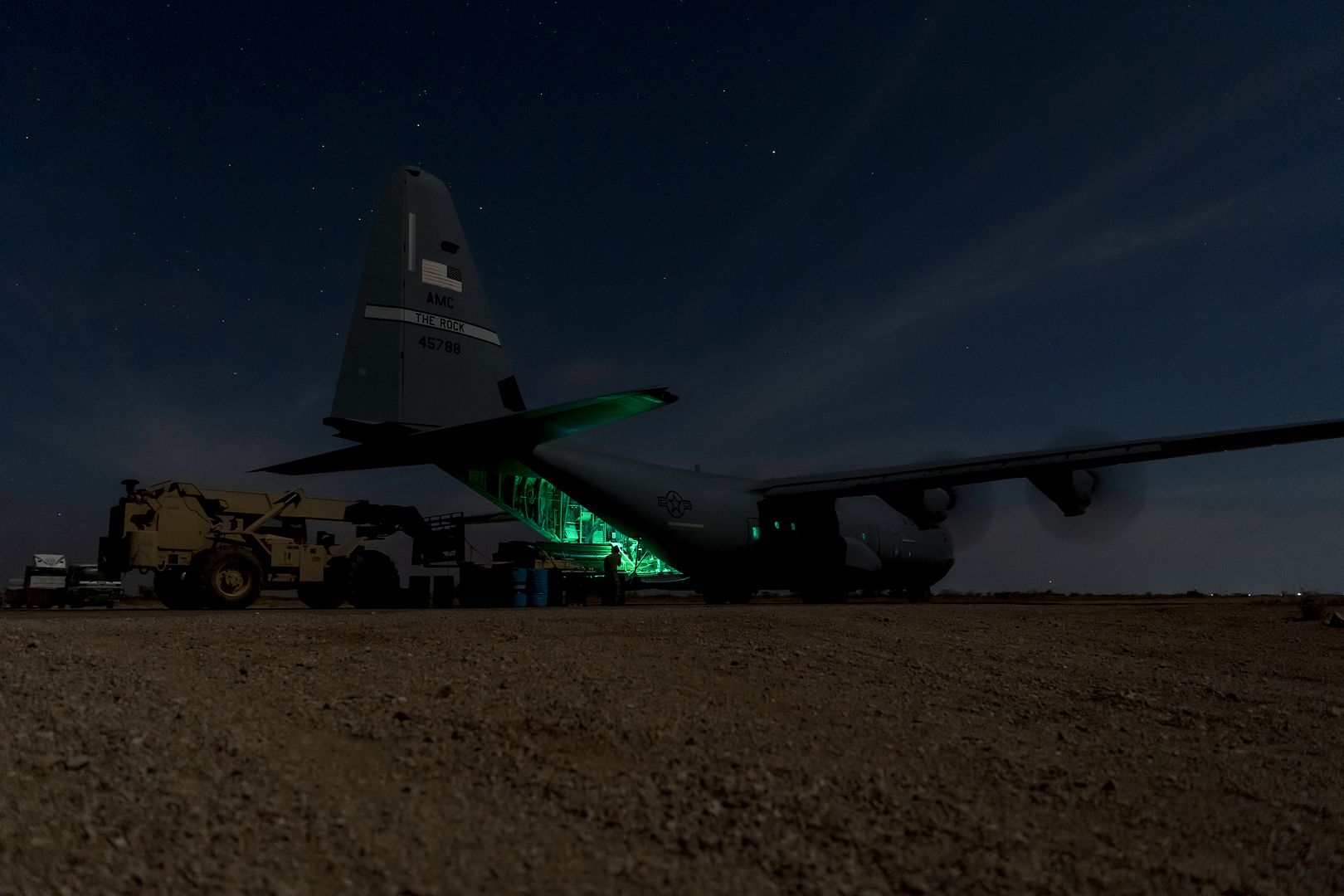
325th Fighter Wing F-22A Raptor's taxi at Eglin Air Force Base, Fla., Nov. 20. The first six Raptors arrived to their temporary home at Eglin from Tyndall Air Force Base. This move is part of mission shift by the Air Force as Hurricane Michael recovery efforts continue at Tyndall. (U.S. Air Force photo]s/Samuel King Jr.)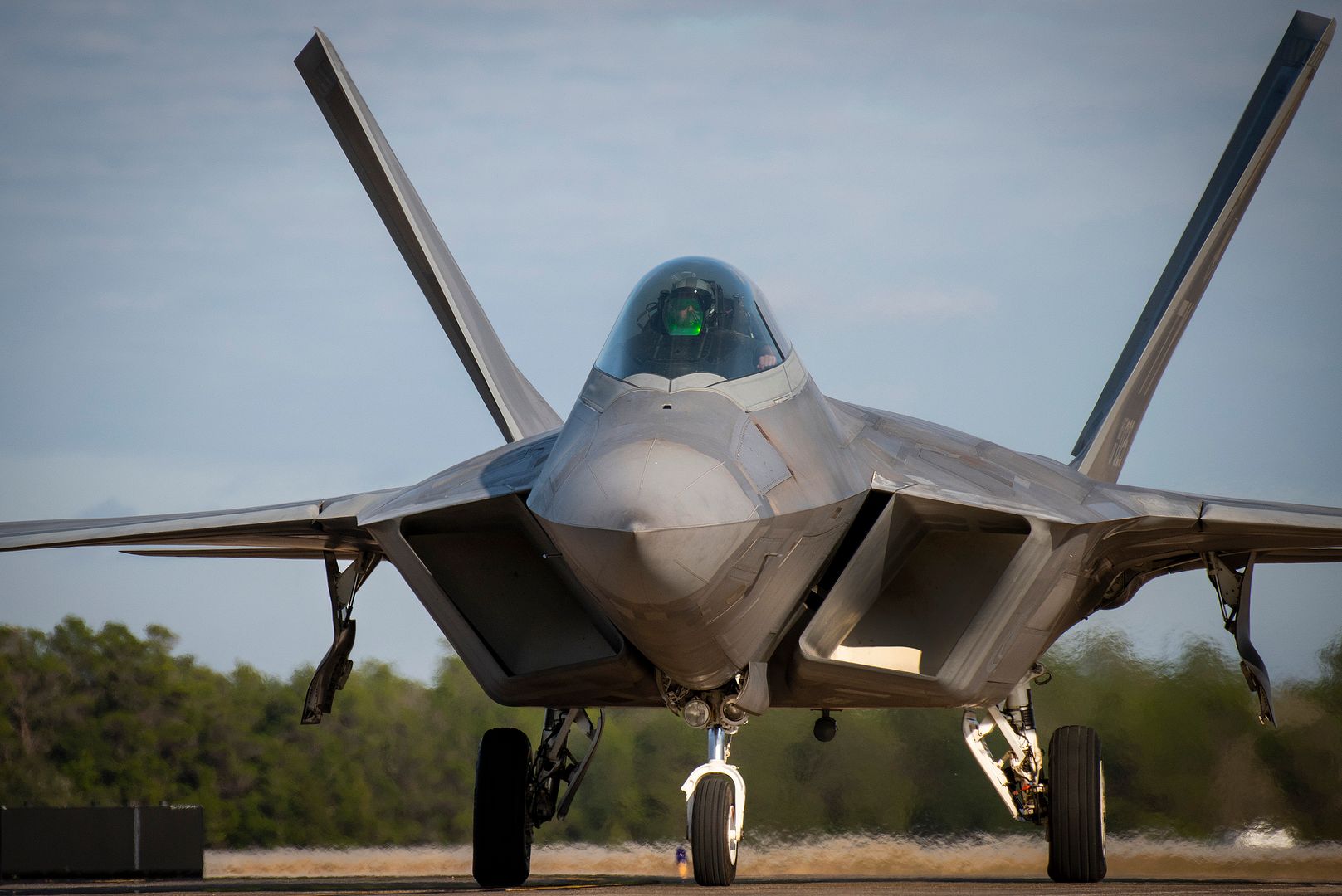

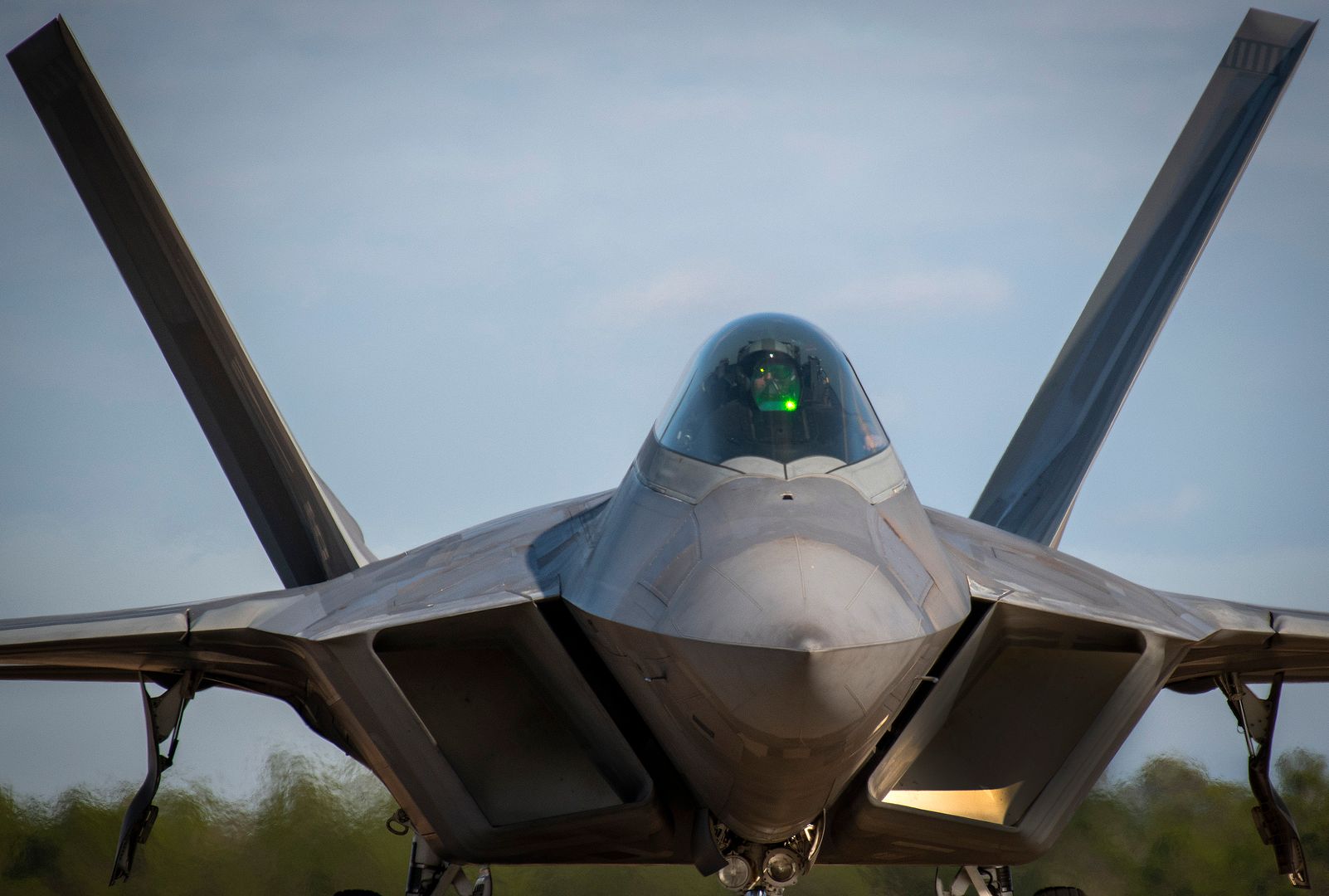
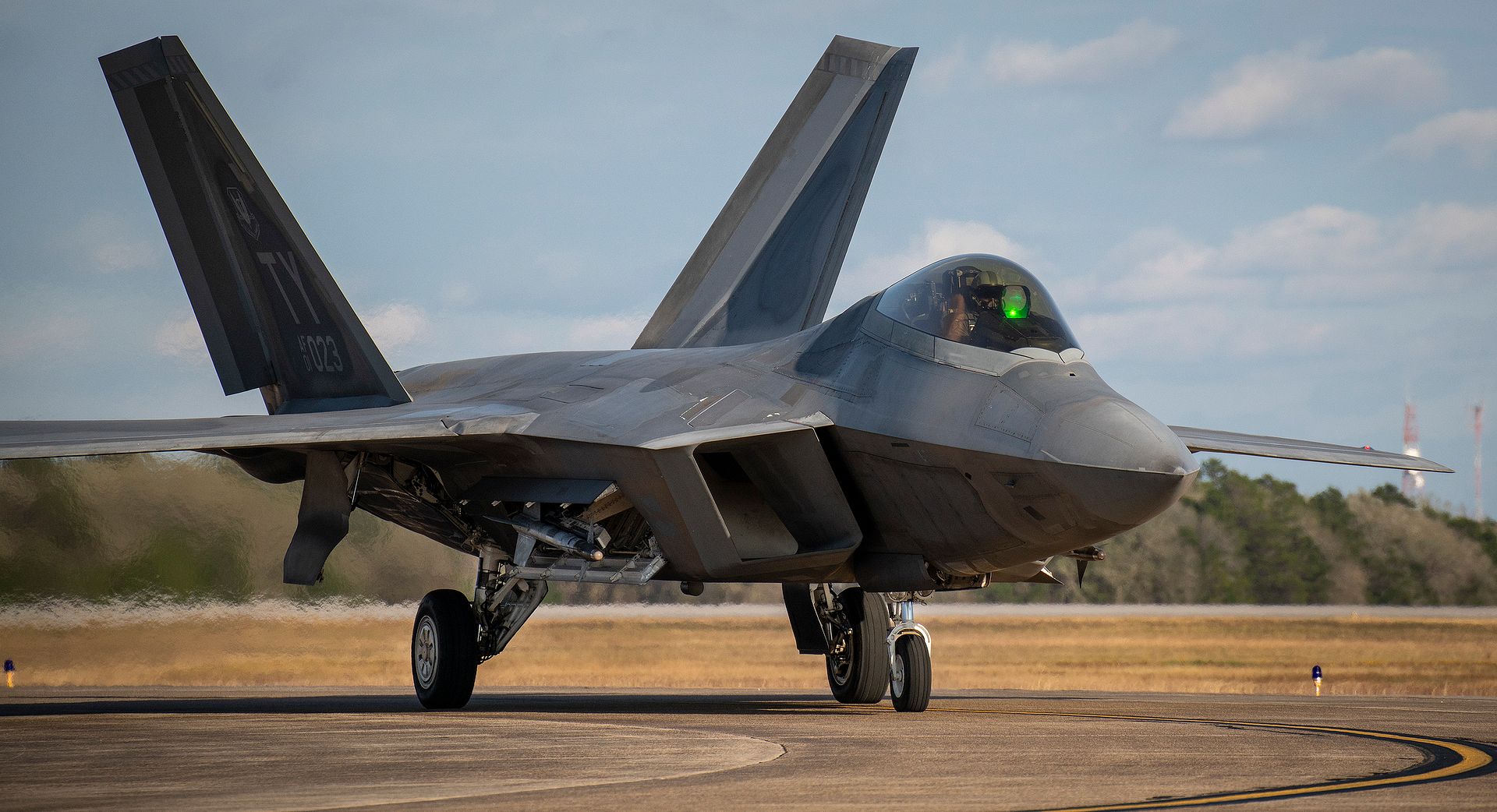
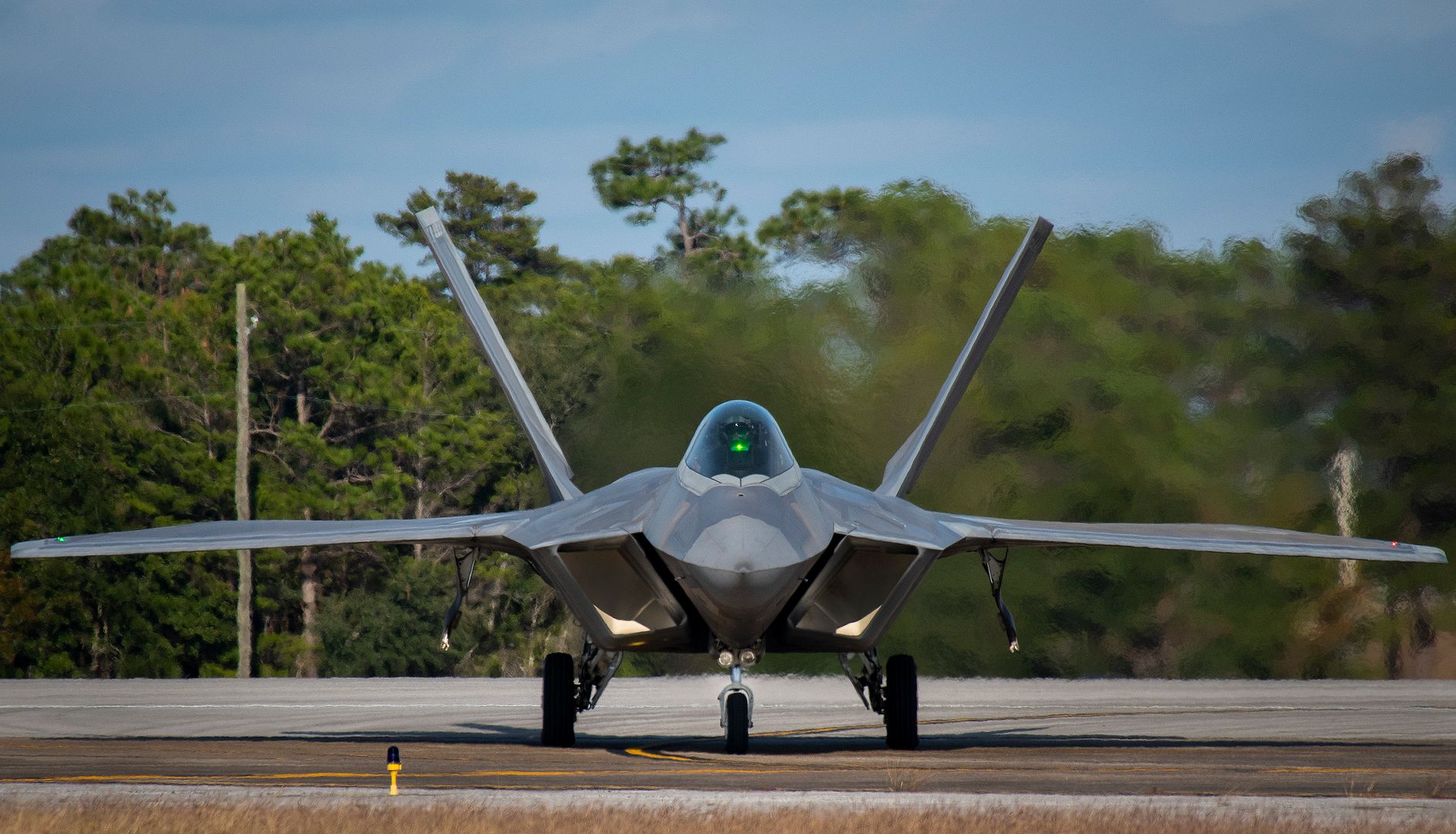
ARABIAN GULF (Nov. 23, 2018) An F-35B Lightning II, attached to the "Avengers" of Marine Fighter Attack Squadron (VMFA) 211, sits on the flight deck of the Wasp-class amphibious assault ship USS Essex (LHD 2) during a scheduled deployment with the Essex Amphibious Ready Group (ARG) and 13th Marine Expeditionary Unit (MEU). The Essex ARG and 13th MEU are the first U.S. Navy and Marine Corps team to deploy to U.S. 5th Fleet area of operations with the transformational warfighting capabilities of the F-35B Lightning II, making it a more lethal, flexible and persistent force, leading to a more stable region for our partner nations. (U.S. Navy photo by Mass Communication Specialist 3rd Class Jenna Dobson/Released)
DENVER, Nov. 26, 2018 /PRNewswire/ -- NASA has a new spacecraft operating on the surface of Mars. This afternoon, the InSight Mars Lander, which was designed, built and tested by Lockheed Martin (NYSE: LMT), navigated the dramatic entry and descent through the Martian atmosphere and touched down on Elysium Planitia in the equatorial region of Mars. Lockheed Martin is the prime contractor responsible for the complete spacecraft system ? cruise stage, aeroshell and the lander itself. Mission management and navigation were handled by NASA Jet Propulsion Laboratory (JPL) and spacecraft operations were performed by engineers at Lockheed Martin Space's Mission Support Area in Littleton, Colorado.
At 12:47 p.m. MST, onboard software commands, developed by Lockheed Martin, fired six separation nuts and jettisoned the cruise stage of the spacecraft while it was 78 miles above the surface. That started a series of events that took the spacecraft through six different configurations and from a speed of 12,300 mph to a gentle touchdown on the surface. The data signal confirming the spacecraft had successfully landed was received on Earth at 12:52 p.m. MST.
"The InSight lander is a remarkable spacecraft. Through the entire entry, descent and landing it performed flawlessly," said Stu Spath, InSight program manager and director of Deep Space Exploration at Lockheed Martin Space. "NASA's JPL, which has been a pioneer in Mars exploration for decades, partners with both academia and private industry to bring the best expertise and innovation forward to make important exploration missions like InSight a success."
After landing, the spacecraft waited approximately seven minutes to use its X-band small deep space transponder to send a tone confirming the health of the spacecraft. Then, 25 minutes after that, the lander deployed its two solar arrays, with a width of 19 feet, 8 inches, to begin recharging the spacecraft's batteries
Two NASA orbiters, Mars Reconnaissance Orbiter (MRO) and 2001 Mars Odyssey, were also involved in this historic mission. MRO received and recorded InSight data during its journey to the surface, and will send it back to Earth later today. Both MRO and Odyssey will provide UHF relay during the entirety of the InSight surface mission ? Odyssey in the morning and MRO in the afternoon. Both MRO and Odyssey spacecraft were built by Lockheed Martin and both are operated for JPL by the company.
Lockheed Martin has been an industry partner with NASA and the JPL for more than four decades in the exploration of the surface of Mars. Beginning in 1976 with Viking missions, Lockheed Martin has been at the forefront in the development of eleven Mars-bound spacecraft and has played a significant role in all NASA missions to Mars.
"Our team is thrilled by the successful landing of the InSight spacecraft," Lisa Callahan, vice president and general manager of Commercial Civil Space at Lockheed Martin Space. "With missions like this, there are no guarantees; historically, less than half of the world's missions to Mars have been successful. Every arrival at another planet is an incredibly complex engineering challenge. But that's what we do best at Lockheed Martin. It's an honor for us to partner with NASA and JPL on yet another Mars mission."
JPL manages InSight for NASA's Science Mission Directorate. InSight is part of NASA's Discovery Program, managed by the agency's Marshall Space Flight Center in Huntsville, Alabama. Lockheed Martin Space in Denver built the InSight spacecraft, including its cruise stage and lander, and supports spacecraft operations for the mission.
A number of European partners, including France's Centre National d'?tudes Spatiales (CNES), the Institut de Physique du Globe de Paris (IPGP) and the German Aerospace Center (DLR), are supporting the InSight mission. CNES and IPGP provided the Seismic Experiment for Interior Structure (SEIS) instrument, with significant contributions from the Max Planck Institute for Solar System Research (MPS) in Germany, the Swiss Institute of Technology (ETH) in Switzerland, Imperial College and Oxford University in the United Kingdom, and JPL. DLR provided the Heat Flow and Physical Properties Package (HP3) instrument, with significant contributions from the Space Research Center (CBK) of the Polish Academy of Sciences and Astronika in Poland. Spain's Centro de Astrobiolog?a (CAB) supplied the wind sensors.
SEATTLE, Nov. 26, 2018 /PRNewswire/ -- Boeing [NYSE: BA] and Turkish Airlines today announced an order for three 777 Freighters as the flag carrier of Turkey continues to soar on record financial results and double-digit passenger and cargo growth. The order adds more of the long-range freighter to Turkish's fleet as the airline pursues its goal of becoming the world's largest cargo carrier.
Based on the 777-200LR (Longer Range), the 777 Freighter can fly 4,900 nautical miles (9,070 kilometers) with a full payload of 112 tons (102 metric tonnes or 102,000 kg). The long range means fewer stops and associated landing fees, less congestion at transfer hubs, lower cargo handling costs and shorter delivery times.
"We are excited to expand our efficient cargo fleet with the 777 Freighter. This aircraft has contributed greatly to Turkish Cargo, Turkish Airlines' successful sub brand, becoming the fastest-growing air cargo carrier in the world. The additional aircraft will provide us more flexibility to serve even more destinations as we continue to grow our global freight network," said M. ?lker Ayc?, Turkish Airlines Chairman of the Board and the Executive Committee.
The new order comes days after Turkish Airlines posted record profits for the first nine months of 2018 on strong passenger and cargo demand. The carrier's air freight business saw a 25-percent tonnage increase and a 29-percent revenue increase compared to the same period a year ago. The results extend the airline's success in recent years as Turkey has become one of the largest and fastest-growing aviation markets.
In line with the rapid growth, Turkish Airlines has steadily expanded its current and future fleet. Last January, the carrier announced the order of three 777 Freighters. Two months later, Turkish finalized an order for 25 787-9 Dreamliners and five options to prepare for growing demand at Istanbul's third airport, named "Istanbul Airport" by Turkish President Recep Tayyip Erdo?an during its official opening last month. Over the past few months, Turkish has begun taking delivery of new 737 MAX airplanes to refresh its single-aisle jets. In all, the airline's fleet of Boeing jetliners has grown to more than 160, with nearly 100 additional jets on order.
"Turkish Airlines has achieved significant success over the past decade. In addition to introducing innovations that have powered the growth of Turkey's commercial aviation sector and anchored a new state-of-the art airport, the airline is delivering outstanding results and rising in the ranks of elite airlines. We are extremely honored that Turkish Airlines has placed its trust and confidence in Boeing's flagship airplanes: the 737 MAX, the 777 and the 787 Dreamliner," said Kevin McAllister, president and chief executive officer of Boeing Commercial Airplanes.
With more than 30 777s in its fleet, Turkish Airlines is among the top 10 operators of the wide-body jet in Europe and the Middle East.
To support the long-term growth of the Turkish aerospace industry and strengthen Boeing's presence in the country, Boeing launched a strategic partnership program in Turkey last year, called the National Aerospace Initiative. Aligned with the targets of Turkey's Vision 2023 that set for the 100th anniversary of Turkish Republic's foundation, the initiative lays out a strategic collaboration framework in four key areas: industrial development, technology acceleration, services collaboration and advanced-skill training.
In line with these goals, Boeing is planning to open an engineering center in Istanbul that would specialize in research and support Turkey's growing aerospace capability. The company also recently expanded its collaboration with Turkish Technic, the maintenance arm of Turkish Airlines. Under the agreement, Turkish Technic becomes a strategic supplier for Boeing's Global Fleet Care program, providing operators with line maintenance, heavy maintenance, component service and repair for multiple aircraft models. Additionally, Boeing and Turkish Technic will partner to train and certify aircraft technicians.
"We continue to expand our commitment to grow in Turkey, together with Turkey. Our new engineering center and our growing cooperation in so many areas with the Turkish aerospace sector reflect our confidence in the country's capabilities," said McAllister.
About Turkish Airlines
Based in Istanbul, Turkish Airlines carried approx. 70 million passengers last year. The national flag carrier of Turkey currently operates direct flights to 304 destinations in 122 countries, as the only airline that flies to more countries and international destinations in the world. Turkish Cargo, the successful sub-brand of Turkish Airlines, is the world's fastest-growing air cargo carrier considering the cargo volumes, new flight destinations, and expanding cargo fleet. It serves customers in 124 countries, including two more countries besides the ones included in Turkish Airlines' flight network.
On 26 November, Saab completed the successful first flight of the second Gripen E test aircraft.
The second Gripen E test aircraft, designated 39-9, took off on its maiden flight at 09.50 am on 26 November 2018. The test flight was operated from Saab?s airfield at Link?ping, Sweden, with Saab test pilot Robin Nordlander at the controls.
?Some people think being a test pilot is the most exciting job in the world and it should be. Flying Gripen E means breaking no sweat though, even on a maiden flight such as this. The flight was so smooth and 39-9 a real pleasure to pilot. I am looking forward to getting it back in the air again and soon putting the new systems to the test,? says Robin Nordlander, Experimental Test Pilot, Saab.
During the 33 minute long flight, the pilot carried out a number of actions to validate flight characteristics and various test criteria, such as the software, life support system and radio system.
?It is very satisfying to see the second Gripen E aircraft join the flight test programme as planned. This new aircraft allows us to expand the trial activities as we test more functionality with on-board systems whilst, with two aircraft now flying, we are increasing the overall pace of testing. The programme continues to deliver good progress and to generate interest as our customers and others are keen to see and learn more about the capabilities Gripen E is going to give their pilots?, says Jonas Hjelm, head of Saab business area Aeronautics.
The next phase in the test programme for Gripen 39-9 is testing of the tactical systems and sensors.
TAP Air Portugal has taken delivery of the world?s first new-generation widebody A330neo and, as the launch airline, will be the first to benefit from the aircraft?s unbeatable operating economics, increased range, and Airbus? new Airspace cabin offering passengers the best in class comfort. The Portuguese carrier will take delivery of a further 20 A330-900s in the coming years.
TAP Air Portugal?s first A330-900 is leased from Avolon. It features 298 seats in a comfortable three-class lay-out with 34 full-flat business class, 96 economy plus and 168 economy class seats. The Airspace by Airbus cabin offers more personal space, larger overhead storage bins, advanced cabin lighting and the latest-generation in-flight entertainment system and connectivity. The aircraft will be deployed on routes from Portugal to the Americas and Africa.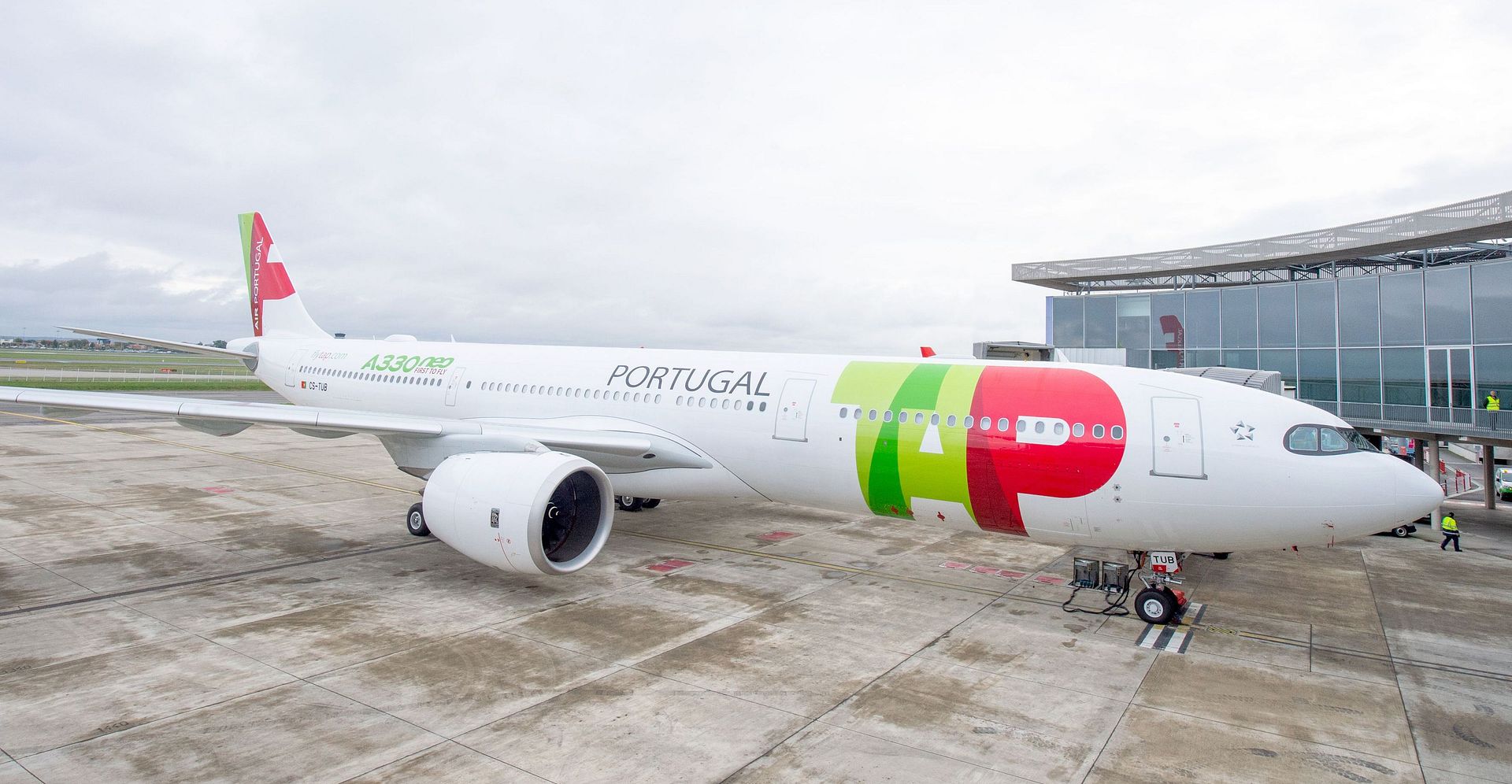
?I am delighted to welcome the first Airbus A330-900 into our expanding fleet. Its unbeatable economics and efficiency will power our business forward,? said Antonoaldo Neves, TAP Air Portugal CEO. ?The A330neo will give us a lot of operational flexibility thanks to its commonality with the other Airbus aircraft in our fleet. This aircraft will be the first equipped with the new Airspace cabin, which is a new concept shaped to meet TAP?s ambition to offer the best product in the industry to our passengers,? he added.
?Handing over the first ever A330neo to a long-standing Airbus customer, TAP Air Portugal, is a very important milestone for Airbus,? said Guillaume Faury, President of Airbus Commercial Aircraft. ?Through continuous innovations, the A330neo, our newest widebody aircraft, will offer maximum value and efficiency to our customers and superior comfort to their passengers. This occasion marks another step forward to meeting our industry?s goal for sustainable aviation,? he added.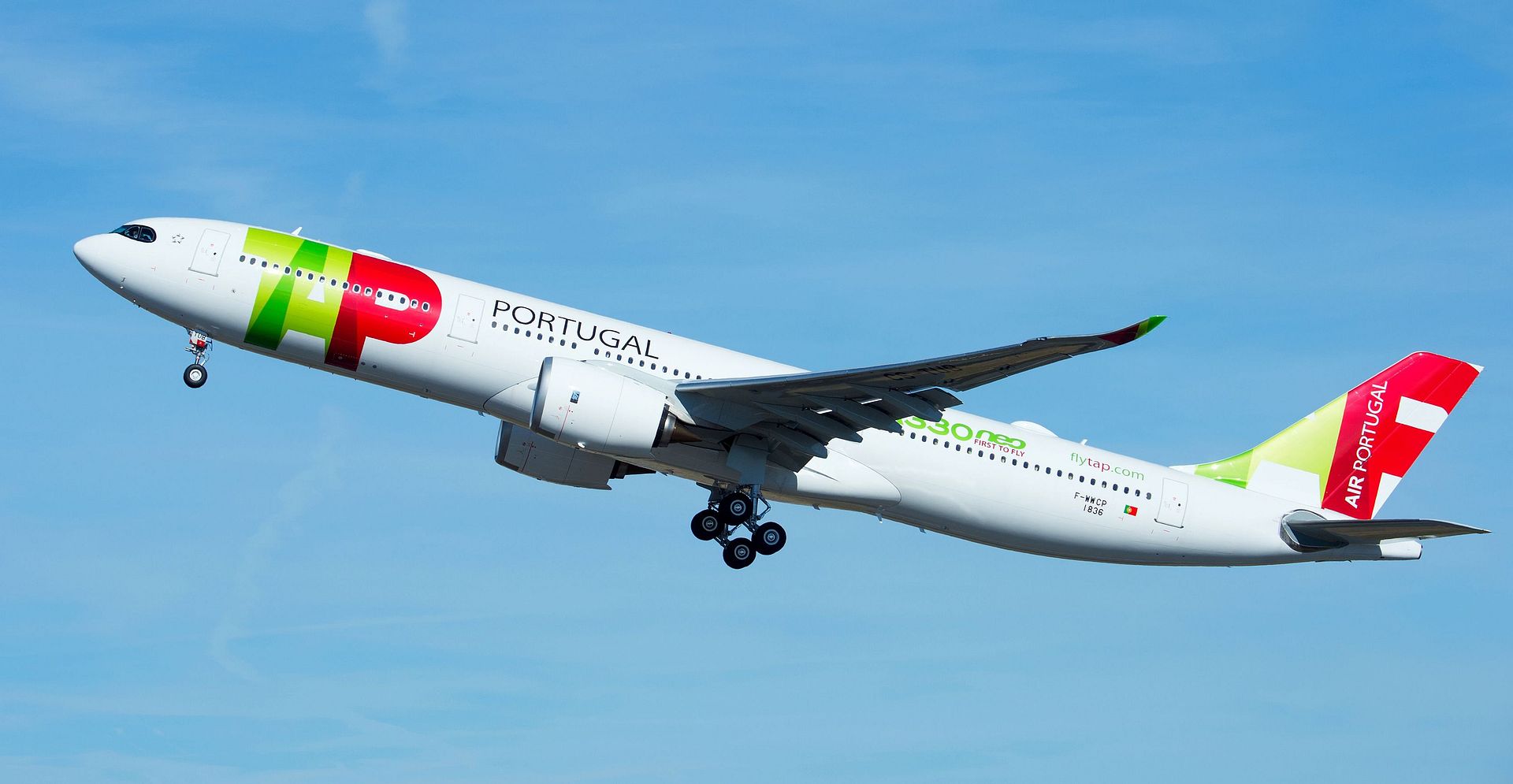
The A330neo is a true new-generation aircraft building on the A330?s success and leveraging on A350 XWB technology. It incorporates the highly-efficient new-generation Rolls-Royce Trent 7000 engines, and a new higher span 3D optimised wing with new Sharklets fully optimised for the best aerodynamic performance. Together these advances bring a significant reduction in fuel consumption of 25 percent compared with older-generation competitor aircraft of a similar size. Moreover, new composite nacelles, a fully faired titanium pylon and zero-splice air inlet technology provide the A330-900 with state-of-the-art aerodynamics and acoustics.
Today, TAP Air Portugal operates an Airbus fleet of 72 aircraft (18 A330s, 4 A340s,and 50 A320 Family aircraft). The single-aisle fleet includes 22 A319ceo, 21 A320ceo and four A321ceo, one A320neo and two recently delivered A321neo.
The A330 is one of the most popular widebody families ever, having received over 1,700 orders from 120 customers. More than 1,380 A330s are flying with over 128 operators worldwide. The new A330neo is the latest addition to the leading Airbus widebody family, which also includes the A350 XWB and the A380, all featuring unmatched space and comfort combined with unprecedented efficiency levels and unrivalled range capability.
-
 Main AdminKANDAHAR AIRFIELD, Afghanistan (AFNS) -- There is an aircraft that is so unique, you can only find it in one place ? not even the pilots who fly the aircraft can touch it until they are deployed to this specific location.
Main AdminKANDAHAR AIRFIELD, Afghanistan (AFNS) -- There is an aircraft that is so unique, you can only find it in one place ? not even the pilots who fly the aircraft can touch it until they are deployed to this specific location.
All of the Air Force?s E-11A aircraft with the Battlefield Airborne Communications Node payload are assigned to the 430th Expeditionary Electronic Combat Squadron and operate solely out of Kandahar Airfield.
BACN ?is like Wi-Fi in the sky,? explained Capt. Jacob Breth, 430th EECS pilot.
The BACN was developed in direct response to communication shortfalls during Operation Red Wings, a joint U.S. military mission in Kunar Province, Afghanistan, in 2005. The operation became well known following the success of the book and subsequent movie ?Lone Survivor? by Marcus Luttrell, a former Navy SEAL and the only surviving member of the mission.
Due to Afghanistan?s mountainous terrain and lack of existing communication infrastructure, serious communication challenges prevented the four-man SEAL patrol from effectively establishing contact with their combat operations center, leaving them vulnerable to the attacks that claimed the lives of 19 special operations forces service members.
The BACN works to ensure a consistent and effective form of communication in nearly any location or environment, significantly reducing the possibility of communication failure and increasing the rate of mission success. The payload, or package of sensors carried on the E-11A, allows command and control to get in contact with the troops on the ground, and vice versa, to enable mission accomplishment, Breth said.
Breth, a C-130J Super Hercules pilot deployed from Ramstein Air Base, Germany, like all other pilots assigned to fly the E-11A aircraft, flew it for the first time while deployed.
?The training for the E-11A is about a month in the simulator,? Breth said. ?Then we have about a week of in-theater indoctrination training.?
Breth added the high-fidelity flight simulator made flying the plane like second nature, and he quickly adapted to the differences between flying the commercial airliner and his typical cargo aircraft.
While the pilots help keep troops safe on the ground, Master Sgt. Jason Muehl, 430th EECS Quality Assurance evaluator, ensures the safety of the pilots through thorough aircraft inspections.
?What we are doing out there is important,? Muehl said. ?Our contractors are the ones doing the maintenance work to keep the planes flying, and I just ensure they are doing things correctly to keep our mission going and the troop?s safe out there.?
Since arriving in Afghanistan nine years ago, the BACN weapons system has become well-regarded by ground and air assets, Breth said. While he and his team are highly respected by others at Kandahar, Breth is just happy with what he deems a ?traditional deployment.?
?The most rewarding part of my job is knowing we are providing a service for the heroes on the ground and in the air,? Breth said. ?We are just doing our small part to aid in the war effort.?
The 430th EECS is a geographically separated unit of the 455th Air Expeditionary Wing headquartered at Bagram Airfield, Afghanistan.
A 430th Expeditionary Electronic Combat Squadron E-11A outfitted with a Battlefield Airborne Communications Node sits on the runway at Kandahar Airfield, Afghanistan, Nov. 16, 2018. The payload allows command and control to get in contact with the troops on the ground to enable the mission accomplishment. (U.S. Air Force photo by Senior Airman Kaylee Dubois)
EDWARDS AIR FORCE BASE, Calif. (AFNS) -- At the commander?s call on Edwards Air Force Base, California, Brig. Gen. E. John Teichert stated that ?Innovation is an Airmen, at any level, raising their hand to say, ?I?ve got a better way to do business.??
The 452nd Flight Test Squadron is currently in the process of challenging the way the base performs flight test.
Originally, remotely piloted aircraft used the same control rooms as traditional aircraft, but new technology brings new opportunities.
Realizing the physical distance between the control room and the flight crew restricted communication, Maj. James Gresham and Capt. Evan Glowiak raised their hands. They developed an in-depth concept for future operations and a deployment plan to co-locate the Global Hawk control rooms directly behind the Global Hawk?s new mission control station cockpit upgrade.
The MCS is the Remotely Piloted Aircraft equivalent to a cockpit in traditional, manned aircraft.
The Global Hawk?s enhanced MCS offers new technology. Not only does it have an updated user interface, it can also control two aircraft at the same time. It is predicted that the ability to directly observe cockpit conditions with the ability for the test director to physically walk into the MCS and communicate face-to-face will help mitigate technical risks while improving the quality of flight test data.
While future flight tests with the co-located control rooms and MCS will tell if the relocation was a success, the willingness to raise your hand to initiate this type of change is what the 412th Test Wing commander is encouraging to build a ?culture of innovation.?
A European version of the Global Hawk flies over Edwards Air Force Base, Calif. (U.S. Air Force photo by Bobbi Zapka)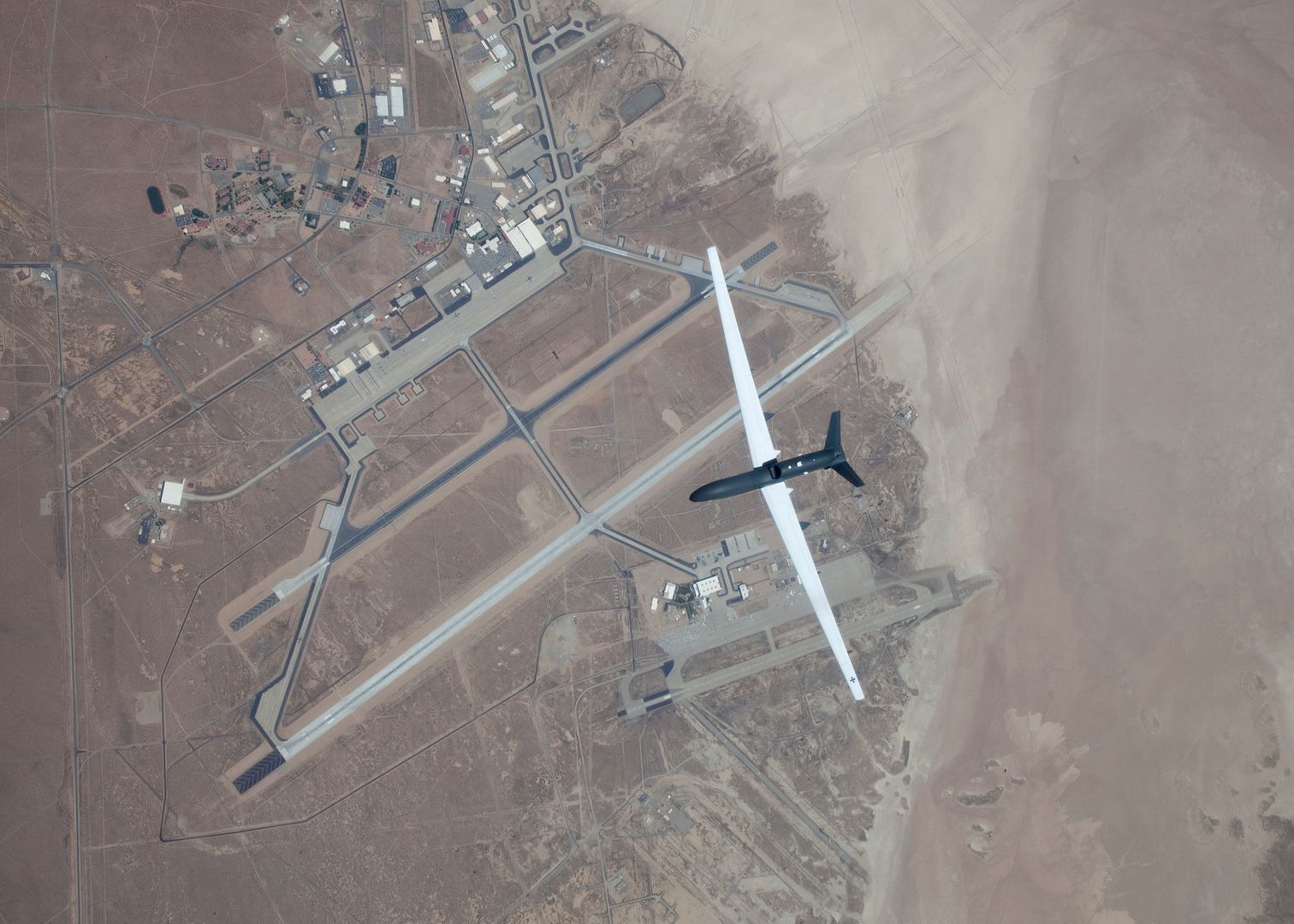
An F-35B Lightning II jet lands at Marine Corps Air Station Futenma, Okinawa, Japan, Nov. 27, 2018. The F-35B landed, refueled and took off for the first time at MCAS Futenma. The F-35B belongs to Marine Fighter Attack Squadron 121, Marine Aircraft Group 12, 1st Marine Aircraft Wing. An F-35B landing at MCAS Futenma demonstrates the air warfighting capability, operational flexibility and tactical supremacy that this platform brings to the Indo-Pacific region, our allies and our partners.(U.S. Marine Corps photo by Staff Sgt. Laura Gauna)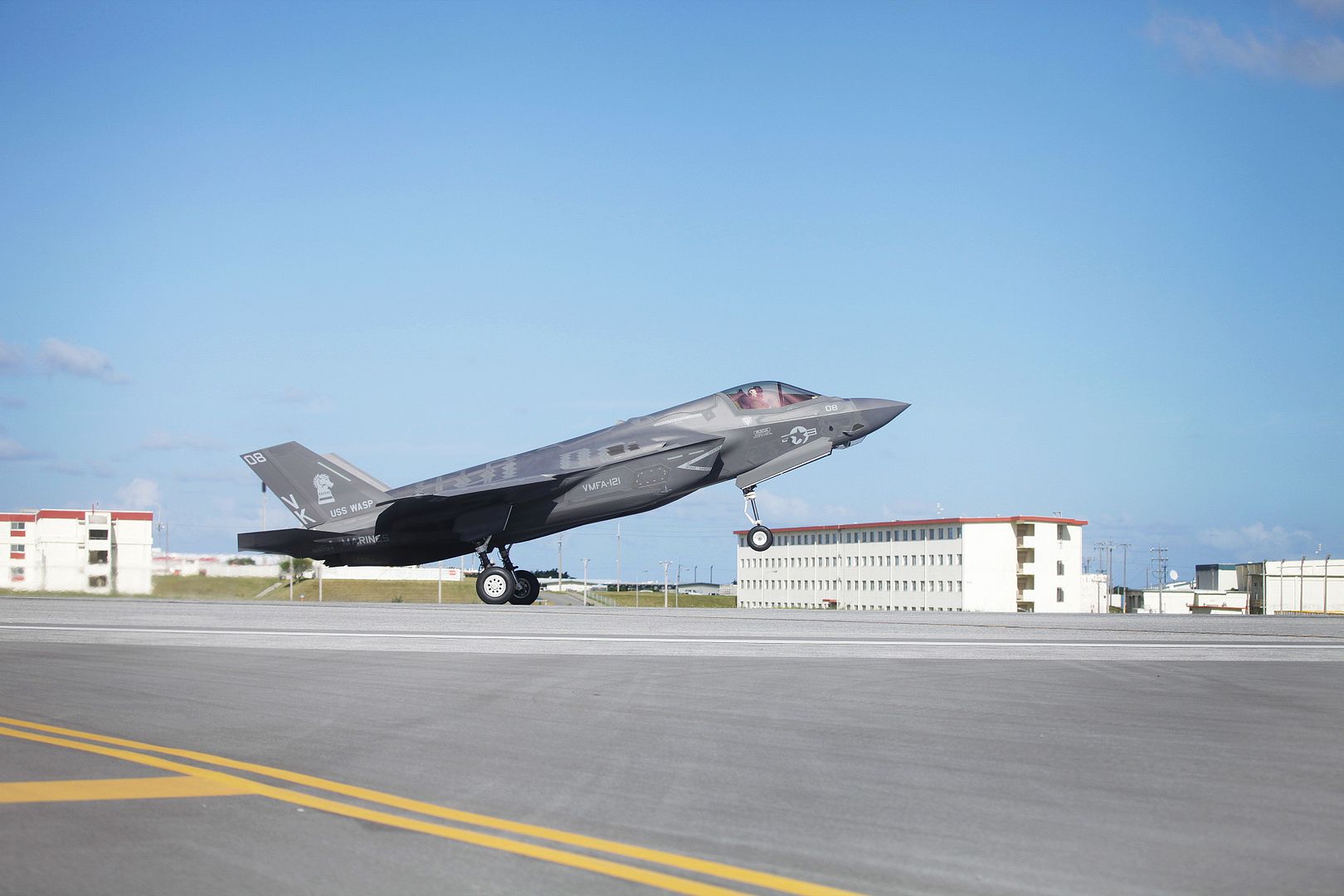
An F-35B Lightning II jet refuels at Marine Corps Air Station Futenma, Okinawa, Japan, Nov. 27, 2018. The F-35B landed, refueled and took off for the first time at MCAS Futenma. The F-35B belongs to Marine Fighter Attack Squadron 121, Marine Aircraft Group 12, 1st Marine Aircraft Wing. An F-35B landing at MCAS Futenma demonstrates the air warfighting capability, operational flexibility and tactical supremacy that this platform brings to the Indo-Pacific region, our allies and our partners. (U.S. Marine Corps photo's by Staff Sgt. Laura Gauna)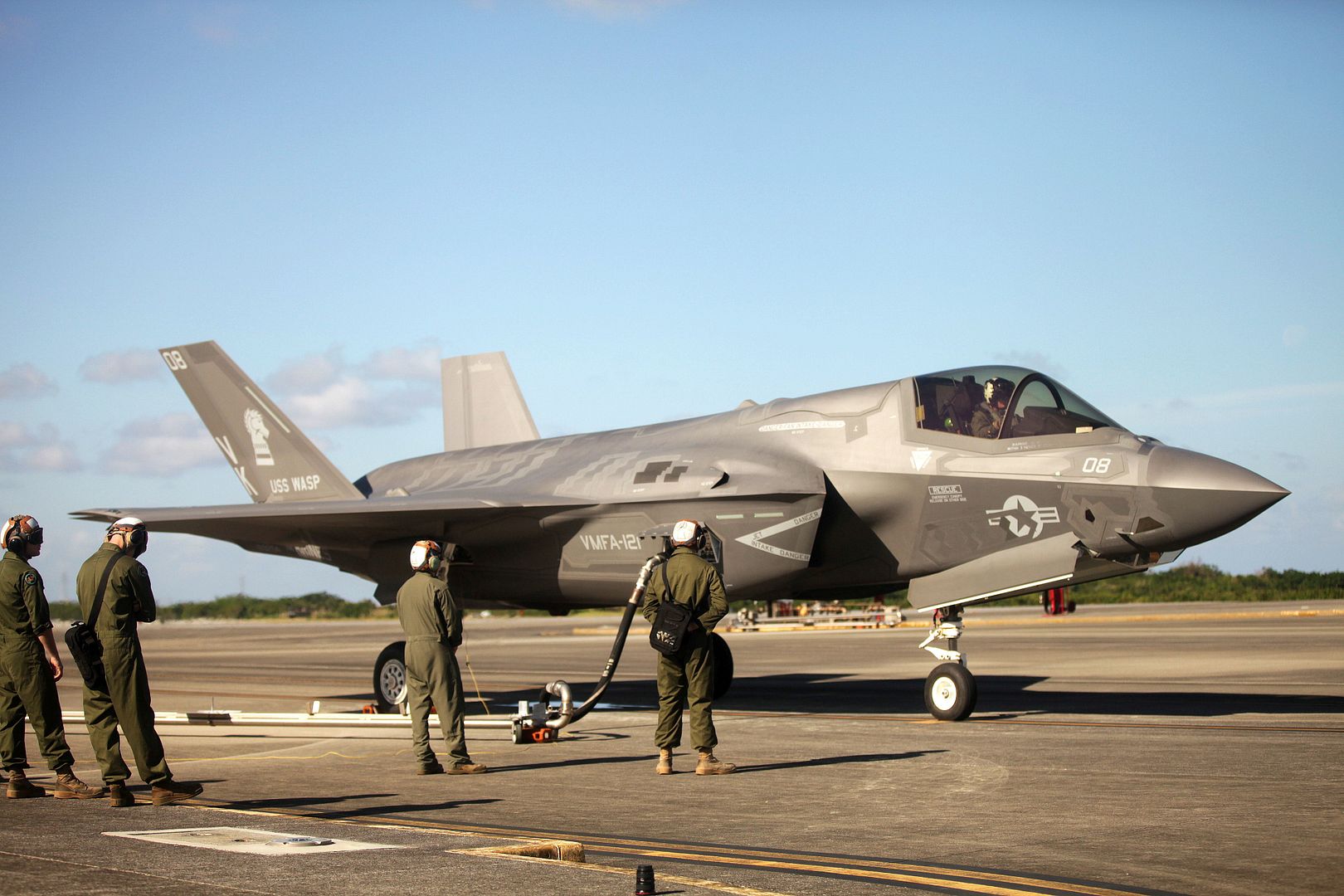

An F-35B Lightning II jet takes off at Marine Corps Air Station Futenma, Okinawa, Japan, Nov. 27, 2018. The F-35B landed, refueled and took off for the first time at MCAS Futenma. The F-35B belongs to Marine Fighter Attack Squadron 121, Marine Aircraft Group 12, 1st Marine Aircraft Wing. An F-35B landing at MCAS Futenma demonstrates the air warfighting capability, operational flexibility and tactical supremacy that this platform brings to the Indo-Pacific region, our allies and our partners. (U.S. Marine Corps photo by Staff Sgt. Laura Gauna)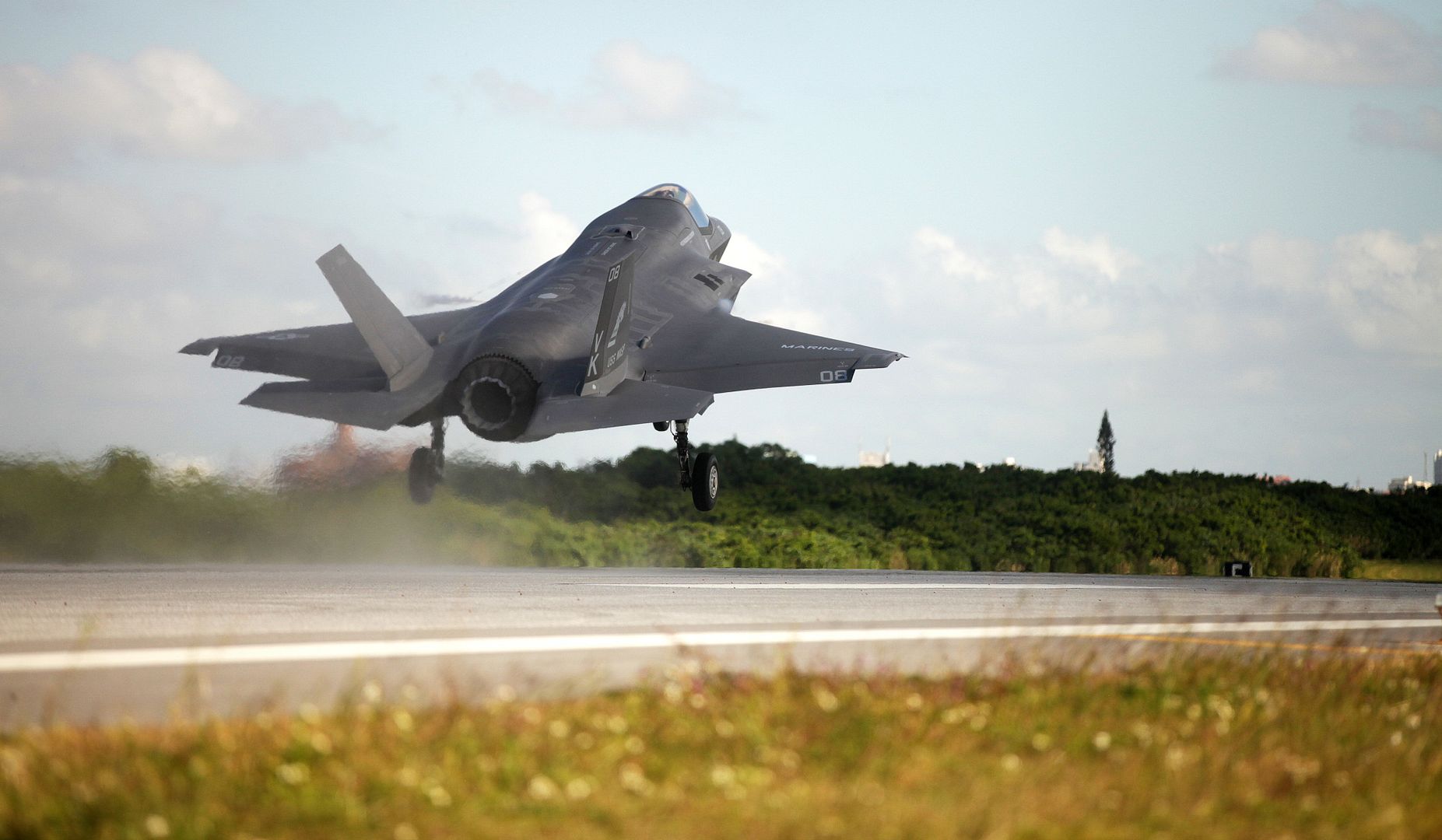
A French Dassault Rafale lands at Royal Air Force Lakenheath, England, in support of exercise POINTBLANK Nov. 25, 2018. The objective of the exercise is to prepare coalition warfighters for a highly contested fight against near-peer adversaries by providing a multi-dimensional battle-space to conduct advanced training in support of U.S. and U.K. national interests. (U.S. Air Force photo/ Tech. Sgt. Matthew Plew)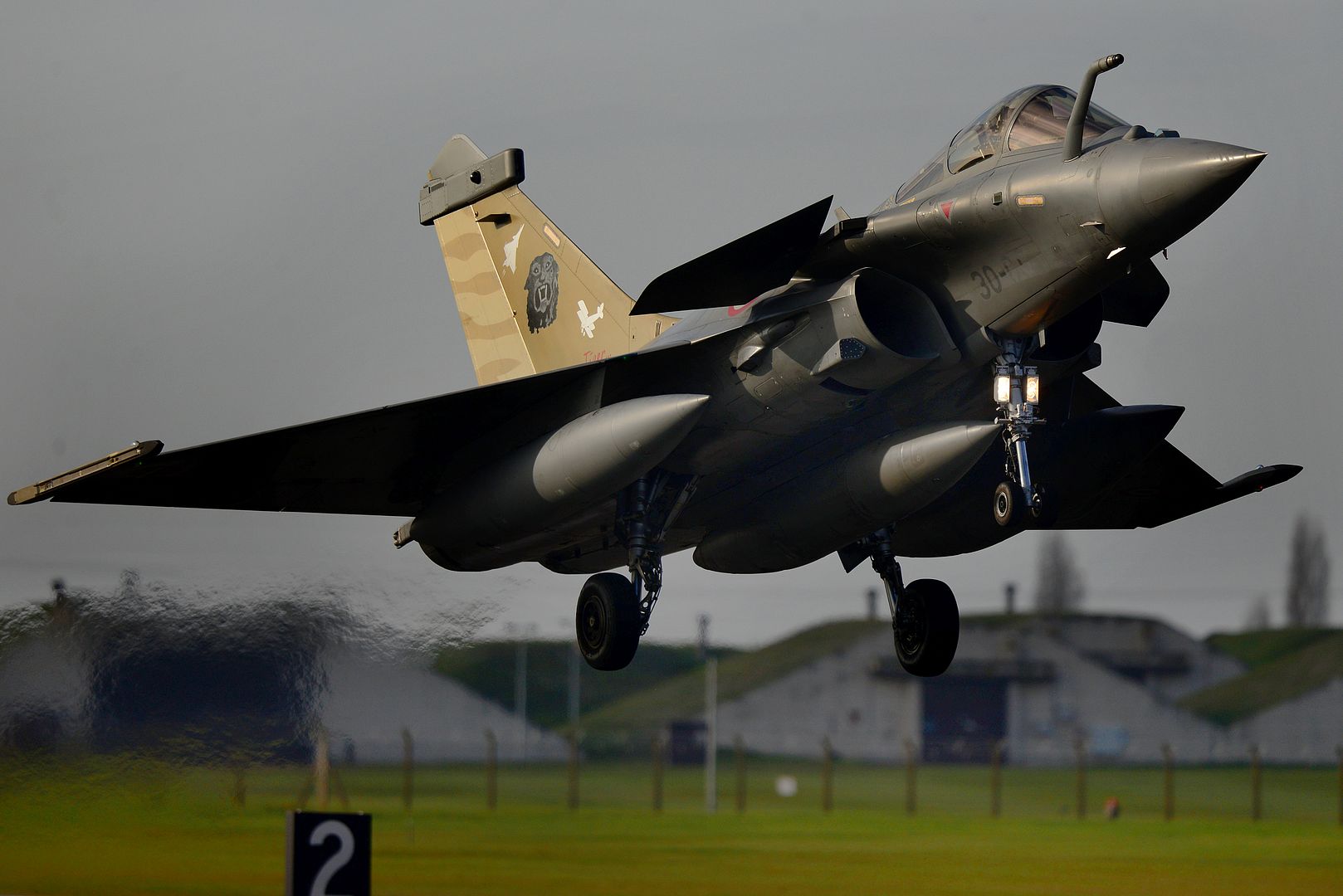
An F-15E Strike Eagle assigned to the 494th Fighter Squadron takes off for a training sortie at Royal Air Force Lakenheath, England, Oct. 26, 2018. The 494th trains regularly to ensure RAF Lakenheath brings unique air combat capabilities to the fight. (U.S. Air Force photo/ Tech. Sgt. Matthew Plew)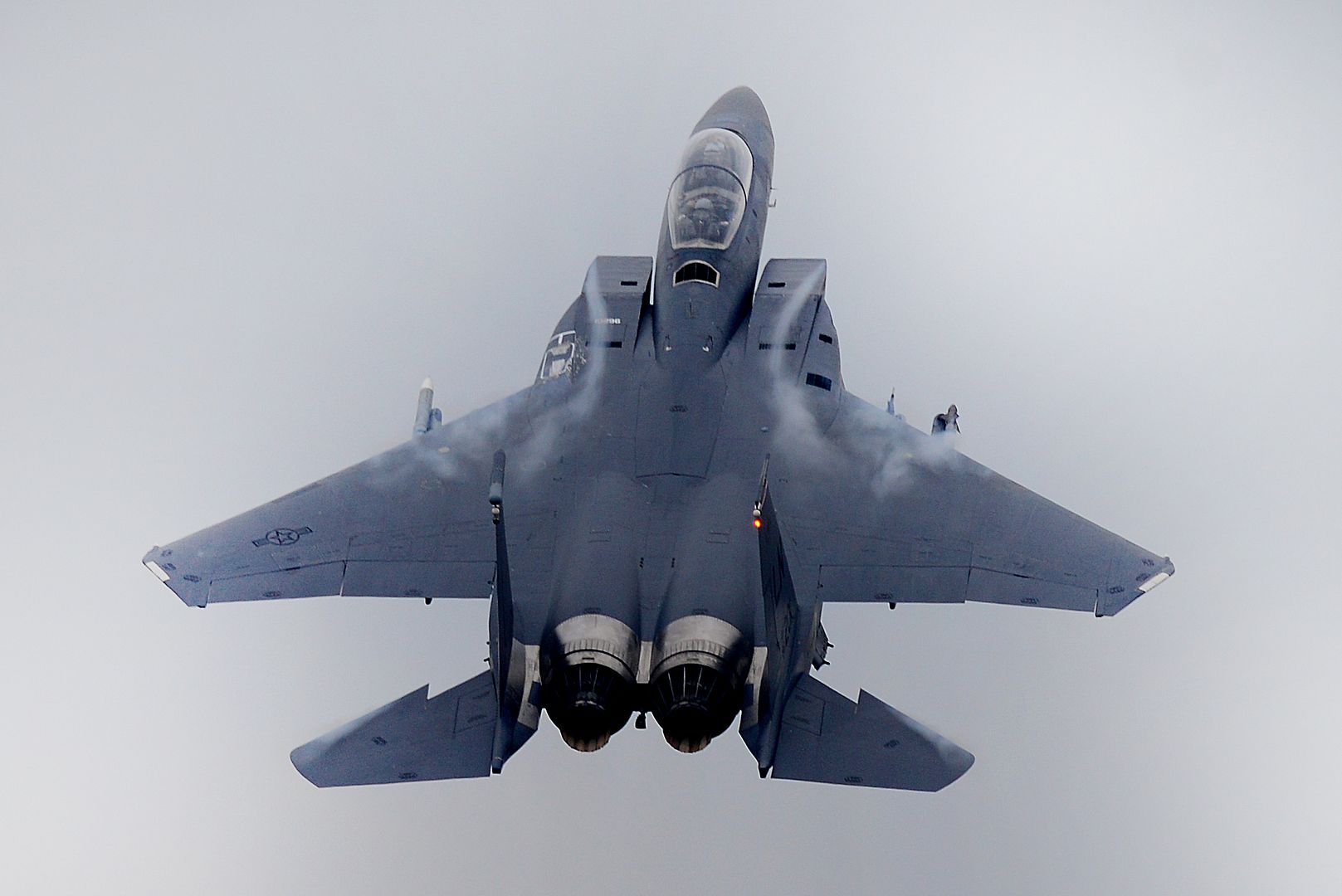
A Royal Air Force F-35B lands at Royal Air Force Lakenheath, England, in support of exercise POINTBLANK Nov. 26, 2018. The objective of the exercise is to prepare coalition warfighters for a highly contested fight against near-peer adversaries by providing a multi-dimensional battle-space to conduct advanced training in support of U.S. and U.K. national interests. (U.S. Air Force photo/ Tech. Sgt. Matthew Plew)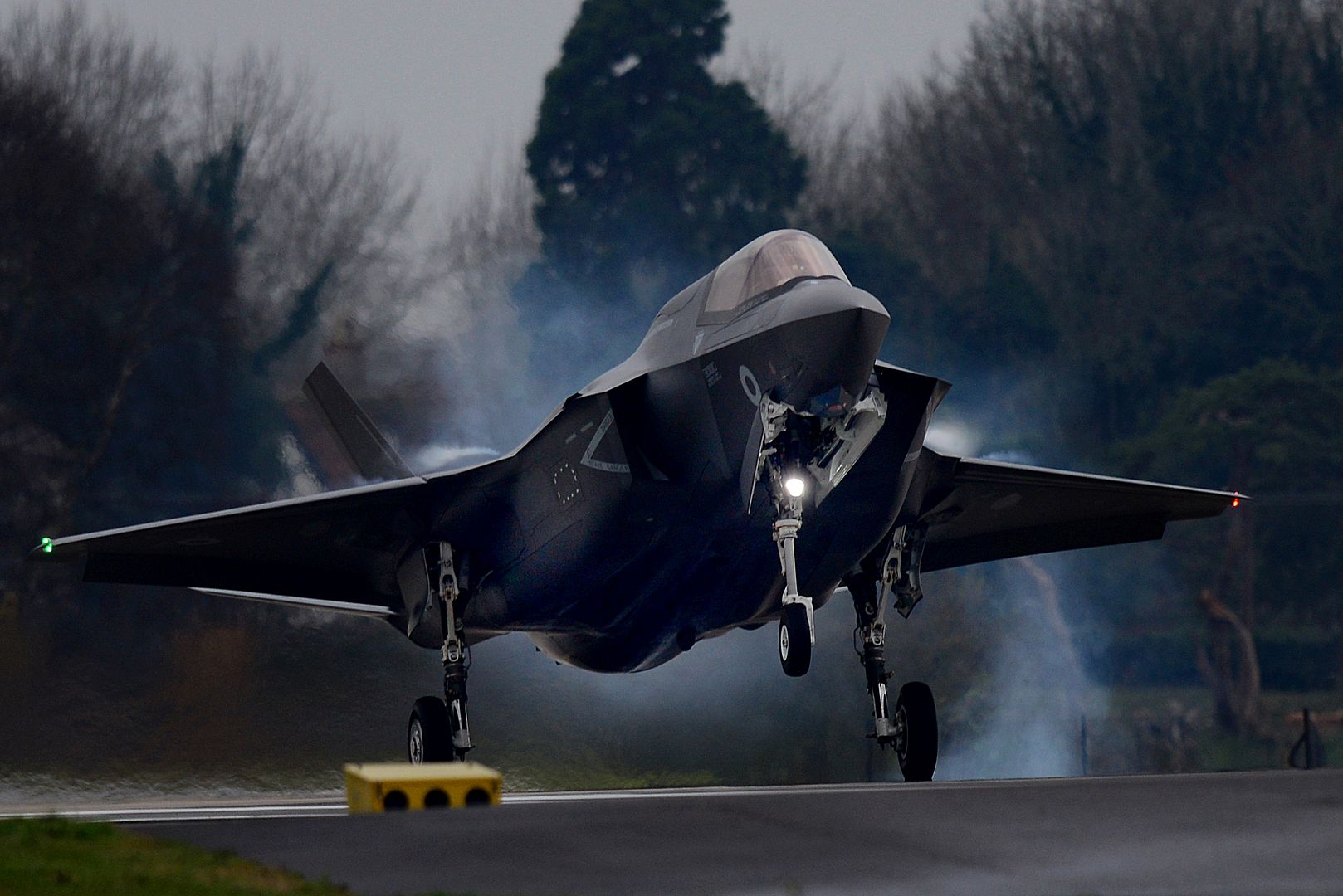
A Royal Air Force F-35 Lightning II, left, U.S. Air Force F-15E Strike Eagle, center, and French air force Dassault Rafale fly behind a U.S. Air Force KC-135 Stratotanker assigned to the 100th Air Refueling Wing during Exercise Point Blank over the English Channel, Nov. 27, 2018. Training with NATO allies like the U.K. and France improves interoperability and demonstrates the United States? commitment to regional security. Exercise Point Blank also represents an opportunity to enhance interoperability and integration between allied fourth and fifth-generation fighter aircraft. (U.S. Air Force photo by Senior Airman Luke Milano)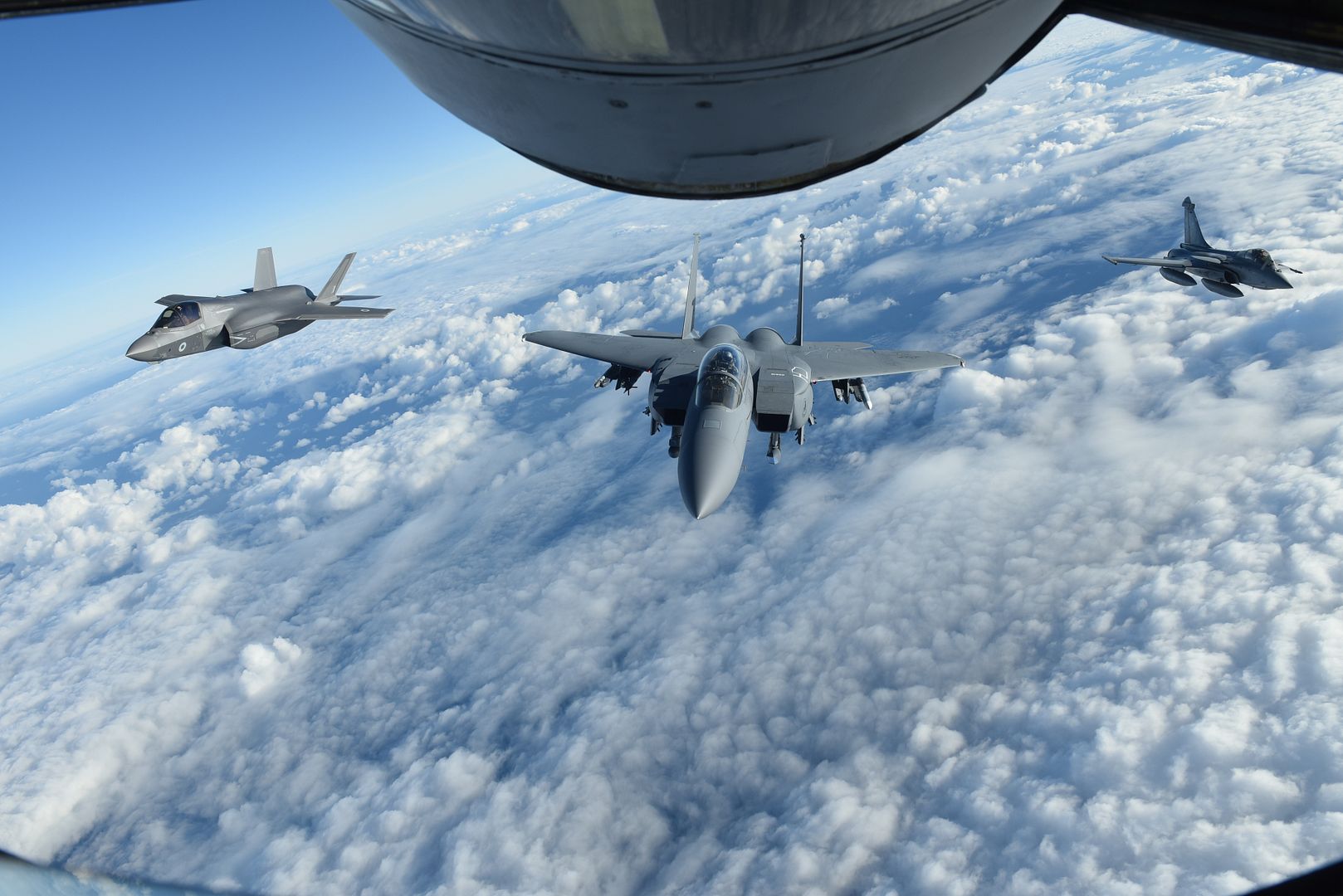
A Royal Air Force Typhoon takes off during Point Blank 18-3 at Royal Air Force Coningsby, Nov. 27, 2018. Over 40 aircraft from the U.S. Air Force, Royal Air Force and French Air Force participated in this tri-lateral exercise. (Copywriter RAF Coningsby)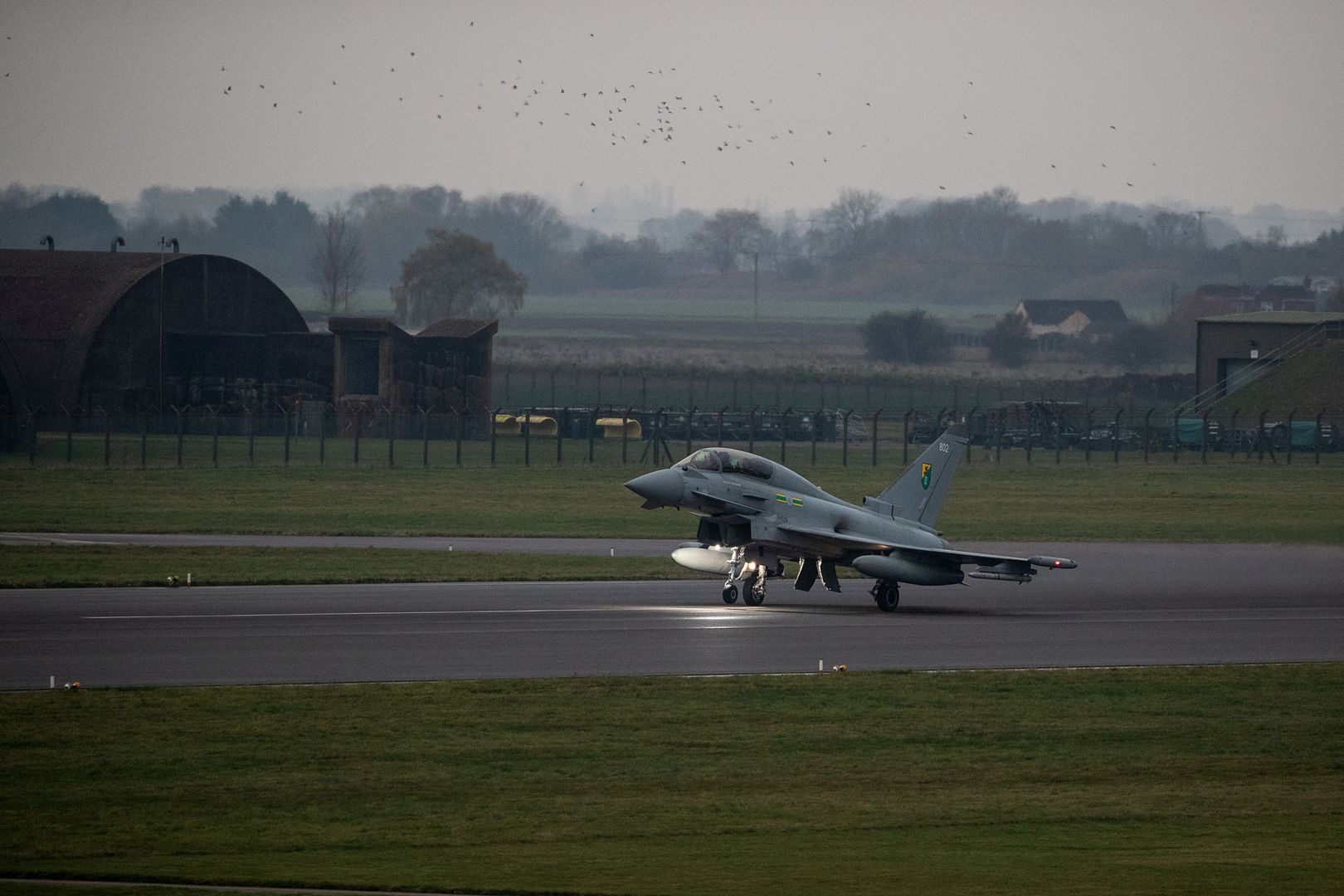
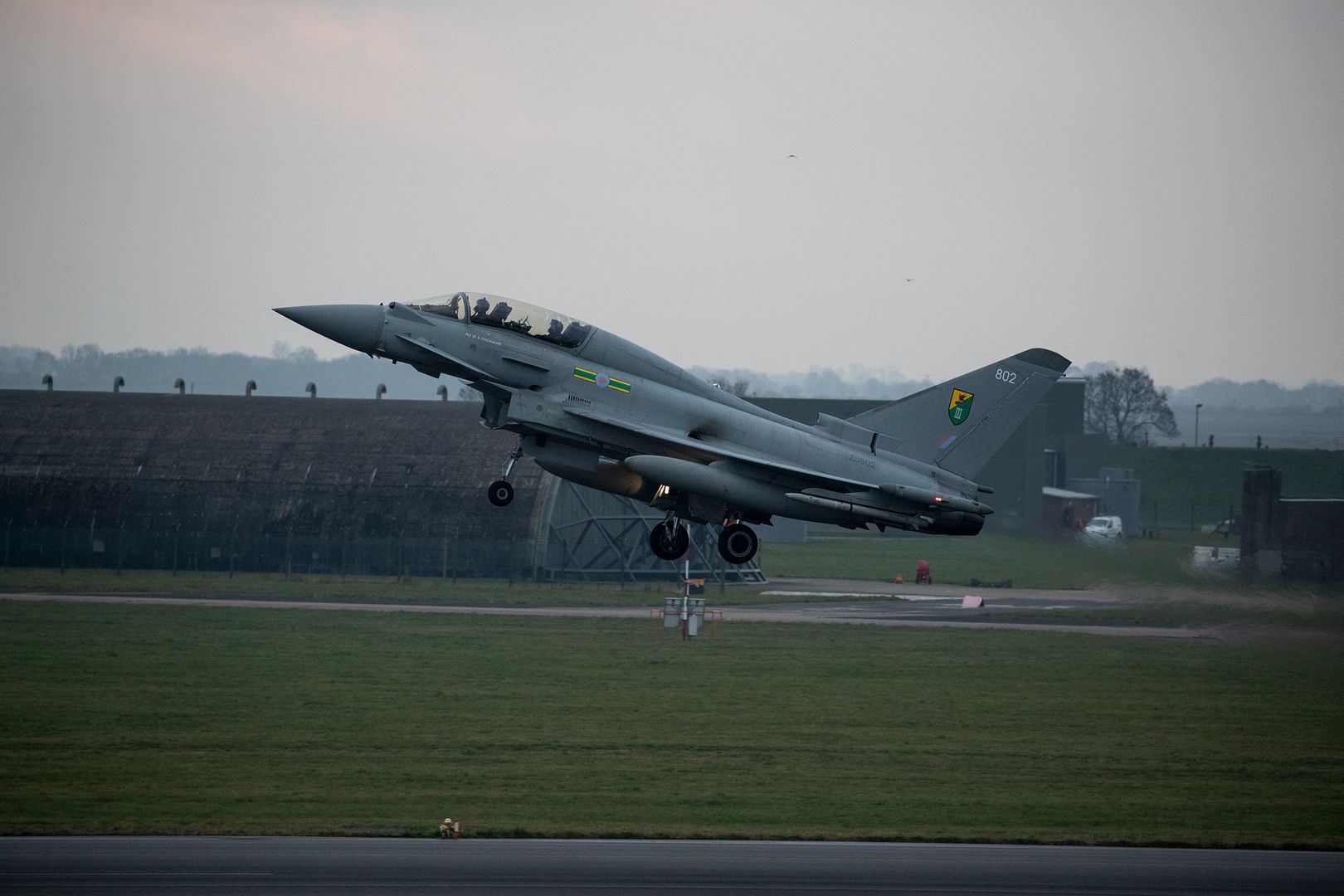
A French Air Force Rafale from Mont de Marsan, France, takes off during Point Blank 18-3 at RAF Lakenheath, Nov. 27, 2018. Over 40 aircraft from the U.S. Air Force, Royal Air Force and French Air Force participated in this tri-lateral exercise. (U.S. Air Force photo's by Staff Sgt. Alex Echols)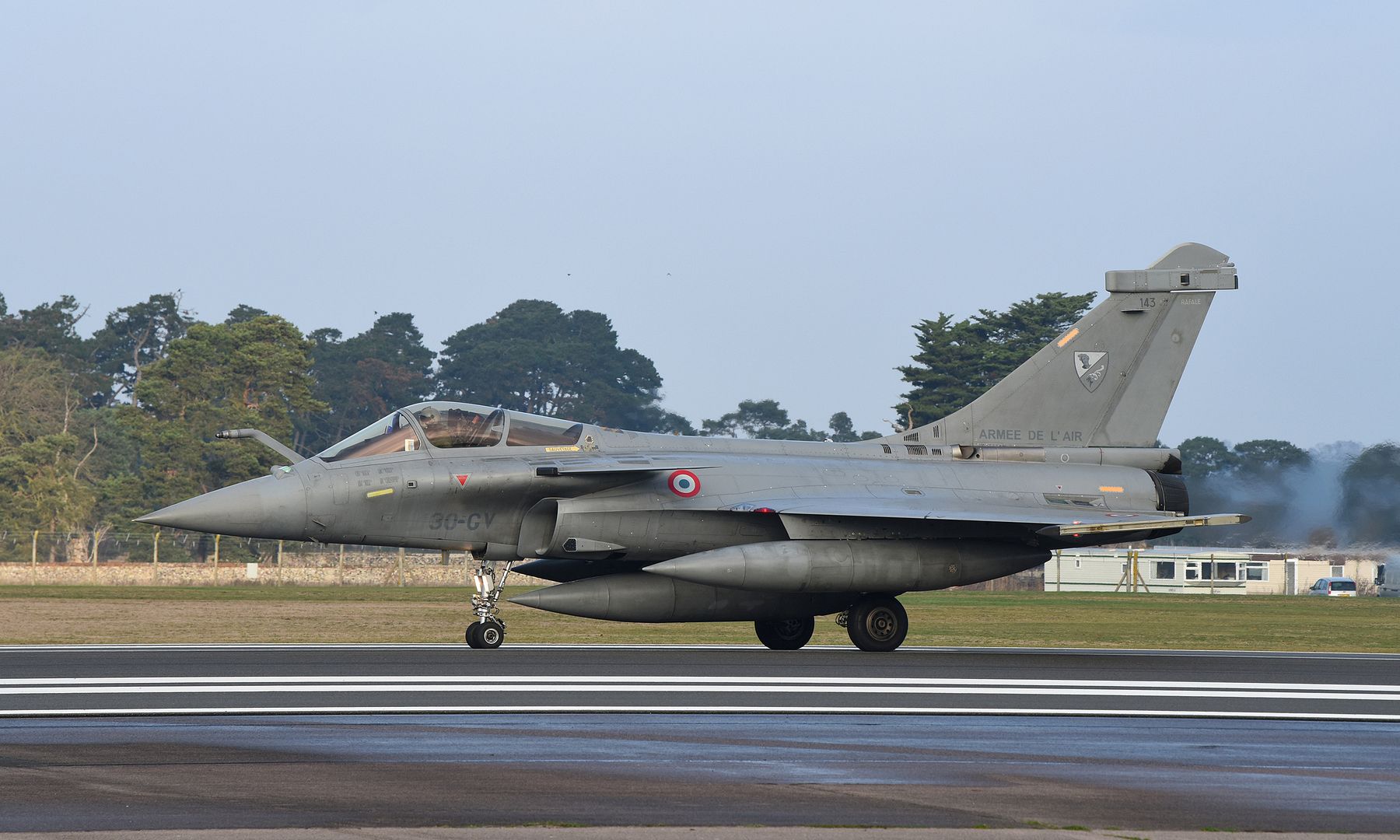
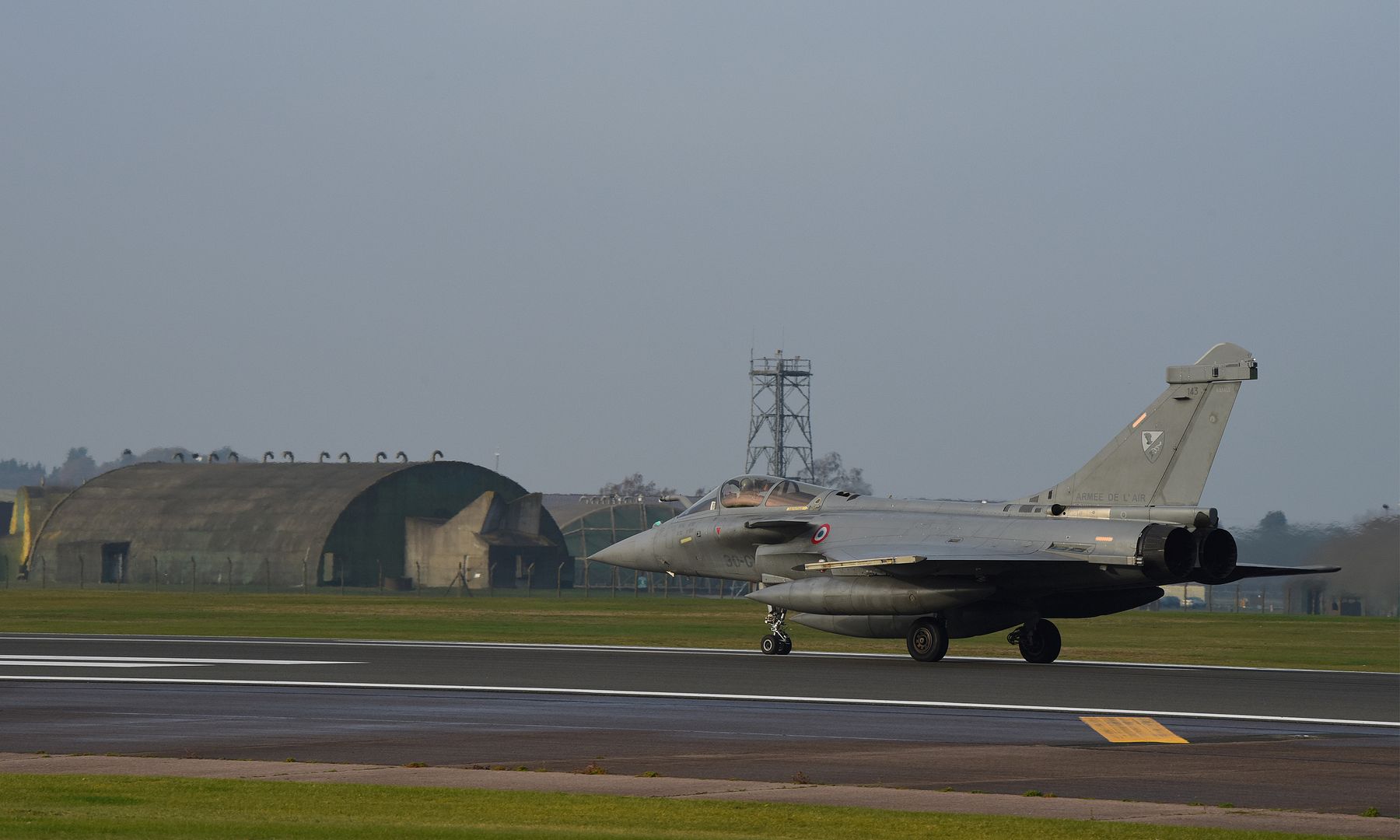
U.S. Air Force F-15E Strike Eagle's from Royal Air Force Lakenheath take off during Point Blank 18-3 at RAF Lakenheath, Nov. 27, 2018. This Point Blank exercise represents an opportunity to enhance interoperability between NATO allies with an emphasis on fourth and fifth-generation fighter aircraft integration. (U.S. Air Force photo's by Staff Sgt. Alex Echols)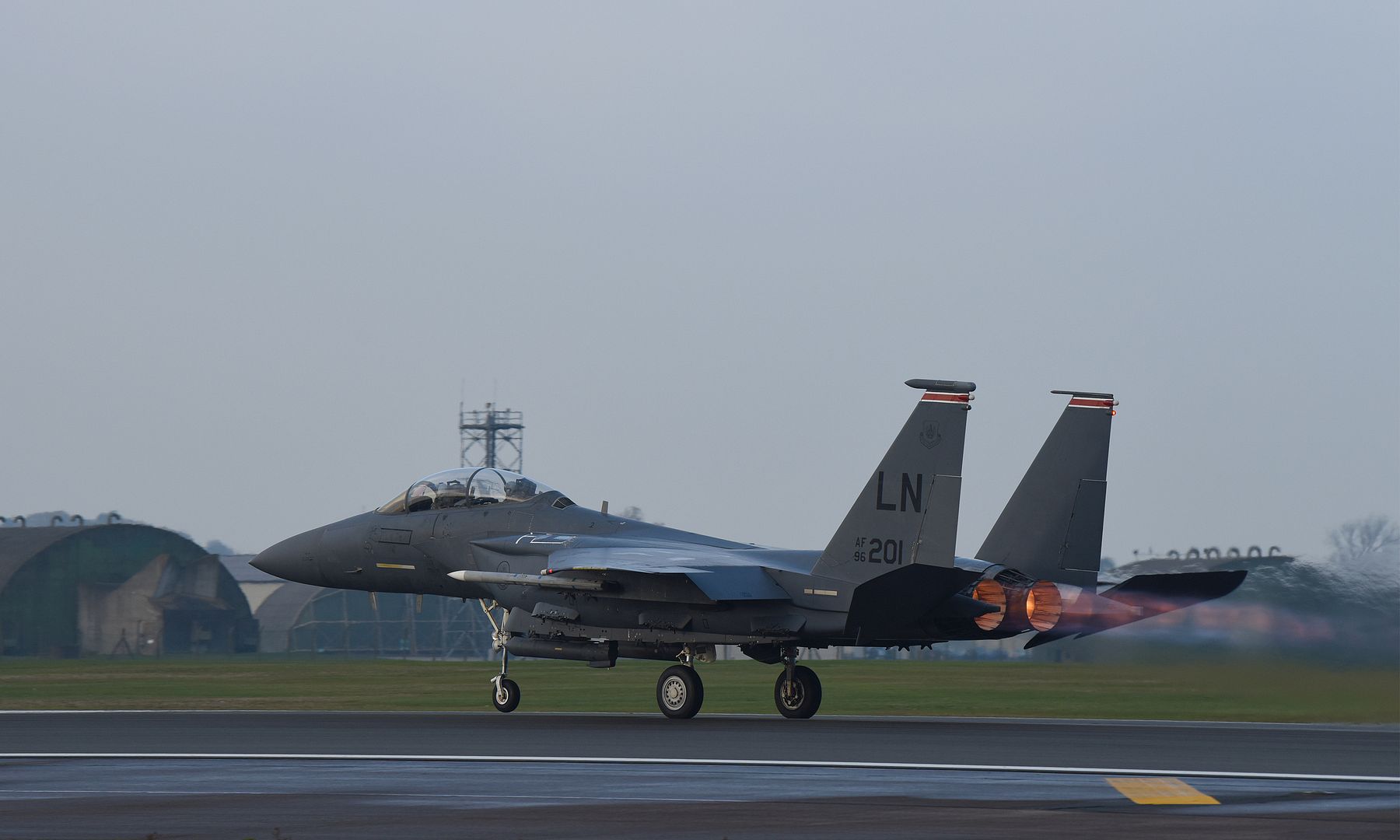
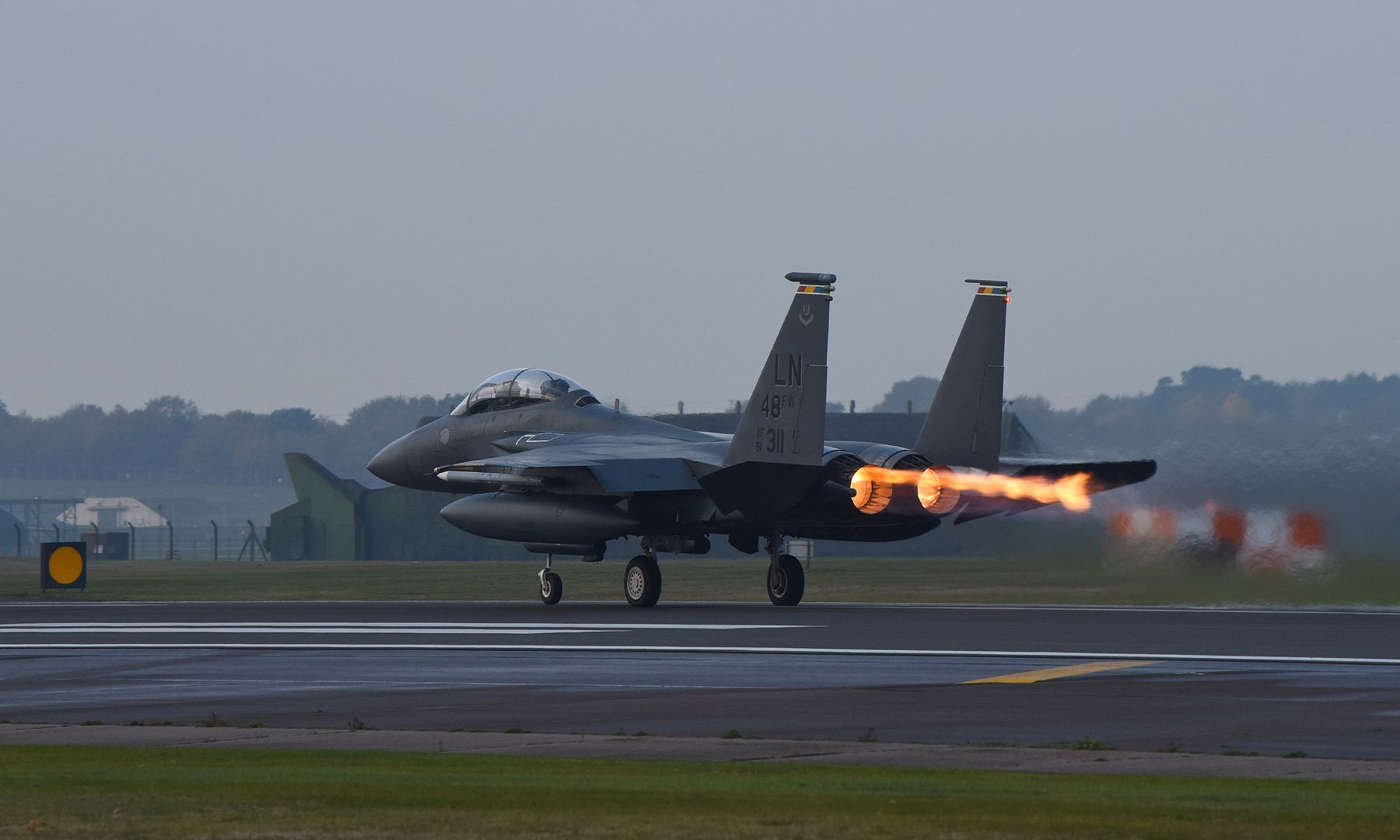
A U.S. Air Force F-15E Strike Eagle from Royal Air Force Lakenheath, a Royal Air Force Voyager from RAF Brize Norton, a RAF F-35B Lightning II from RAF Marham and a French Air Force Rafale from Mont de Marsan, France, fly in formation during Point Blank 18-3, Nov. 27, 2018. This Point Blank exercise represents an opportunity to enhance interoperability between NATO allies with an emphasis on fourth and fifth-generation fighter aircraft integration. (U.S. Air Force Courtesy Photo from 494th Fighter Squadron)
An F-15E Strike Eagle from the 391st Fighter Squadron, 366th Fighter Wing, Mountain Home Air Force Base, Idaho, sits on the Tinker AFB flight line after arriving here during a cross-country flight Nov. 26, 2018. Tinker is the home of depot-level maintenance for the Pratt & Whitney F100-PW-229 Increased Performance Engines which power this Strike Eagle. The aircraft lacks the conformal fuel tanks on the fuselage and underwing hardpoints before being inducted for heavy maintenance. (U.S. Air Force photo/Greg L. Davis)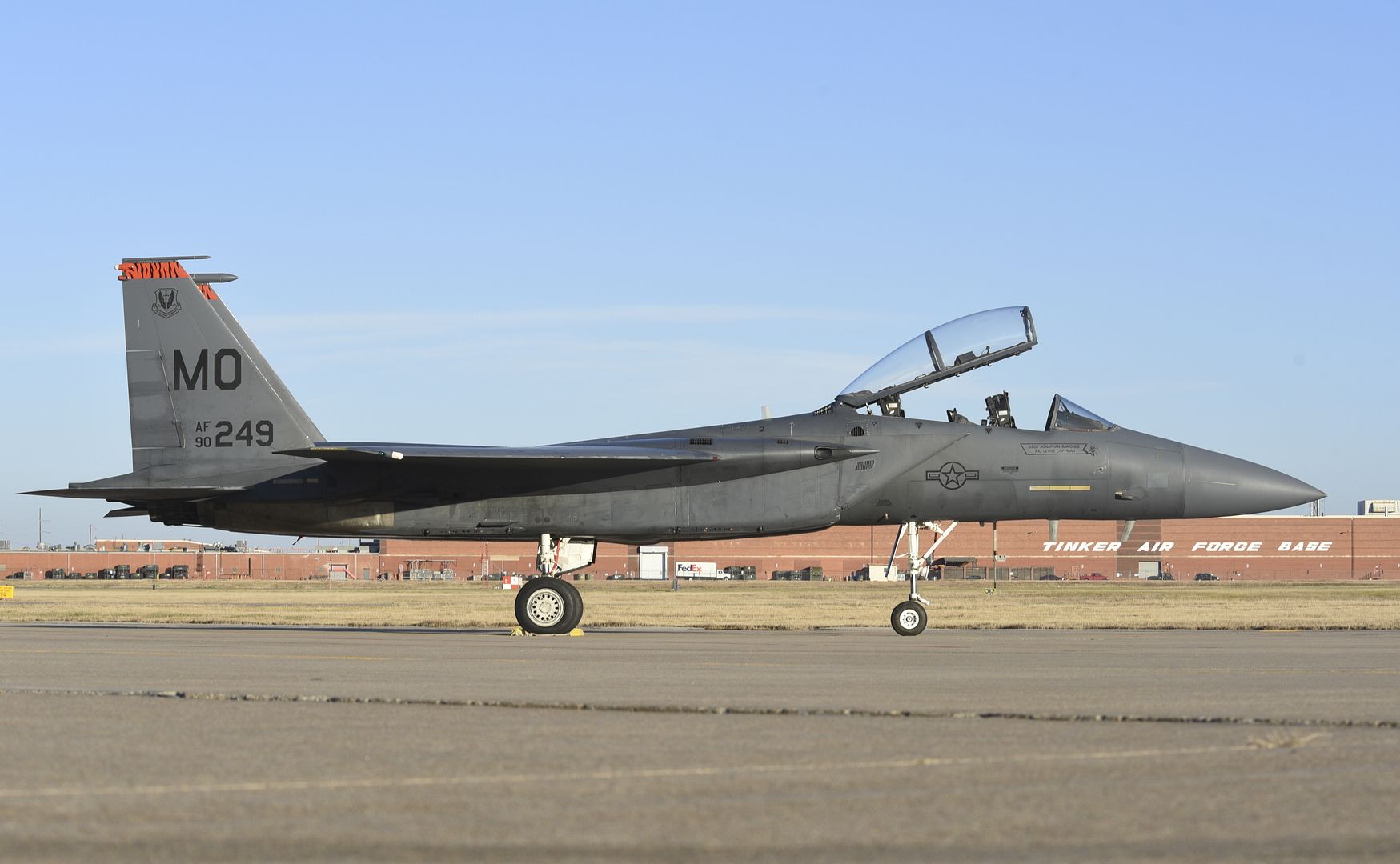
Blue Angles #7 F/A-18 Hornet arrives at Tinker Air Force, Oklahoma on Nov. 26, 2018, to conduct a site-survey and briefing of key leaders as part of their planning process for the 2019 Start Spangled Salute air show year. The Blue Angles will be the featured performer for Tinker's Star Spangled Salute air show scheduled for June 1-2, 2019. (U.S. Air Force photo's/Greg L. Davis)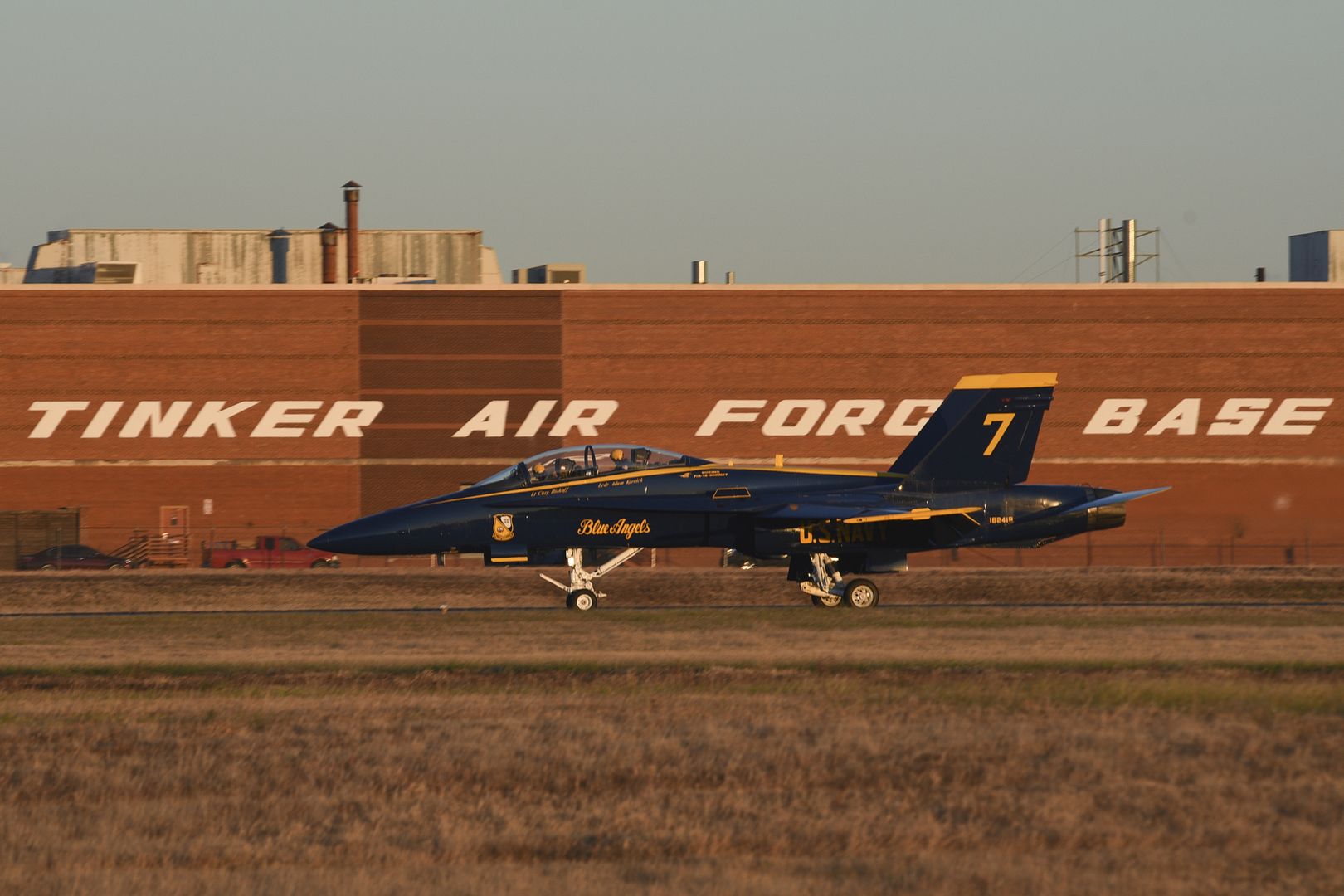
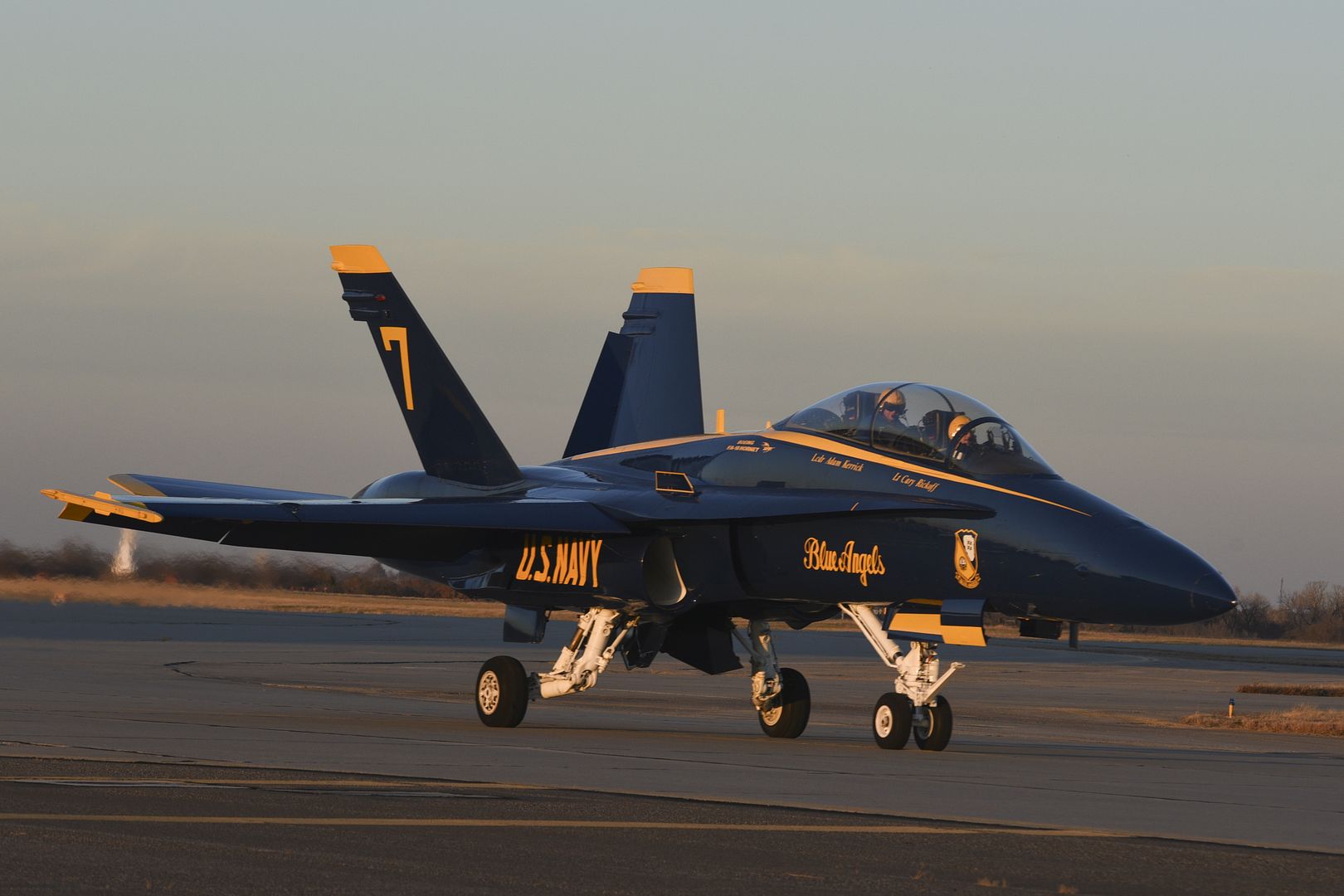
SAIPAN, Northern Mariana Islands -- On Oct. 25, Daverrick Camacho, a firefighter from Saipan, woke-up to a nightmare turned reality. Everything he worked toward was wiped off the face of the earth. The place he called home and held family gatherings was nothing more than darkly twisted debris, scattered across the front lawn.
Camacho was grateful that his family was safe, but soon realized they survived Super Typhoon Yutu. The strongest tropical cyclone ever to pass over the Commonwealth of the Northern Mariana Islands (CNMI) Saipan and Tinian, equivalent to a Category 5 hurricane.
As he assessed the damages, he was sickened to his stomach. He lost pictures of deceased loved-ones and family heirlooms that were irreplaceable. The burden of the world felt like 200-pound weights mounted on his shoulders.
He gathered himself and walked to a tent his family pitched and heard, ?Dad I guess today is a great day for camping.? Everyone laughed and something beautiful happened in the darkness. He noticed a sign his kids painted that read ?CNMI We Got This!?
That same day, the Air Force called their ?Ace in the Hole? unit to support relief operations in Saipan and Tinian. Before the call, the unit was performing humanitarian assistance operations in Balikpapan and Palu, Indonesia. This was in response to a 7.5 earthquake and tsunami that left 2,000 dead and 435,000 displaced.
The 36th Contingency Response Group from Andersen Air Force Base, Guam has been on back-to-back humanitarian and relief missions since Oct. 4 encompassing four islands.
?It's nice to see the military respond so fast, it?s like having an airshow in our backyard,? said Camacho.
Who We Are
The 36th CRG incorporates more than 30 different jobs into one close-knit team. It is a rapid-deployable unit designed at the initiative of Air Force leadership to be a "first-in" force to secure an airfield and establish and maintain airfield operations.
The group is comprised of the 36th Mobility Response Squadron, the 554th RED HORSE Squadron, the 644th Combat Communications Squadron, and the 736th Security Forces Squadron.
?I know I have asked a lot from our guys, especially with the 24-hour notices we received, but I also know what we're capable of and our diverse skill sets,? said Col. Daniel Roesch, 36th CRG commander. ?Our work could mean the difference between life or death.?
A Small Footprint with Huge Impact
Since Oct 5, the 36th CRG has managed airlift for 211 sorties, 1,427 passengers, and partnered with 14 countries to transport 702 displaced people to safety. They have offloaded and downloaded 15 million pounds of humanitarian and recovery supplies for the U.S. Agency for International Development (USAID), and Federal Emergency Management Agency (FEMA) missions so far.
?Experiences like these remind me that we have the best Airmen in the Air Force in the 36th CRG,? said Chief Master Sgt. William Hebb, 36th CRG superintendent.
All supplies delivered to the four islands were coordinated, directed, packed, offloaded and downloaded by 36th CRG members. For the missions to be successful each person was required to not only know their job but the person?s job to their left and right.
They train and prepare for worst-case scenarios, such as someone getting sick or needing to forward deploy. The built-in redundancy is practiced at home station to not only make the member more diverse but ensures the mission will not be affected.
A Mixture Of Happy And Sad Tears - We?re All Human
At first glance, you would never know these men and women completed such monumental tasks. At closer look, their eyes, faces, and hands reveal the truth. Destruction, heartache, wind burns, sun blisters, fatigue and working 12-14 hours shifts in 100-degree weather, took a physical and emotional toll.
No celebrations, complaints or at-a-boys, but instead they showed humility, military bearing and razor-sharp focus. On a few occasions, members had tears in their eyes after they were told thank you by people who lost everything.
?When I look at the news or I meet people affected by the typhoons, earthquakes, and tsunamis, I think about my family, and I get emotional because this can happen to anyone,? said Master Sgt. Jaime Almquist, 36th Mobility Response Squadron contingency response team chief. ?If I must work an 18-hour shift to get people the supplies they need, I?m honored to do whatever I can because they?re now my family, and it?s our responsibility.?
Hayden, an 8-year-old from Yona, Guam and neighbor of one of the 36 CRG members was inspired to raise money for people in Saipan after hearing about their humanitarian missions. On Nov. 15, Haden raised 200 dollars selling lemonade in front of her house.
?I hope the money goes to the schools and the college that got destroyed,? said Haden. ?I?m sorry your island went through this but remember people like me are here to help.?
What the Future Holds ? 36th CRG SEND ME
At any time or anyplace ?SEND ME? is belted at the top of their lungs immediately after someone says ?36th CRG.? It?s not just a chant to inspire troops, but a request. Each member in the group wants to contribute to every mission and is disappointed when they?re told to take a knee.
?One of my priorities as commander is to either have myself, squadron commanders or my group chief out with our teams when possible,? said Roesch. ?I know we have strong leadership through our officer ranks down to our youngest Airmen, but our collective teamwork allows us to tackle objectives and readjust to obstacles we?ve faced.?
With the backing and support from USAID, FEMA, United States Indo-Pacific Command, Pacific Air Forces and 36th Wing, the sky is the limit for humanitarian relief operations.
2nd Lt. Eric Baldwin, 36th Civil Engineering Squadron pavement engineer, augmented aerial porters assigned to the 36th MRS while in Indonesia. He learned pallet building and fully integrated with the team. Roesch recognized Baldwin as a superior performer for propelling the mission with his hard work.
Staff Sgt. Kelsey Cook, 36th Force Support Squadron career development supervisor, and Senior Airman Kelby Hernandez, 36th Comptroller Squadron budget analyst, are few of the many members from the 36th Wing working with the 36th CRG supporting operations in Saipan.
Haden and many others highlight the fact it?s rarely a solo operation, but a joint, multinational and interagency collaboration. No one can predict the future, but selfless, dedicated Airmen from the 36th CRG has proven time and time again that they?re ready for any task or mission.
There?s evidence of this, Camacho and his family have taken to rebuilding what they?ve lost.
?One day at a time, we?re slowly transitioning from survivor mode,? said Camacho. ?My family is healthy, and we now have FEMA tents and running water. Thank you all for leaving your family to help mine.?
36th Contingency Response Group members from Andersen Air Force Base, Guam offload relief supplies from a U.S. Air Force C-130J Super Hercules from the 374th Airlift Wing at Yokota Air Base, Japan in Saipan, Commonwealth of the Northern Mariana Islands (CNMI) Nov. 1, 2018. In response to Super Typhoon Yutu, 36th CRG members are supporting recovery efforts alongside CNMI?s civil and local officials. (U.S. Air Force photo by Master Sgt. JT May III)
-
6 years agoWed Nov 28 2018, 10:42pm
 Main AdminA French Air Force Rafale from Mont de Marsan, France, takes off during Point Blank 18-3 at RAF Lakenheath, Nov. 27, 2018. This Point Blank exercise represents an opportunity to enhance interoperability between NATO allies with an emphasis on fourth and fifth-generation fighter aircraft integration. (U.S. Air Force photo's by Airman 1st Class Christopher S. Sparks)
Main AdminA French Air Force Rafale from Mont de Marsan, France, takes off during Point Blank 18-3 at RAF Lakenheath, Nov. 27, 2018. This Point Blank exercise represents an opportunity to enhance interoperability between NATO allies with an emphasis on fourth and fifth-generation fighter aircraft integration. (U.S. Air Force photo's by Airman 1st Class Christopher S. Sparks)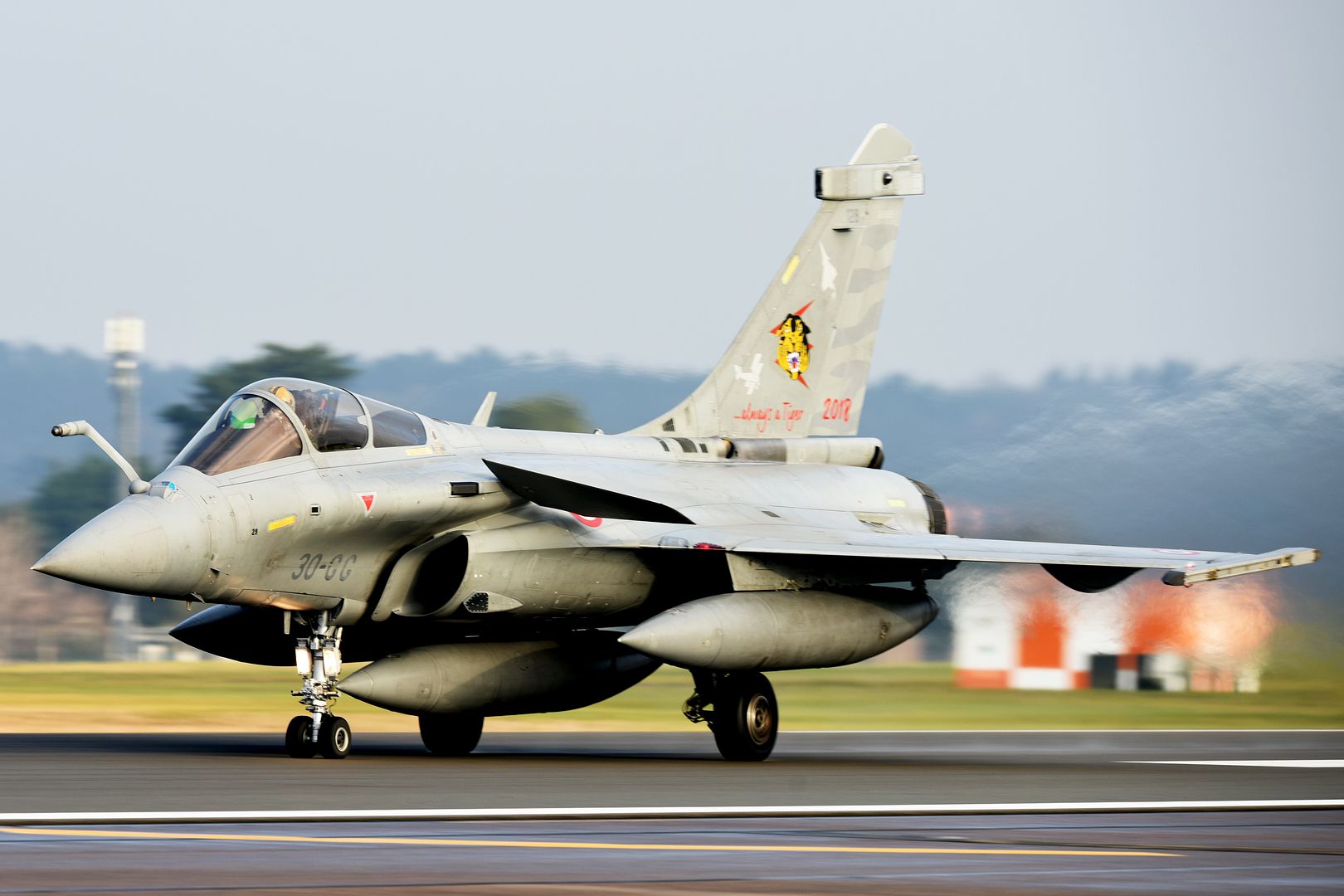
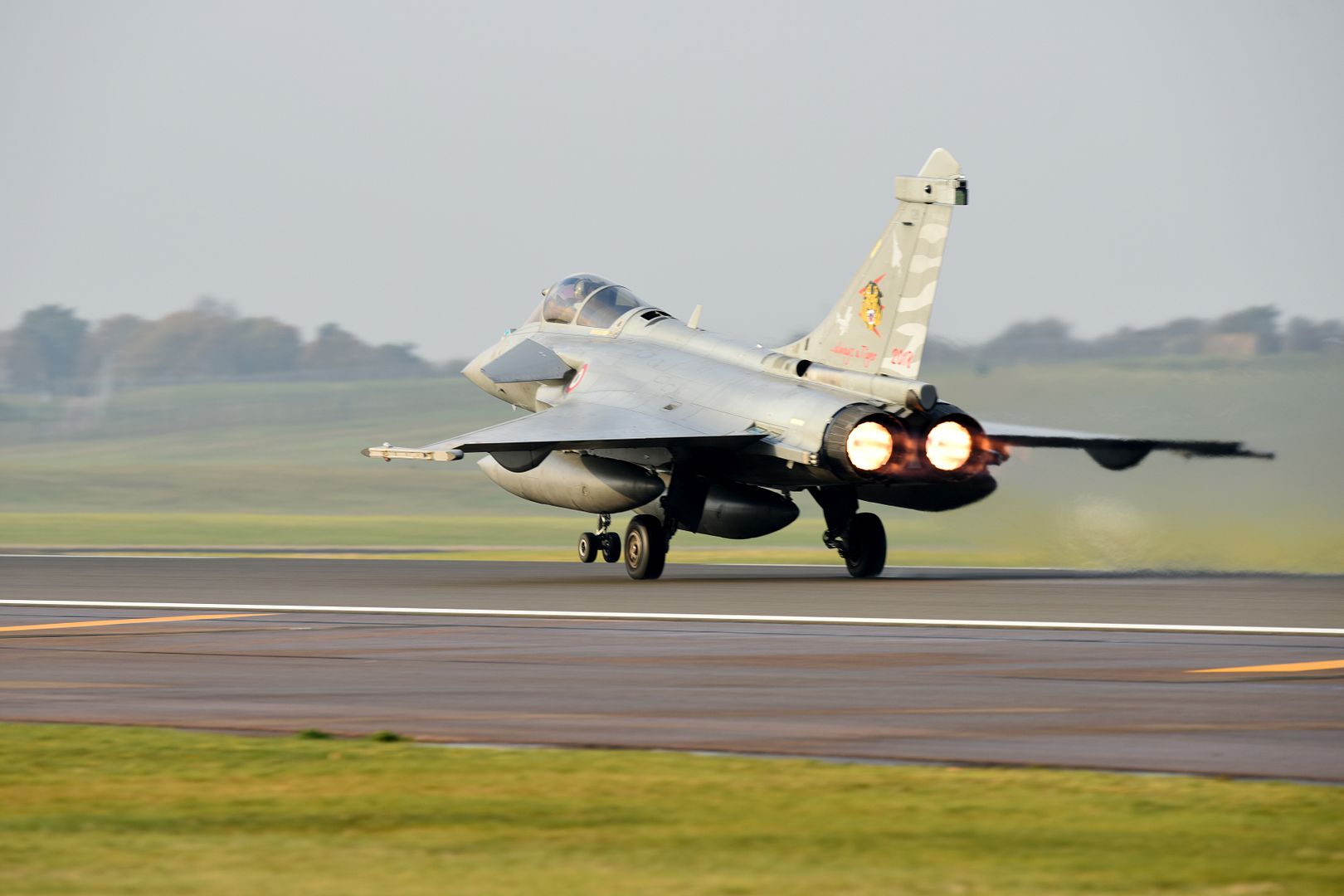
U.S. Air Force F-15E Strike Eagle's from Royal Air Force Lakenheath take off during Point Blank 18-3 at RAF Lakenheath, Nov. 27, 2018. This Point Blank exercise represents an opportunity to enhance interoperability between NATO allies with an emphasis on fourth and fifth-generation fighter aircraft integration. (U.S. Air Force photo's by Airman 1st Class Christopher S. Sparks)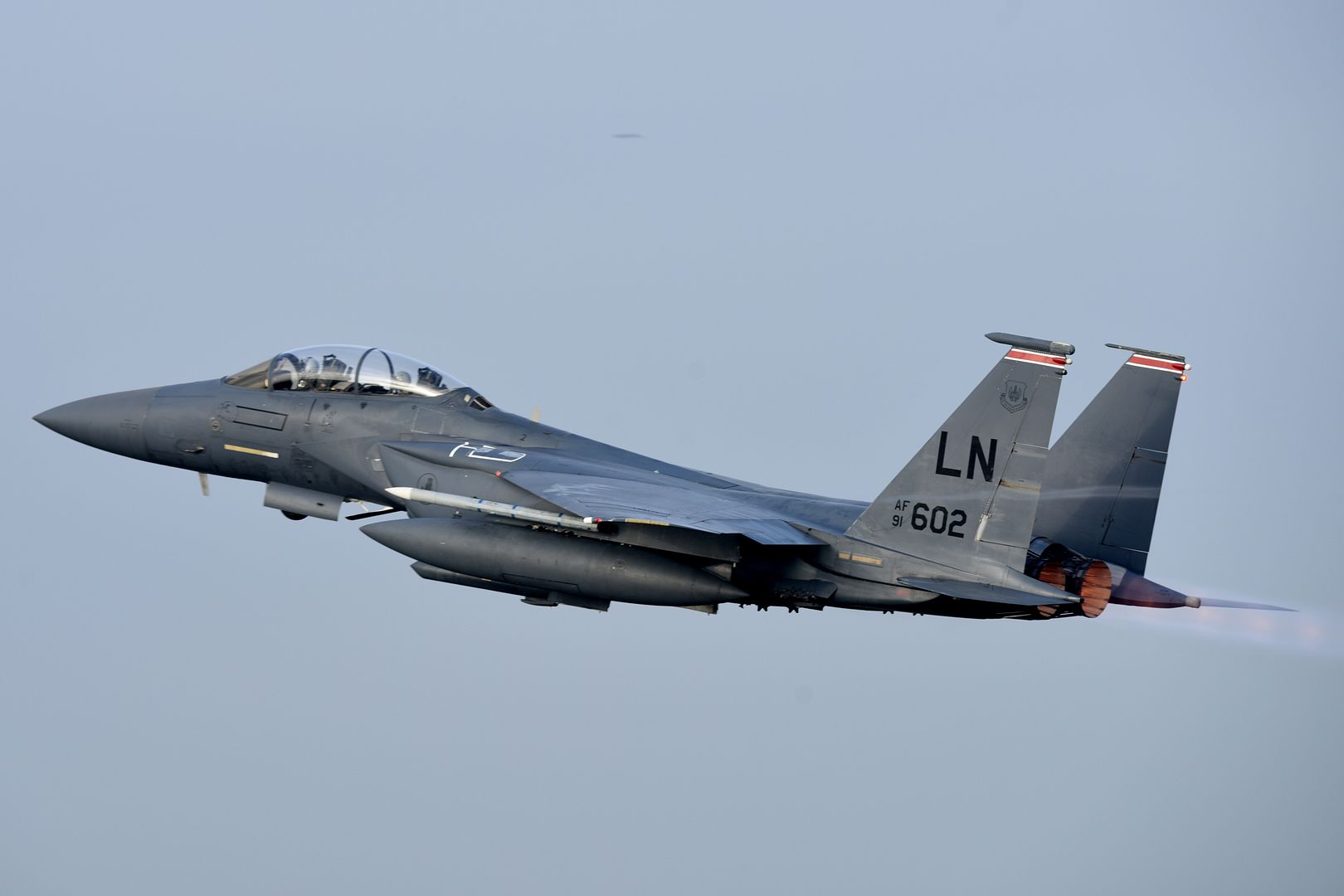
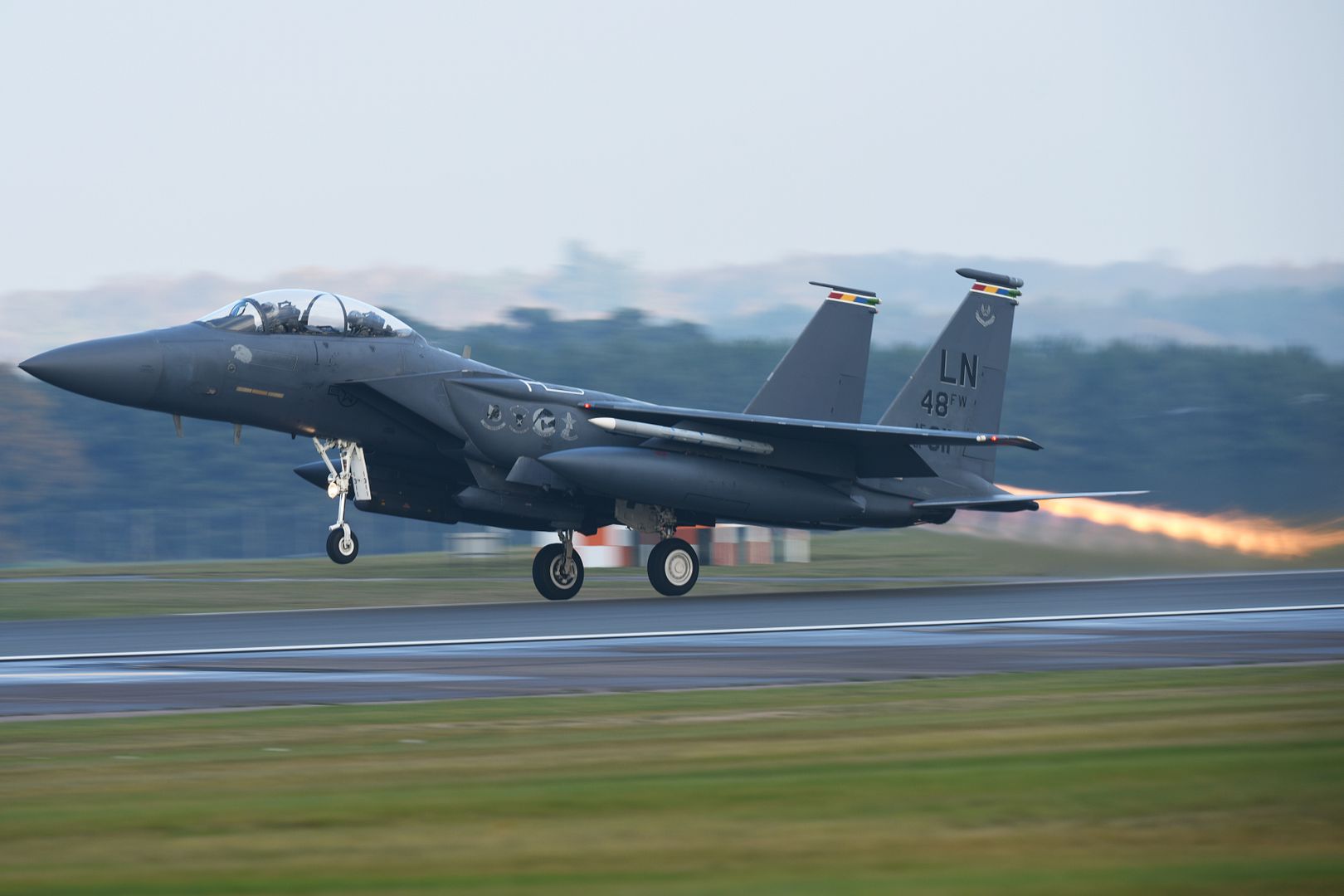
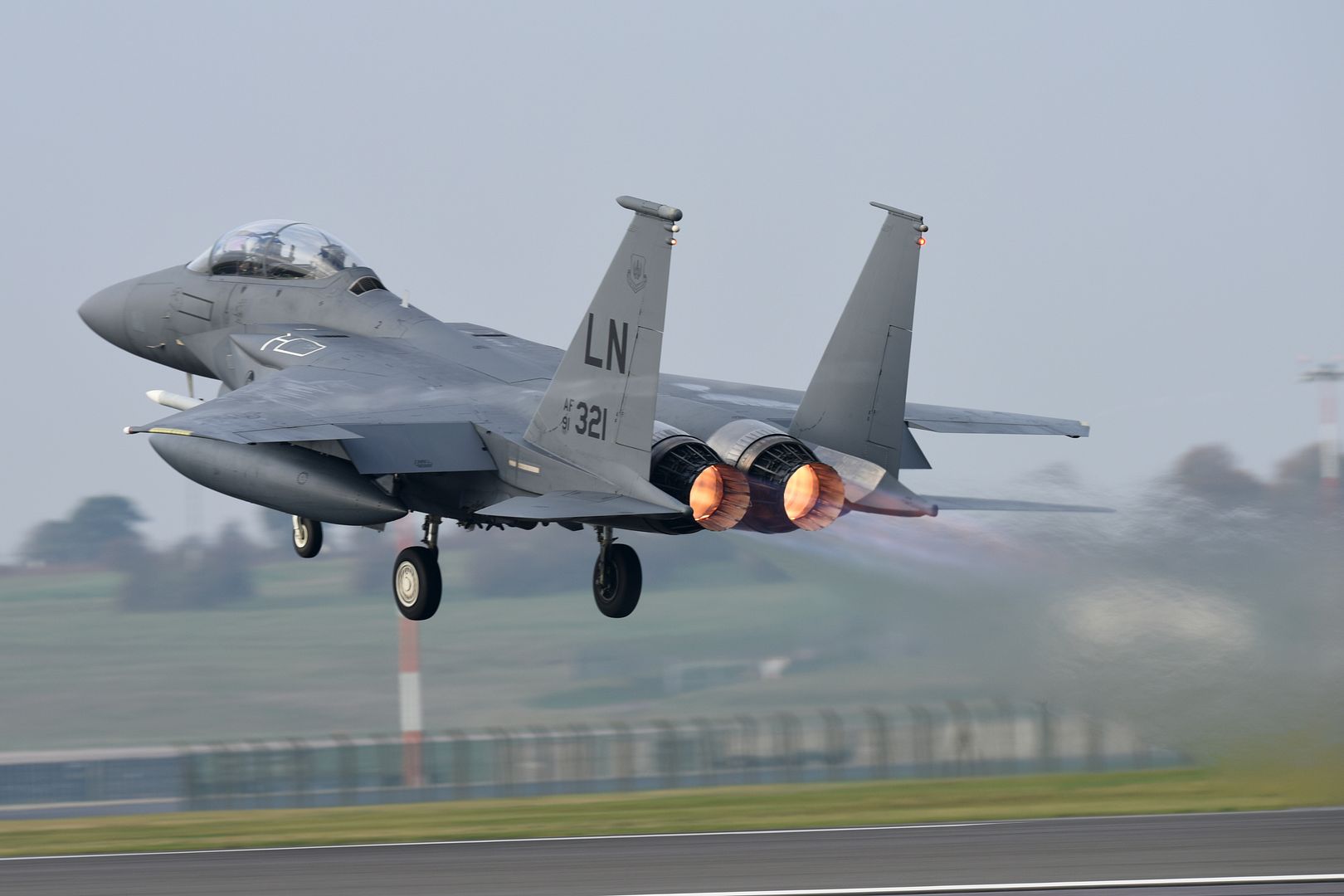
JOINT BASE ELMENDORF-RICHARDSON, Alaska - An Air Force F-22 Raptor assigned to the 3rd Wing flies over Joint Base Elmendorf-Richardson, Alaska, Feb. 27, 2018.
Photo By: Mr. Jamal Wilson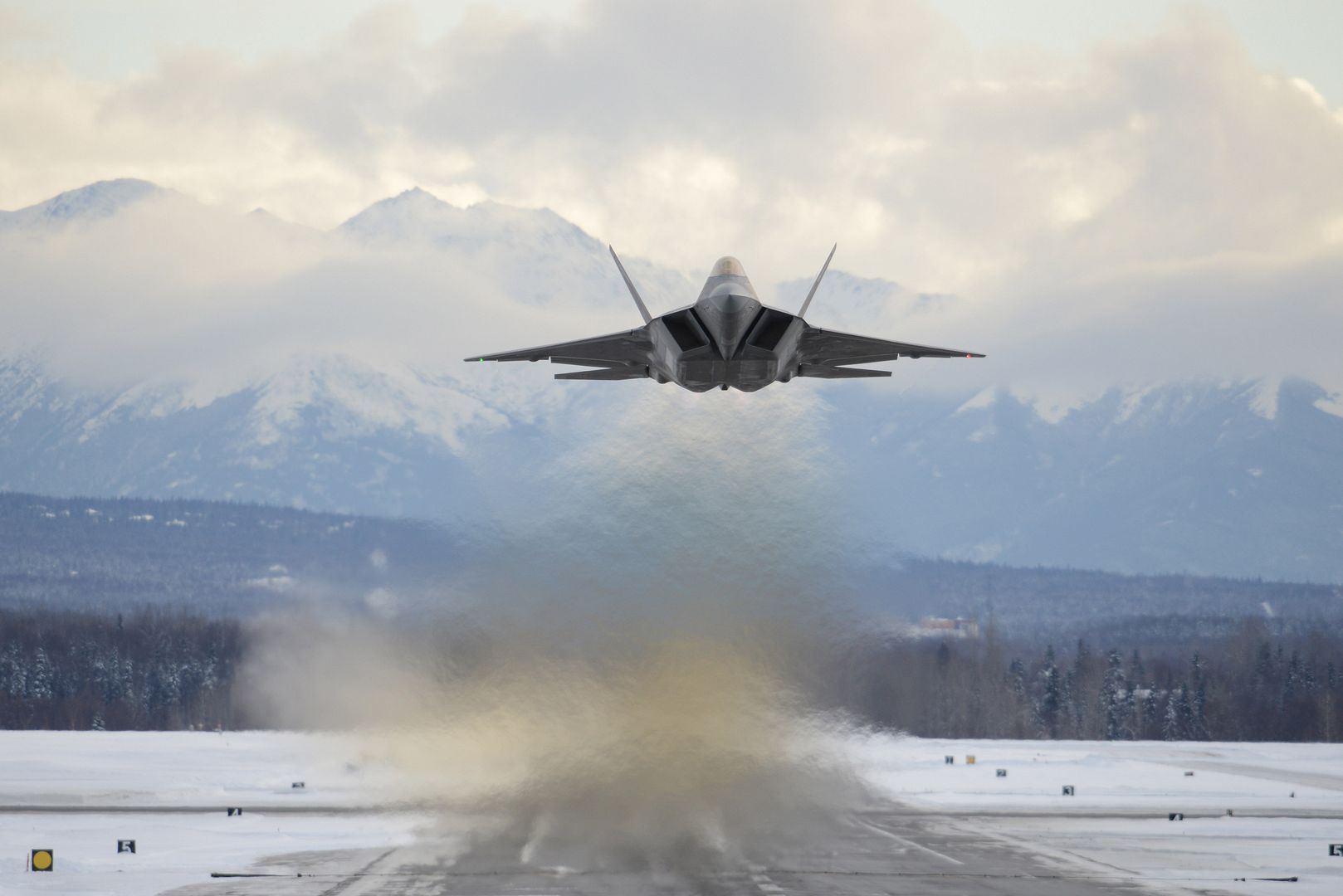
ADRIATIC SEA (Nov. 27, 2018) An E-2D Hawkeye, assigned to the "Seahawks" of Carrier Airborne Early Warning Squadron (VAW) 126, lands aboard the Nimitz-class aircraft carrier USS Harry S. Truman (CVN 75). Currently operating in the U.S. 6th Fleet area of operations, Harry S. Truman will continue to foster cooperation with regional allies and partners, strengthen regional stability, and remain vigilant, agile and dynamic. (U.S. Navy photo by Mass Communication Specialist 3rd Class Joseph A.D. Phillips/Released)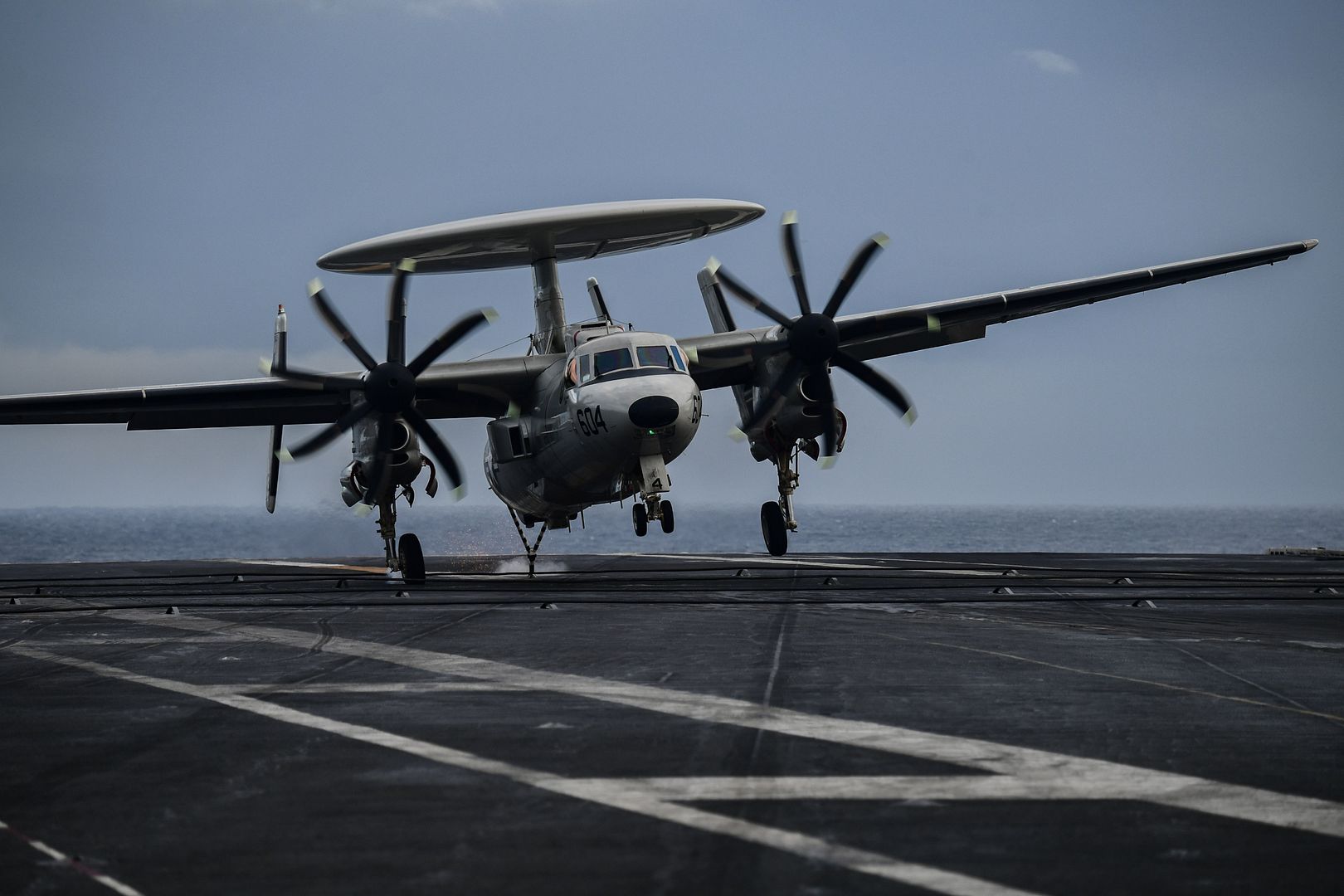
First exercise for RAF F-35 Lightning
ROYAL Air Force F-35 Lightning jets have passed another significant milestone by conducting their first exercise with UK based American F-15s and French Air Force Rafales, over the skies of East Anglia and the North Sea.
The 617 Squadron jets joined over forty other aircraft from the RAF, the United States Air Force and the French Air Force on Exercise Point Blank. This exercise was a first both for the F35s and the French Air Force and gave an opportunity for the three air forces to work together in a peer to peer scenario.
For the pilots of the F-35s the exercise gave an opportunity to continue to develop procedures to integrate 4th and 5th generation fighter aircraft. The exercise also aimed to improve the operational capability within the established tri lateral framework of RAF, USAF, French Air Force cooperation.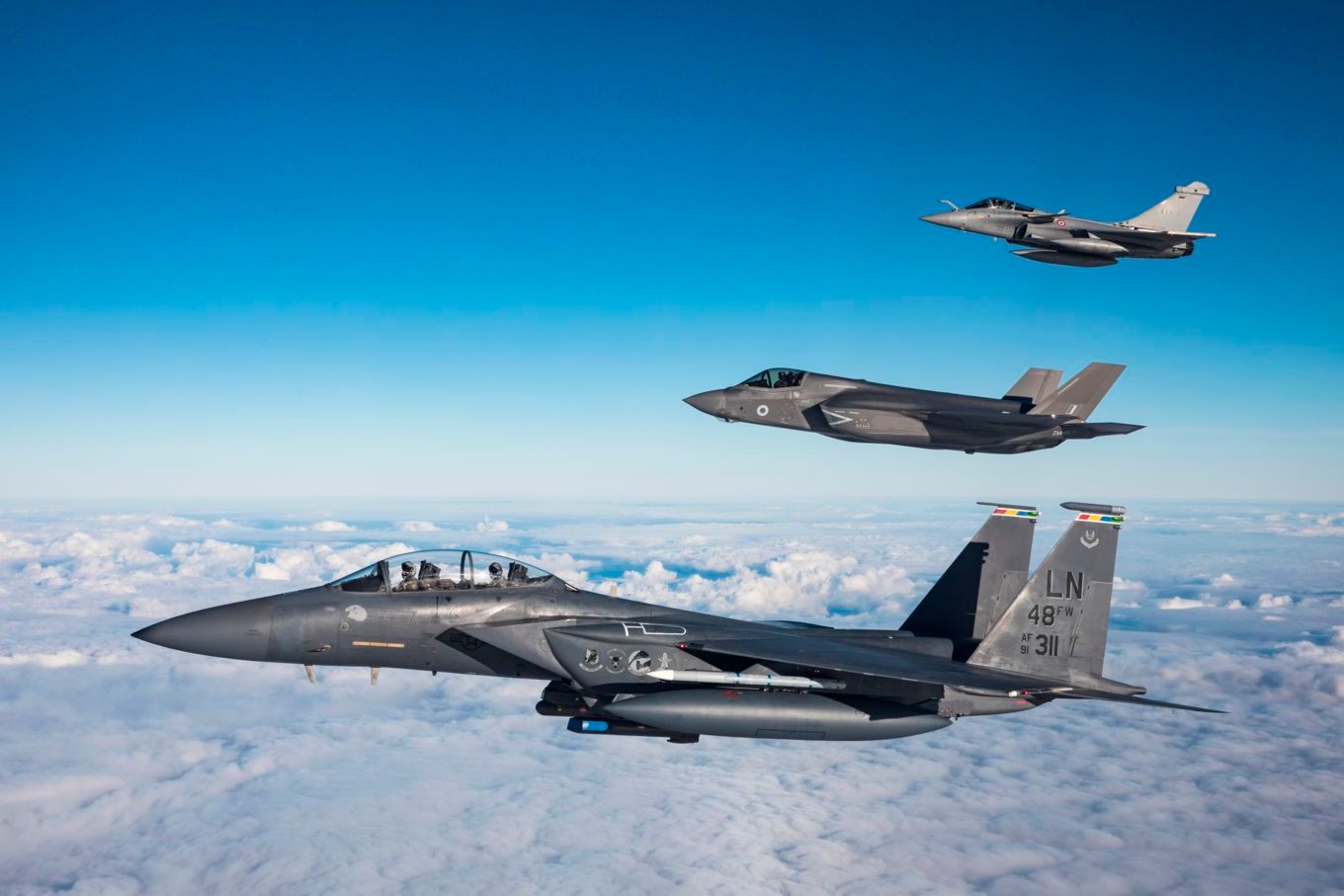
?The first point of an air force is to be able to defend the country so you have to recognise the threats out there.
"We can see the environment is changing, we can see the challenge that Russia is giving to the international rules-based order so we are the insurance policy and we are recognising that through the scenario that we?ve got, the non-permissive environment, and our ability to operate with our allies, the French and the Americans, is paramount.
"It really is a case of us staying ready so that we can be used if we?re needed, It?s a great insurance policy.?
Air Commodore Jez Attridge
RAF Joint Force Air Component Commander.
The United States Air Force and French Air Force jets have been operating from RAF Lakenheath the home of the US Air Force?s 48th Fighter Wing for the exercise. The US F-15s and French Rafale fighter jets in addition to the F-35s joined RAF Typhoon, Hawk and Voyager aircraft to simulate air to air and air to ground conflict. The RAF also deployed simulated air defence systems to test the pilots during the exercise.
?This particular exercise is different to any ones that we?ve done previously because of the threats that are out there. It?s the first time we?ve done a peer exercise and that we?ve worked alongside French and US partners.?
Wing Commander John ?Butch? Butcher
Officer commanding 617 squadron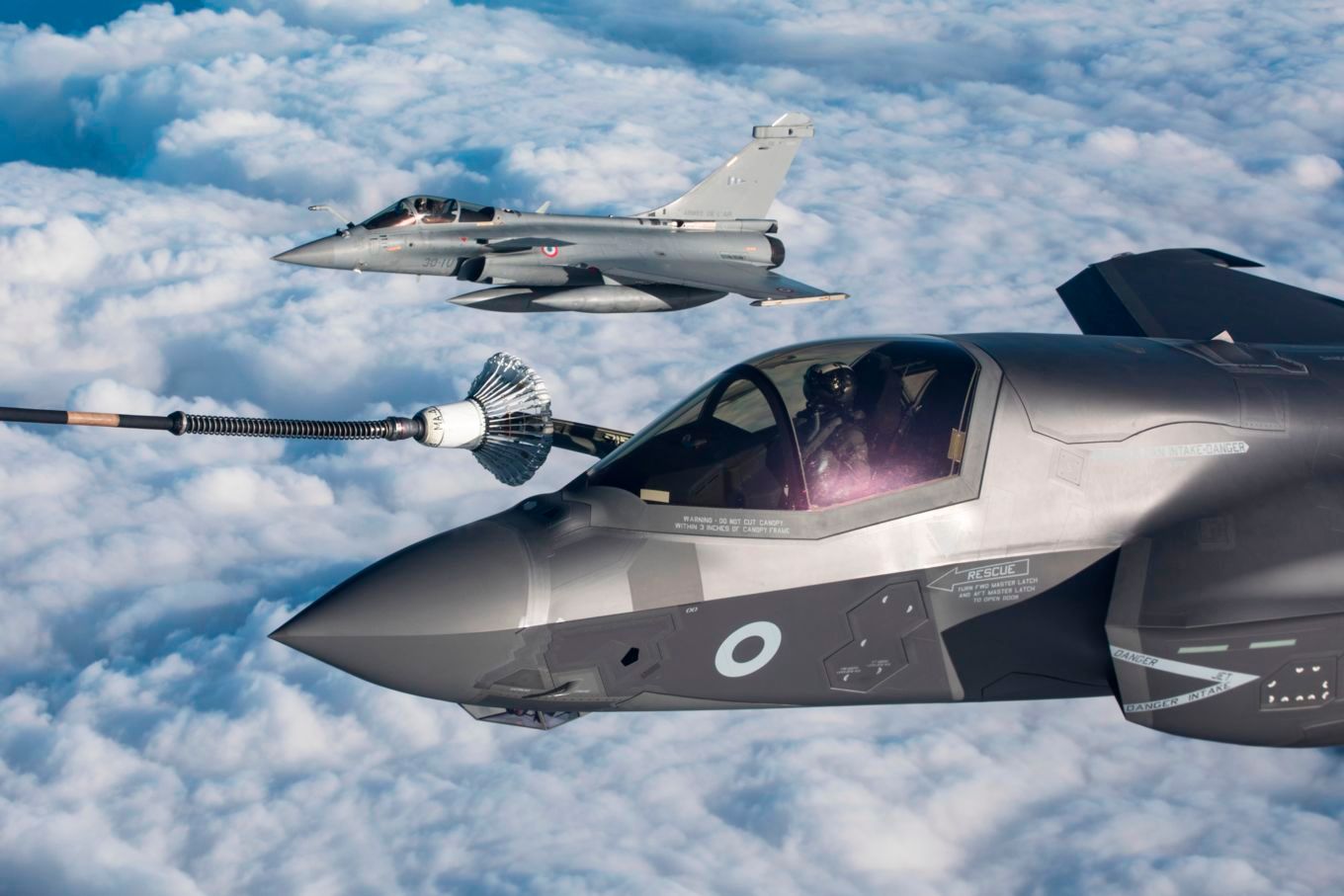
Explaining the importance of the exercise for 617 Squadron RAF, Wg Cdr Butcher added. ?things are progressing well? with the aim of declaring initial operating capability for the F-35s by the end of the year.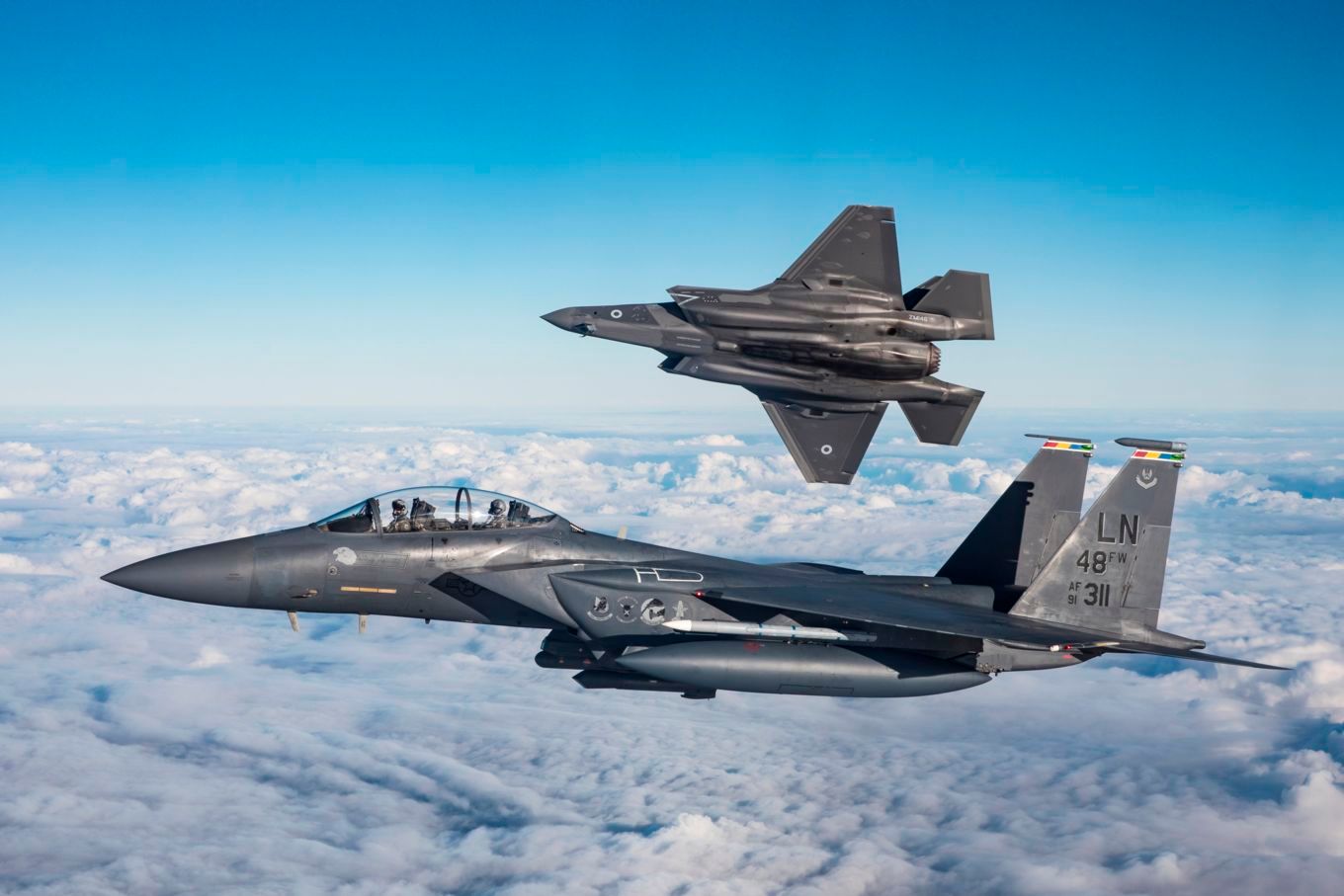
-
 Main AdminA U.S. Air Force C-17 Globemaster III transport aircraft, assigned to Joint Base Lewis-McCord, Washington, departs Marine Corps Air Station (MCAS), Camp Pendleton after delivering UH-1Y Venom and AH-1Z Viper helicopters to MCAS, Camp Pendleton, California, Nov. 28, 2018. (U.S. Marine Corps Photo by Cpl. Megan Roses)
Main AdminA U.S. Air Force C-17 Globemaster III transport aircraft, assigned to Joint Base Lewis-McCord, Washington, departs Marine Corps Air Station (MCAS), Camp Pendleton after delivering UH-1Y Venom and AH-1Z Viper helicopters to MCAS, Camp Pendleton, California, Nov. 28, 2018. (U.S. Marine Corps Photo by Cpl. Megan Roses)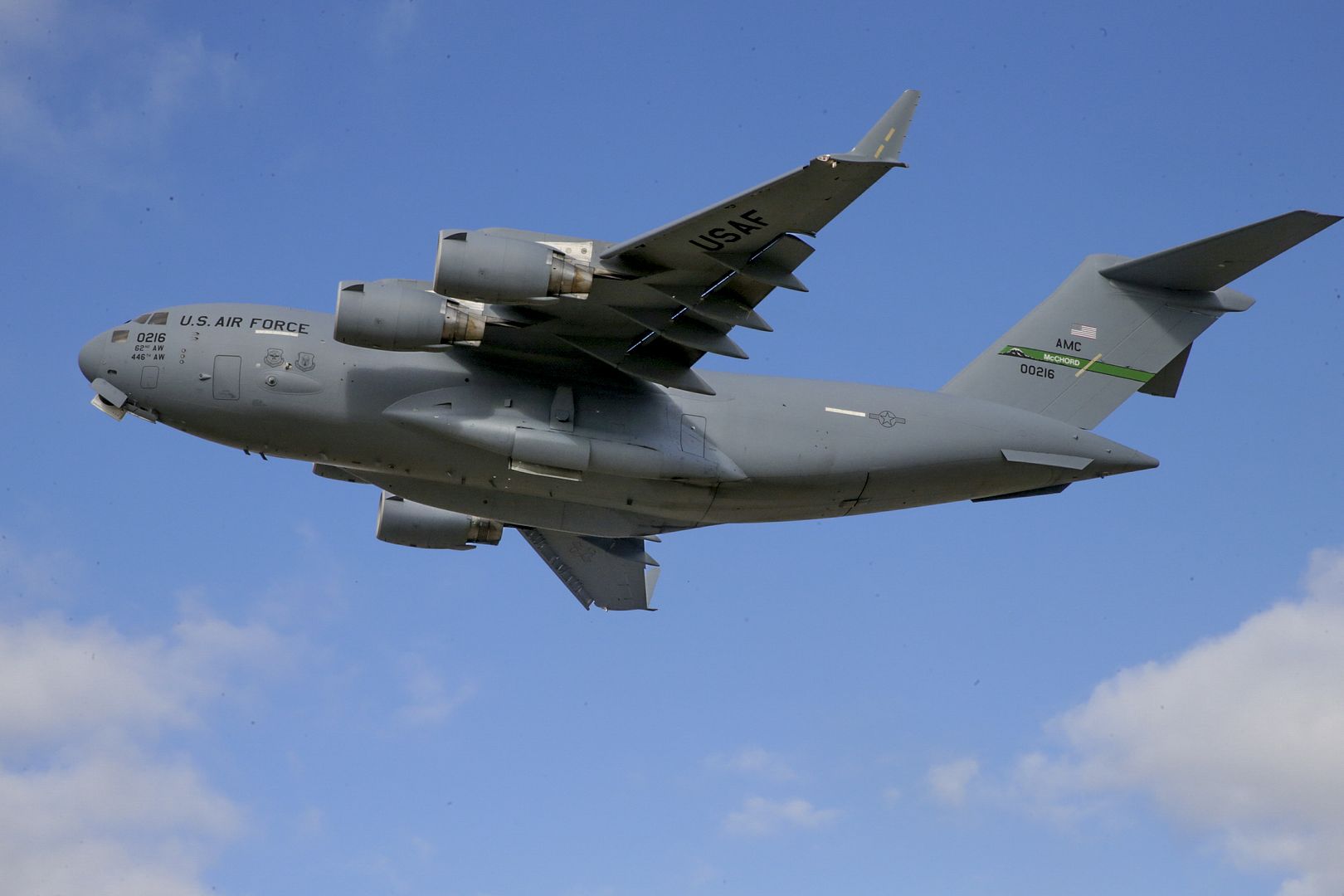
ADRIATIC SEA (Nov. 29, 2018) An F/A-18F Super Hornet, assigned to the ?Fighting Checkmates? of Strike Fighter Squadron (VFA) 211, launches from the Nimitz-class aircraft carrier USS Harry S. Truman (CVN 75). Currently operating in the U.S. Sixth Fleet area of operations, Harry S. Truman will continue to foster cooperation with regional allies and partners, strengthen regional stability, and remain vigilant, agile and dynamic. (U.S. Navy photo by Mass Communication Specialist 3rd Class Adelola Tinubu/Released)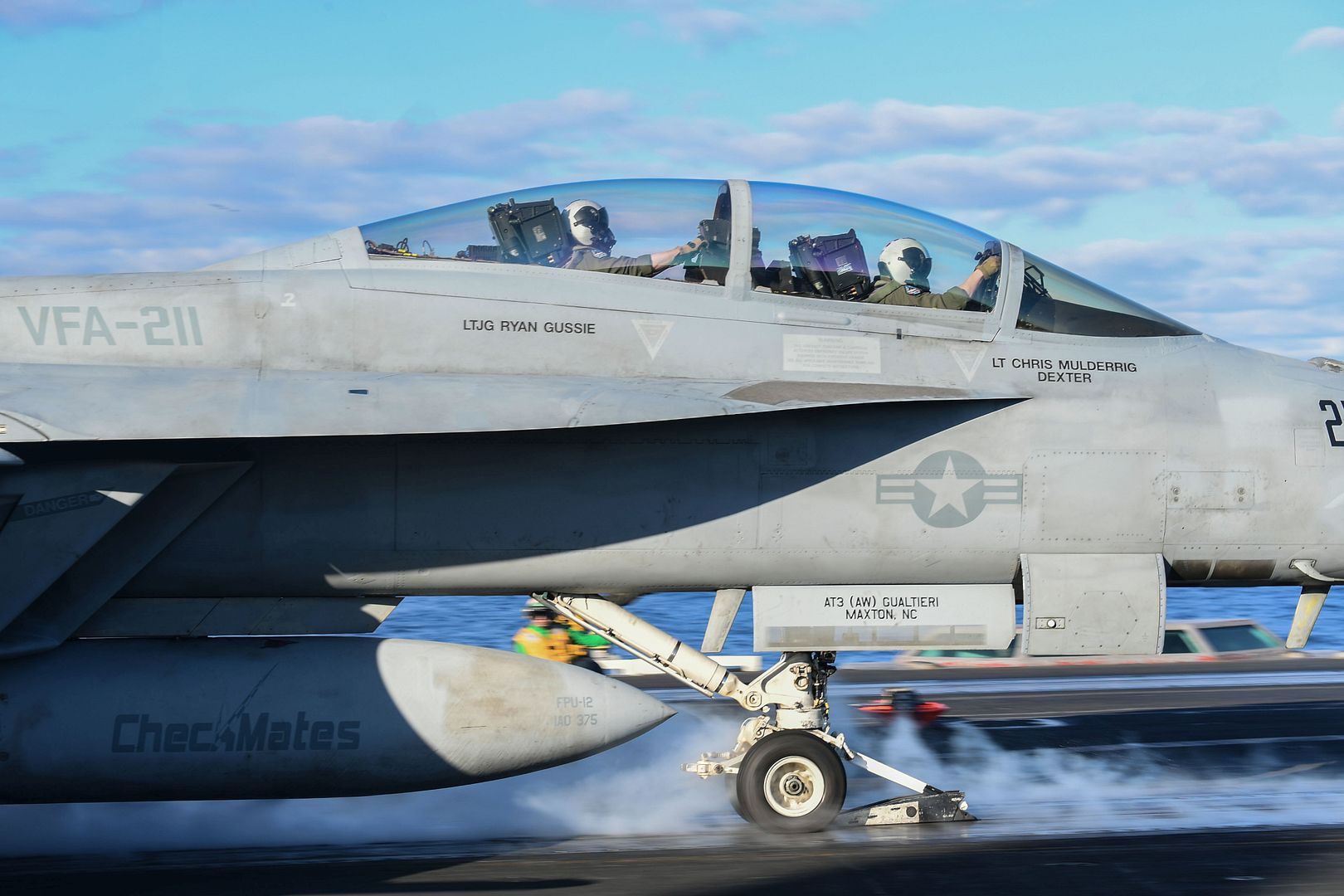
A 96th Test Wing F-16 Fighting Falcon lifts off from the runway Nov. 20 at Eglin Air Force Base, Fla. The F-16 belongs to the 40th Flight Test Squadron, the unit responsible for developmental testing with the aircraft and the F-15 at Eglin. (U.S. Air Force photo/Samuel King Jr.)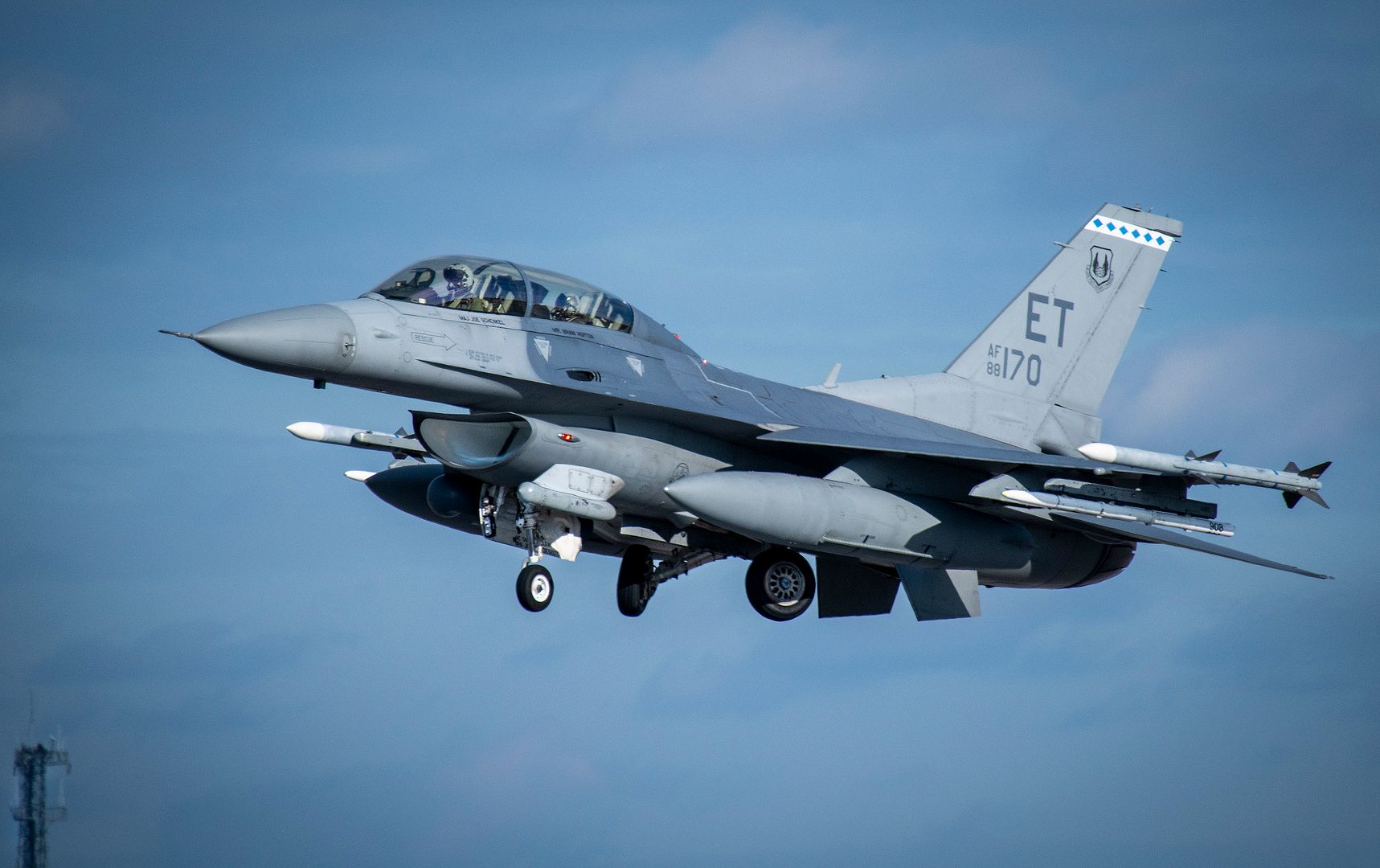
A 53rd Wing F-16 Fighting Falcon prepares to take off Nov. 20 at Eglin Air Force Base, Fla. The F-16 belongs to the 85th Test and Evaluation Squadron, the unit responsible for operational testing of the aircraft and the F-15 at Eglin. (U.S. Air Force photo/Samuel King Jr.)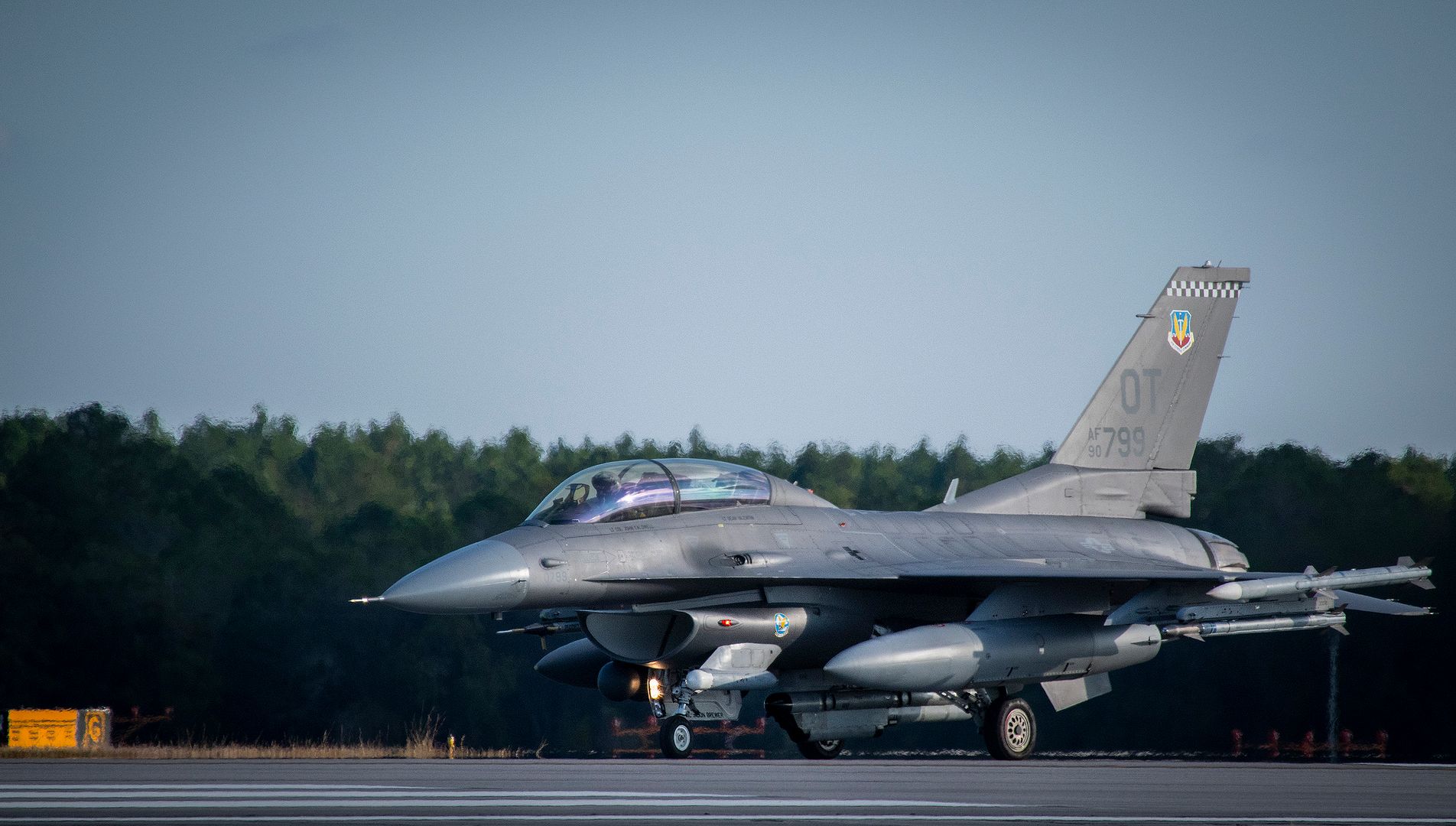
NORTH ATLANTIC (Nov. 18, 2018) The F-35 Patuxent River Integrated Test Force is testing aboard the Royal Navy aircraft carrier HMS Queen Elizabeth (R08) for phase two of the First of Class flight trails (fixed wing). Phase two tests include external stores, minimum performance short-takeoffs, shipborne rolling vertical landing and night operations. A third phase followed by operational testing is scheduled for 2019. Together, the events will help the United Kingdom's Ministry of Defence reach initial operating capability (maritime) in 2020. (U.S. Navy photo's courtesy of the Royal Navy/Released)

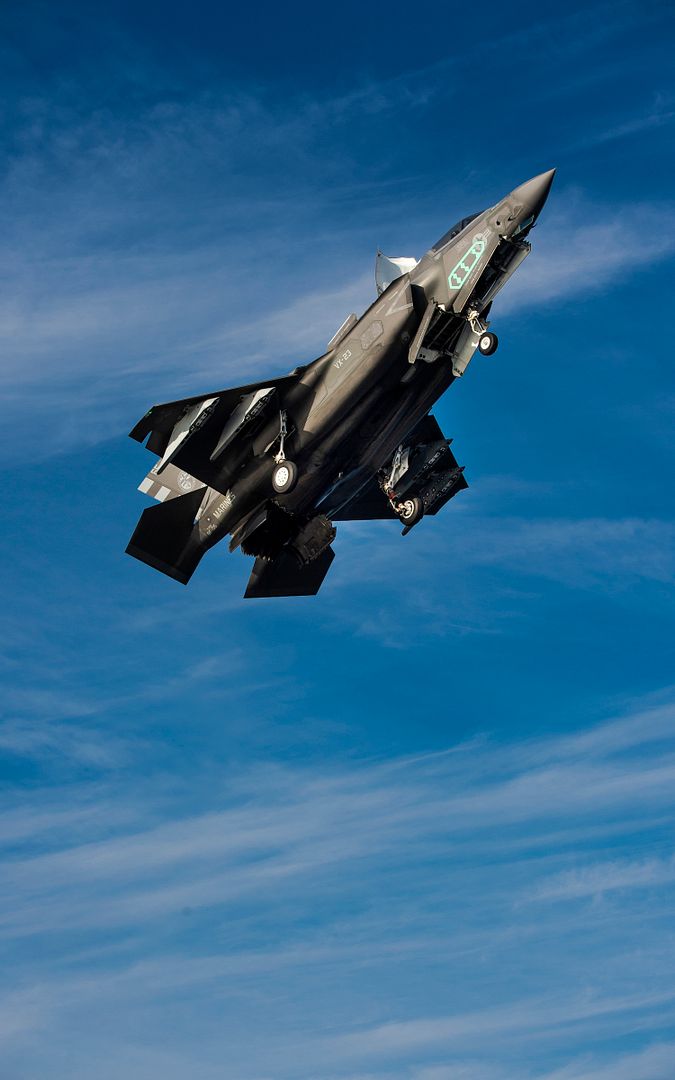
ADRIATIC SEA (Nov. 28, 2018)
An F/A-18E Super Hornet, assigned to the "Sunliners" of Strike Fighter Squadron (VFA) 81, launches from the Nimitz-class aircraft carrier USS Harry S. Truman (CVN 75). Currently operating in the U.S. 6th Fleet area of operations, Harry S. Truman will continue to foster cooperation with regional allies and partners, strengthen regional stability, and remain vigilant, agile and dynamic. U.S. Navy photo by Mass Communication Specialist Seaman Maxwell Higgins (Released)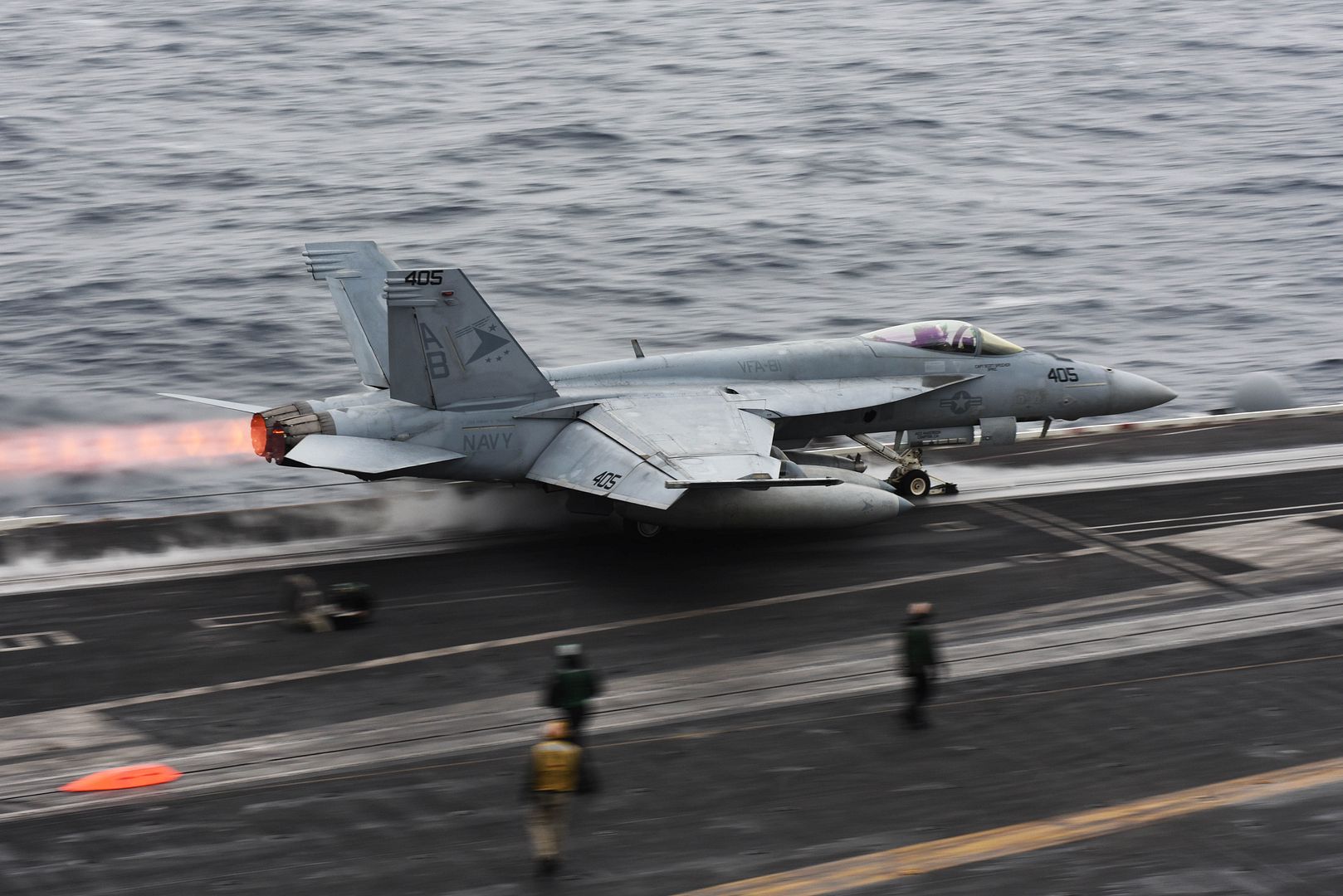
ARABIAN GULF (Nov. 27, 2018)
An F-35B Lightning II, attached to the "Avengers" of Marine Fighter Attack Squadron (VMFA) 211, takes off from the flight deck of the Wasp-class amphibious assault ship USS Essex (LHD 2) while on a scheduled deployment of the Essex Amphibious Ready Group (ARG) and 13th Marine Expeditionary Unit (MEU). The Essex ARG and 13th MEU are the first U.S. Navy/Marine Corps team to deploy to U.S. 5th Fleet area of operations with the transformational warfighting capabilities of the F-35B Lightning II, making it a more lethal, flexible and persistent force, leading to a more stable region for our partner nations. U.S. Navy photo by Mass Communication Specialist 3rd Class Jenna Dobson (Released)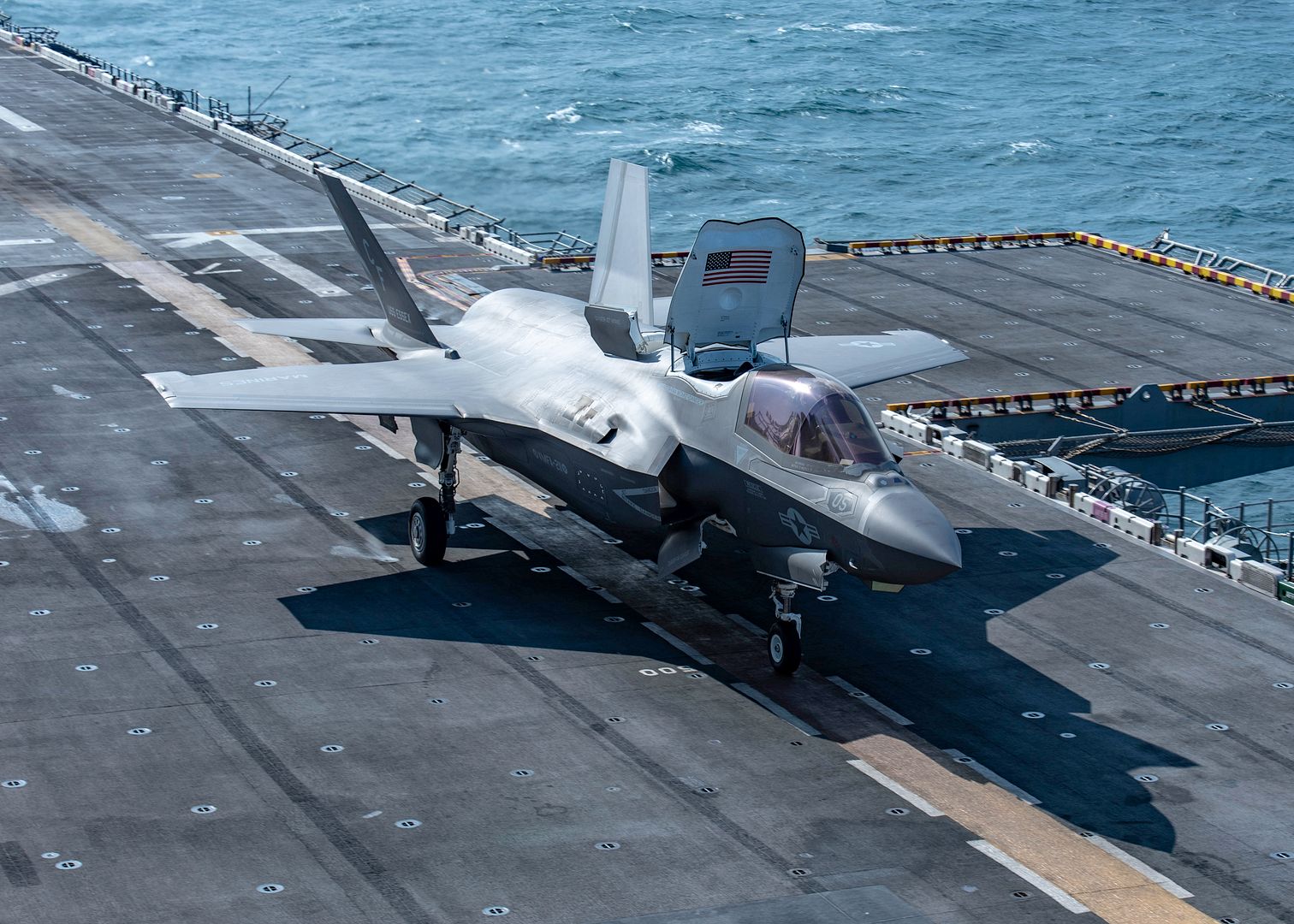
China Eastern Airlines has taken delivery of its first A350-900 in Toulouse, becoming the latest operator of this efficient twin-engine widebody aircraft. The Shanghai-based carrier now operates an Airbus fleet of 356 aircraft, including 306 A320 Family aircraft and 50 A330 Family aircraft (figures at the end of October 2018). China Eastern is the largest Airbus operator in Asia and second largest in the world.
China Eastern?s A350-900 aircraft features a modern and comfortable four-class cabin layout of 288 seats: four first, 36 business, 32 premium economy and 216 economy. The airline will initially operate the new aircraft on its domestic routes, followed by flights to international destinations.
Bringing new levels of efficiency and comfort to the long-range market, the A350 XWB Family is particularly well suited to the needs of Asia-Pacific airlines. To date, A350 XWB firm orders from carriers in the region represent over a third of total sales for the type.
The A350 XWB is an all-new family of mid-size widebody long-haul airliners shaping the future of air travel. It is the world?s most modern widebody family and the long-range leader, ideally positioned in the 300-400 seat category. The A350-900 and the A350-1000, and derivatives, are the longest-range airliners in operation, with a range capability of up to 9,700nm. The A350 XWB features the latest aerodynamic design, carbon fibre fuselage and wings, plus new fuel-efficient Rolls-Royce engines. Together, these latest technologies translate into unrivalled levels of operational efficiency, with a 25% reduction in fuel burn and emissions.
The A350 XWB?s Airspace by Airbus cabin is the quietest of any twin-aisle and offers passengers and crews the most modern in-flight product for the most comfortable flying experience.
At the end of October 2018, Airbus has recorded a total of 890 firm orders for the A350 XWB from 47 customers worldwide, making it one of the most successful widebody aircraft ever.
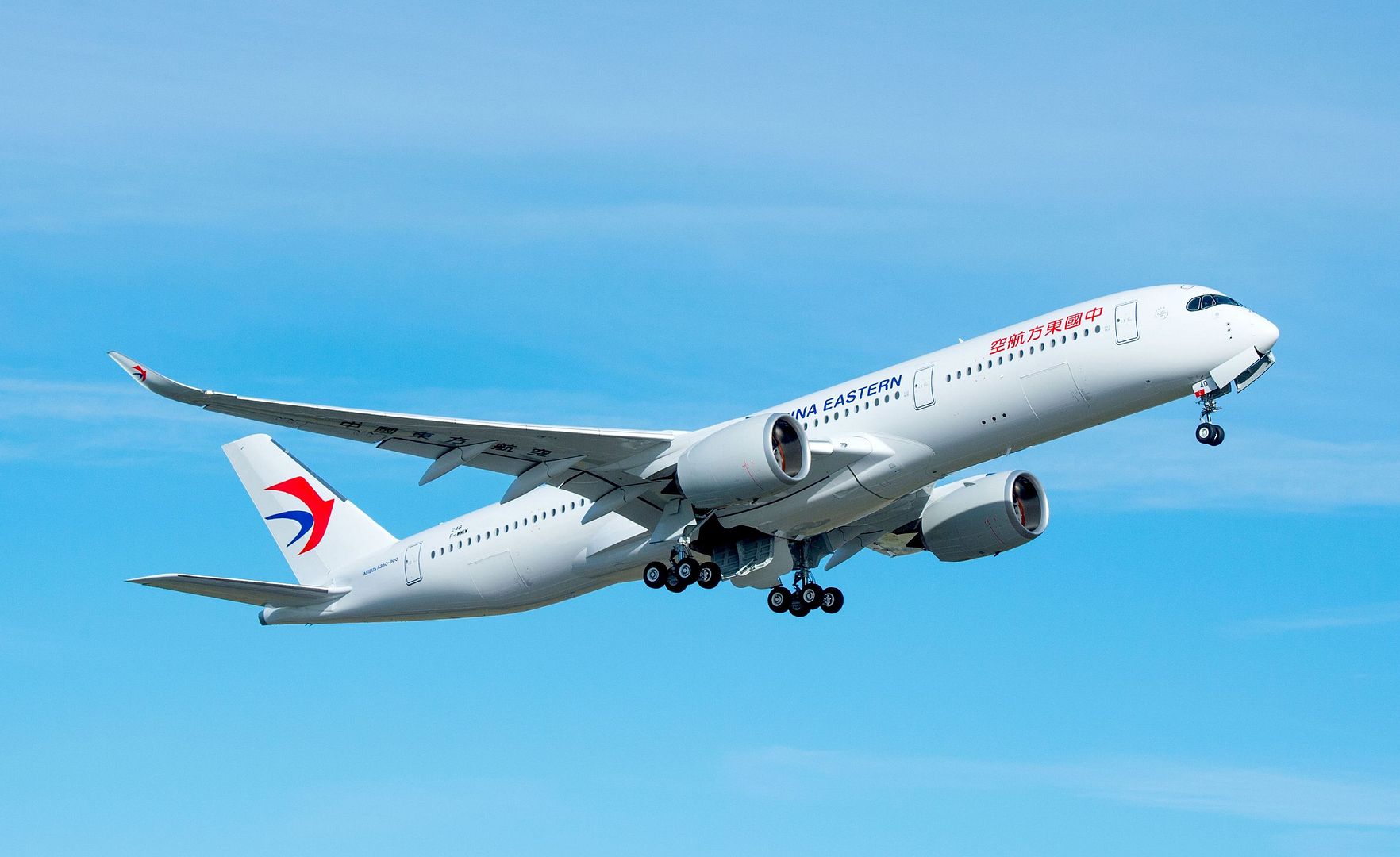
-
 Main AdminA CH-53E Super Stallion departs from USS Iwo Jima (LHD 7) Nov. 30, 2018. The aircraft and personnel return home after successfully completing exercise Trident Juncture 18 where they provided assault support for the combined force in Iceland and Norway. The aircrew and aviation support personnel also supported the scheme of maneuver for the 24th Marine Expeditionary Unit, 2nd Marine Division, and II Marine Expeditionary Force during Trident Juncture as they worked with their NATO allies to demonstrate their combined capabilities. The aircraft is with Marine Heavy Helicopter Squadron 366, Marine Aircraft Group 29. (U.S. Marine Corps photo by Lance Cpl. Gumchol Cho)
Main AdminA CH-53E Super Stallion departs from USS Iwo Jima (LHD 7) Nov. 30, 2018. The aircraft and personnel return home after successfully completing exercise Trident Juncture 18 where they provided assault support for the combined force in Iceland and Norway. The aircrew and aviation support personnel also supported the scheme of maneuver for the 24th Marine Expeditionary Unit, 2nd Marine Division, and II Marine Expeditionary Force during Trident Juncture as they worked with their NATO allies to demonstrate their combined capabilities. The aircraft is with Marine Heavy Helicopter Squadron 366, Marine Aircraft Group 29. (U.S. Marine Corps photo by Lance Cpl. Gumchol Cho)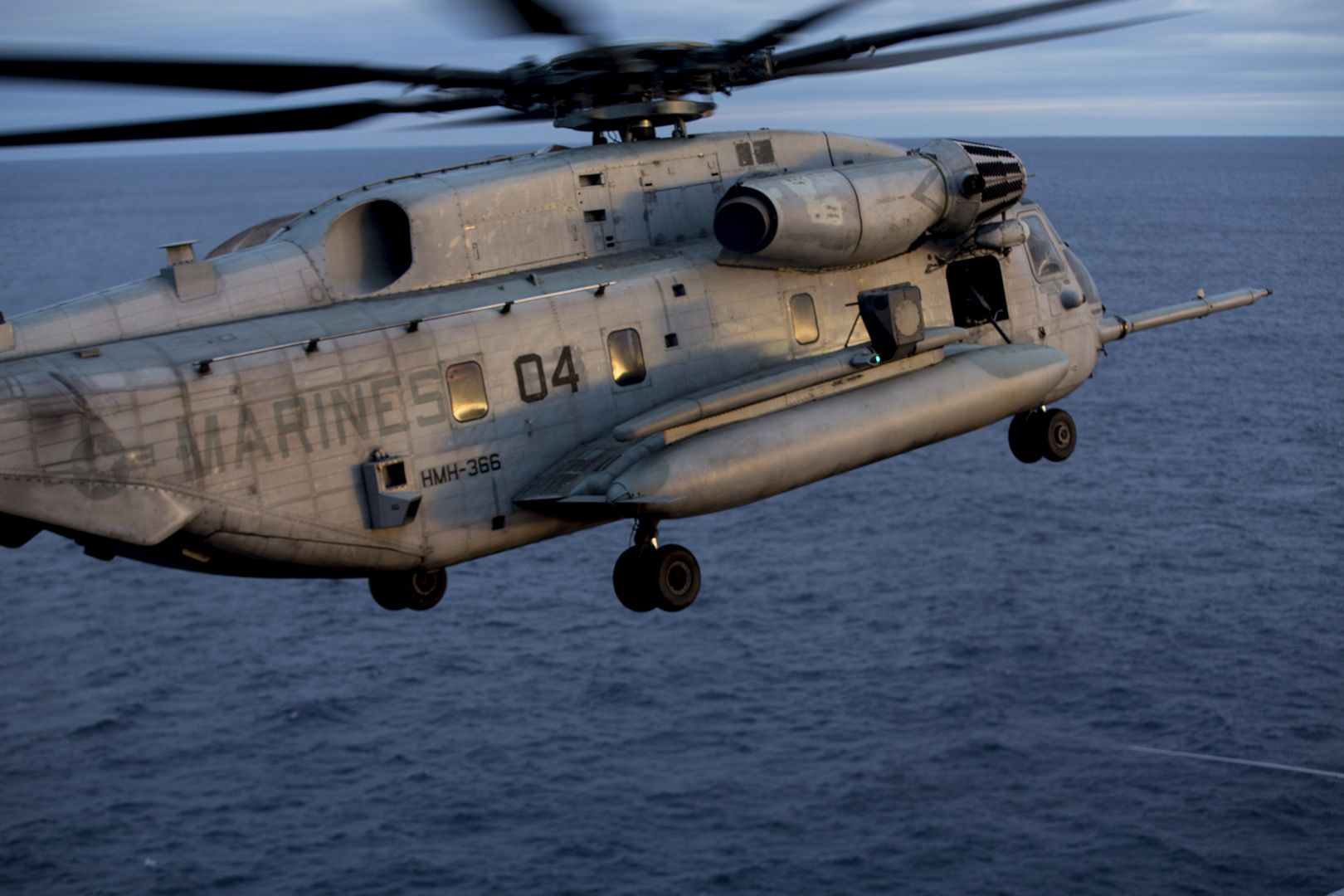
ADRIATIC SEA (Nov. 29, 2018) An F/A-18F Super Hornet, assigned to the ?Red Rippers? of Strike Fighter Squadron (VFA) 11, lands aboard the Nimitz-class aircraft carrier USS Harry S. Truman (CVN 75). Currently operating in the U.S. Sixth Fleet area of operations, Harry S. Truman will continue to foster cooperation with regional allies and partners, strengthen regional stability, and remain vigilant, agile and dynamic. (U.S. Navy photo by Mass Communication Specialist 3rd Class Adelola Tinubu/Released)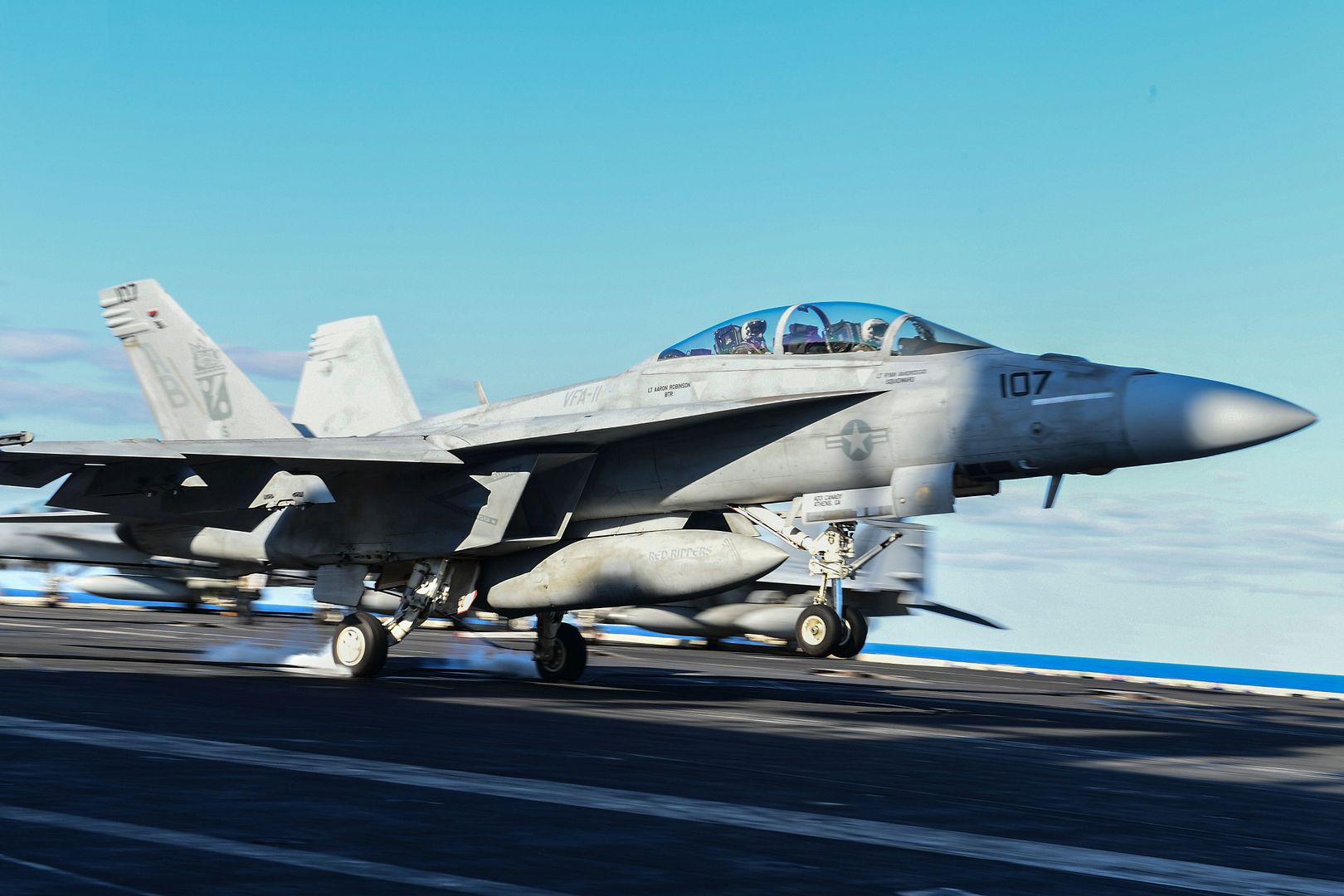
ADRIATIC SEA (Nov. 28, 2018) An F/A-18F Super Hornet, assigned to the Red Rippers of Strike Fighter Squadron (VFA) 11, launches from the Nimitz-class aircraft carrier USS Harry S. Truman (CVN 75). Currently operating in the U.S. 6th Fleet area of operations, Harry S. Truman will continue to foster cooperation with regional allies and partners, strengthen regional stability, and remain vigilant, agile and dynamic. (U.S. Navy photo by Mass Communication Specialist 3rd Class Joseph A.D. Phillips/Released)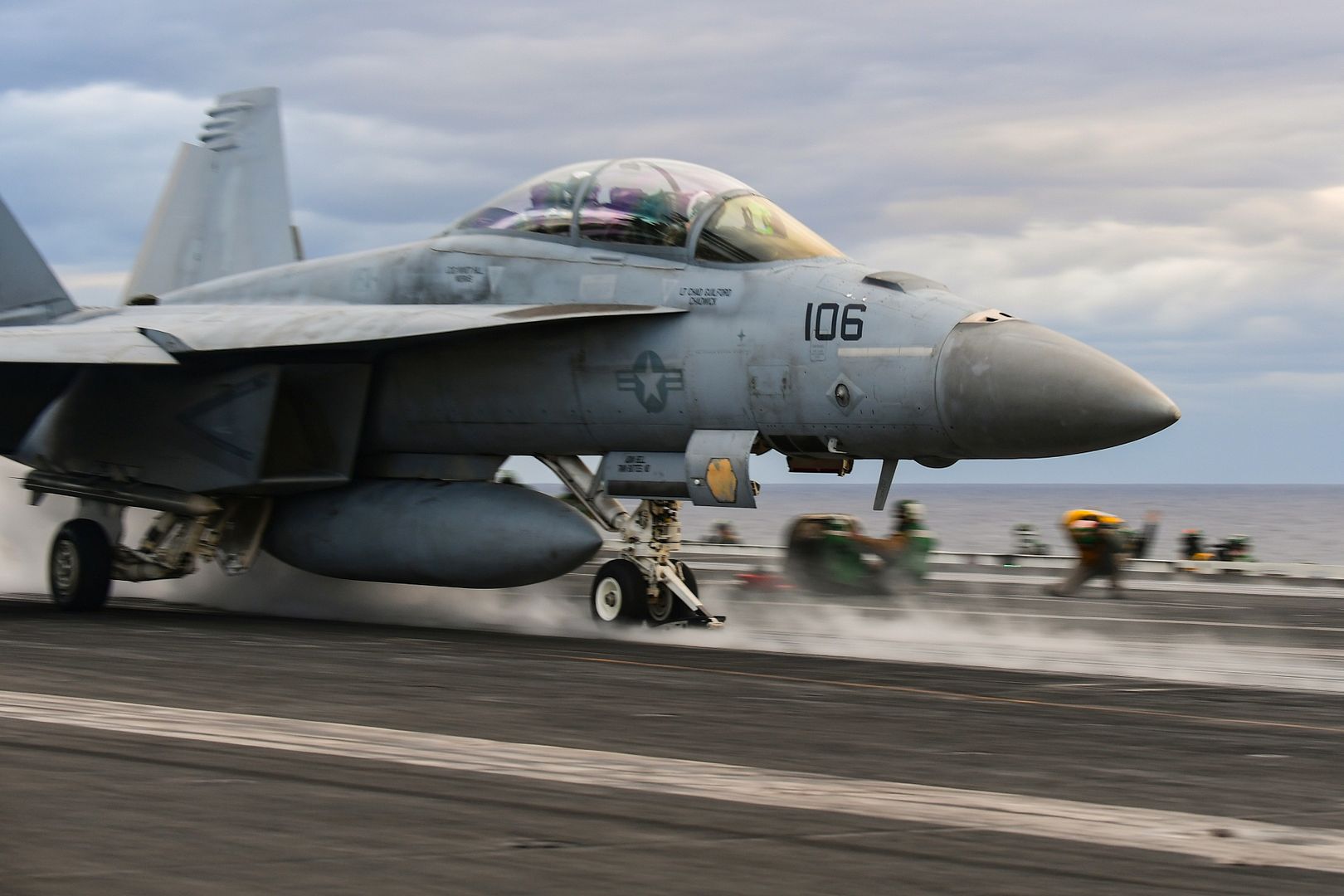
SEATTLE, Nov. 29, 2018 /PRNewswire/ -- Boeing [NYSE: BA] and Air Lease Corp. [NYSE: AL; "ALC"] today delivered the first 737 MAX 8 for Cayman Airways. The first 737 MAX to enter service in the Caribbean marks the beginning of the airline's plans to modernize its fleet and expand its network.
"Cayman Airways is able to achieve the highest levels of efficiency with the 737 MAX 8, along with unparalleled levels of reliability and comfort," said Cayman Airways President and CEO Fabian Whorms. "In addition, the MAX's incredible range opens up the potential for several new markets within the Americas."
Cayman Airways plans to take delivery of four MAX 8 airplanes to replace its fleet of 737 Classics.
Compared to the 737-300, the MAX 8 offers 30 percent greater seat capacity, and a more than 30 percent improvement in fuel efficiency per seat. The MAX achieves the higher levels of performance with the latest technology CFM International LEAP-1B engines, Advanced Technology winglets, and other airframe enhancements.
"ALC is pleased to announce this new Boeing 737 MAX 8 delivery with Cayman Airways today," said Steven F. Udvar-H?zy, Executive Chairman of Air Lease Corporation. "With this new MAX 8 and the additional three aircraft set to deliver from ALC, Cayman Airways is successfully modernizing its fleet with the most technologically advanced, fuel-efficient aircraft to enhance the airline's overall operations, maximize customer comfort and bring a new standard of excellence for travelers to and from the Cayman Islands."
"We are delighted to open a new chapter in our partnership with Cayman Airways and ALC, and bring the 737 MAX to the Caribbean," said Ihssane Mounir, senior vice president of Commercial Sales & Marketing for The Boeing Company. "The 737 MAX will help Cayman achieve significant improvement in performance and operating costs, while providing an even better flying experience for their passengers."
To prepare for their new 737 MAX, Cayman Airways will train pilots at Boeing Global Services' Miami training campus. Under this agreement, Cayman will use Boeing simulators for its entire 737 fleet including 737 Classics and Next-Generation 737s.
The 737 MAX family is the fastest-selling airplane in Boeing history, accumulating about 4,800 orders from more than 100 customers worldwide. Boeing has delivered more than 200 737 MAX airplanes since May 2017.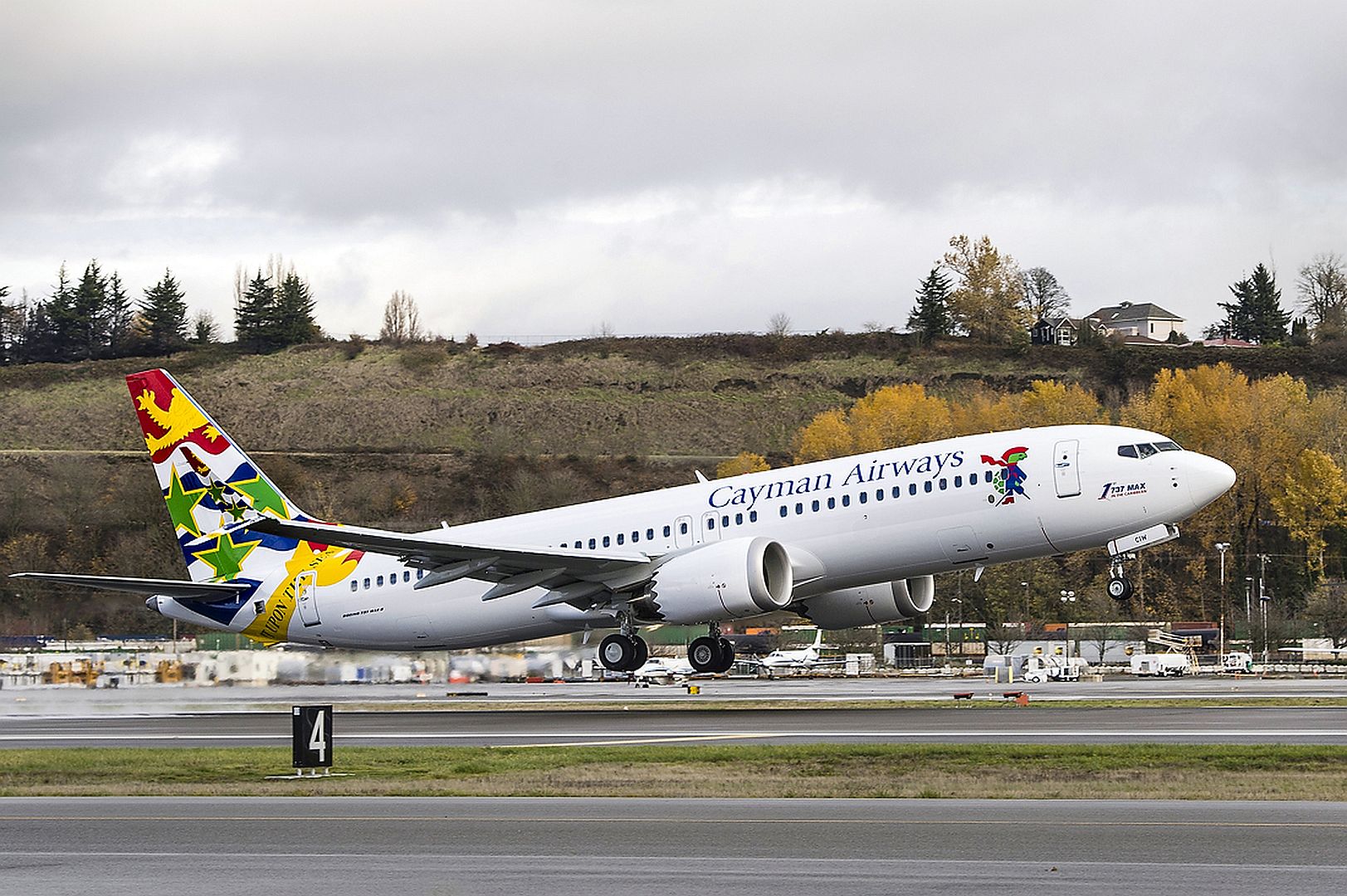
SEATTLE, Nov. 30, 2018 /PRNewswire/ -- Boeing (NYSE: BA) today delivered its 2,000th airplane to a Chinese operator, a 737 MAX for Xiamen Airlines. The milestone and the pace at which it was reached reflect the accelerating growth in the world's largest commercial aviation market.
Boeing delivered its first 1,000 airplanes to Chinese airlines over four decades. The next 1,000 Boeing jets have now been delivered over the past five years. The rapid pace continues as one in four Boeing-made commercial jet goes to a Chinese operator, either through direct purchase or lease.
"We are deeply honored to have achieved this delivery milestone in close partnership with our great partners in China. Our long-standing industrial relationship in this market has been mutually beneficial, fueling significant growth in Boeing's business, the U.S. economy, and the Chinese aviation industry," said Ihssane Mounir, senior vice president of Commercial Sales & Marketing of The Boeing Company. "We are grateful for the trust and confidence of great customers like Xiamen Airlines. Our teams are focused on supporting them by designing and delivering the best airplanes and services in the industry."
The new 737 MAX delivered today sports a special logo commemorating the milestone. It is the eighth MAX airplane to join fast-growing Xiamen Airlines, which operates the largest all-Boeing fleet in China with more than 200 jets. The carrier also uses Boeing Global Services to improve the efficiency of its network and operations. Xiamen is the first Chinese airline to use Optimized Maintenance Program, which leverages Boeing AnalytX to recommend customized airplane maintenance plans.
"We're pleased to be a part of this historic delivery for Boeing and China," said Che Shanglun, chairman of Xiamen Airlines. "In our 34-year history of operations, Xiamen Airlines has steadily grown, doubling our fleet size over the past five years and achieving profits for 31 years in a row. Throughout that time, Boeing has been a valued partner in our growth and expansion by providing safe and reliable airplanes."
Xiamen Airlines is one of Boeing's more than 30 commercial customers in China. In all, Boeing-made jets comprise more than half of the greater than 3,000 jetliners flying in the country.
China's commercial fleet is expected to more than double over the next 20 years. Boeing forecasts that China will need 7,690 new airplanes, valued at $1.2 trillion, by 2038. Boeing also forecasts China will experience strong growth in the commercial services market with demand growing $1.5 trillion over the next 20 years, accounting for 17 percent of world demand.
China also plays a major role in building the world's jetliners. The Chinese aerospace manufacturing industry supplies parts for every Boeing jet, including the 737 MAX, 777, and 787 Dreamliner. In December, Boeing and the Commercial Aircraft Corp. of China (COMAC) are set to deliver the first 737 MAX airplane from a completion and delivery center in Zhoushan, China. The facility will handle interior work and exterior painting of 737 MAXs for the Chinese market. Final assembly work will continue to be done at Boeing's factory in Renton, Wash.
Boeing activity in China is valued at more than $1 billion in economy activity in China. This includes procurement from Boeing's extensive supply base, joint venture revenues, operations, training, and research and development investment.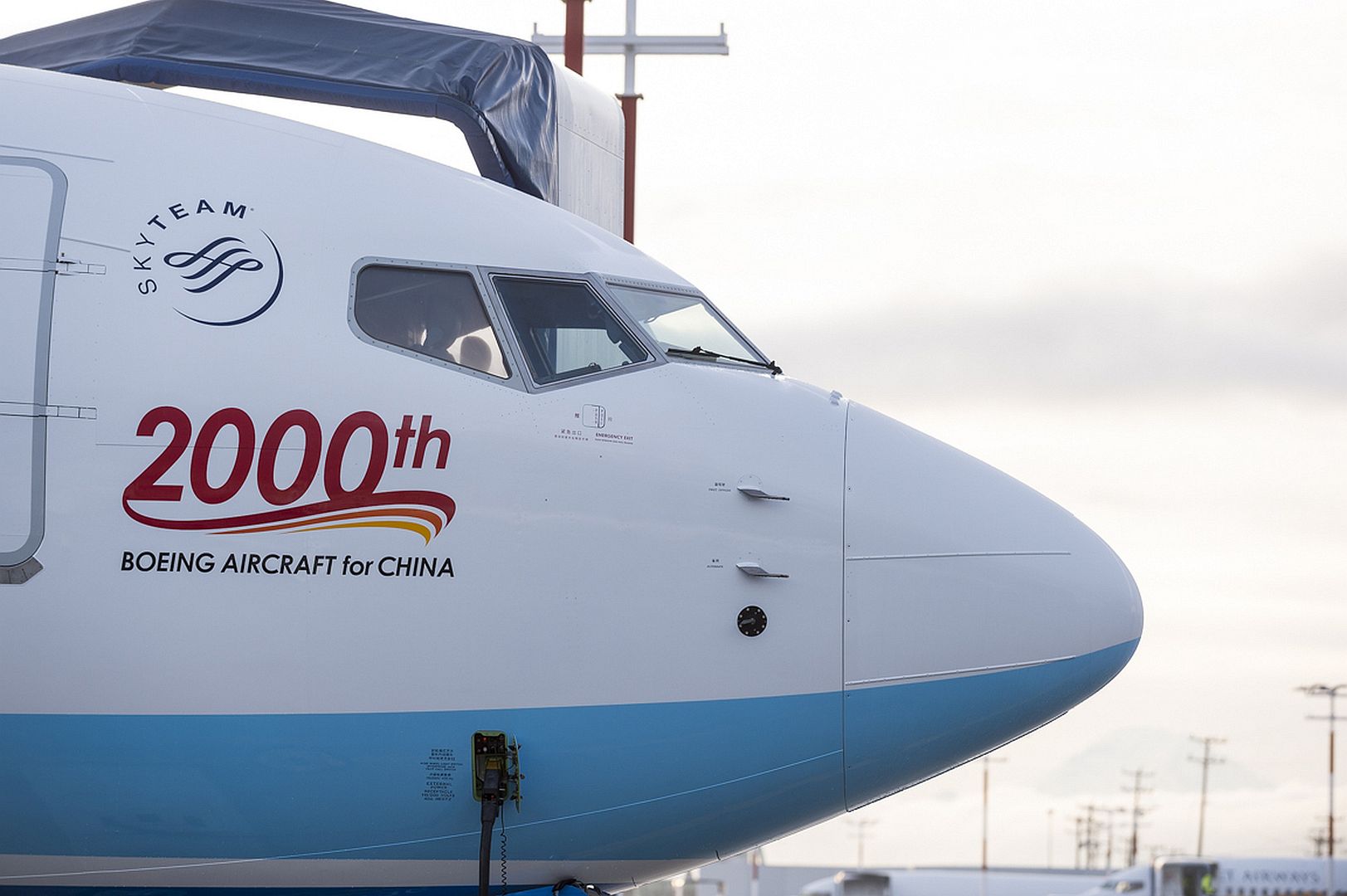
SEATTLE, Nov. 30, 2018 /PRNewswire/ -- Boeing [NYSE: BA] delivered the first 737 MAX for Fiji Airways, which plans to use the fuel-efficient, longer-range version of the popular 737 jet to expand and modernize its single-aisle fleet.
"We are thrilled to take delivery of our very first 737 MAX 8, named Island of Kadavu," said Andre Viljoen, Managing Director and CEO of Fiji Airways. "The introduction of the 737 MAX is the beginning of a new chapter for Fiji Airways and we look forward to taking advantage of the airplane's superior performance and economics. These new airplanes will enable us to offer a world-class customer experience through the new Boeing Sky Interior cabins with in-seat entertainment for all guests."
Fiji Airways plans to take delivery of five MAX 8 airplanes, which will build on the success of its fleet of Next-Generations 737s. The MAX incorporates the latest technology CFM International LEAP-1B engines, Advanced Technology winglets, and other airframe enhancements to improve performance and reduce operating costs.
Compared to the previous 737 model, the MAX 8 can fly 600 nautical miles farther, while providing 14 percent better fuel efficiency. The MAX 8 can seat up to 178 passengers in a standard two-class configuration and fly 3,550 nautical miles (6,570 kilometers).
"We are delighted to welcome Fiji Airways to the MAX family of operators and we are thrilled they will be the first 737 MAX operator in the Pacific Islands," said Ihssane Mounir, senior vice president of Commercial Sales & Marketing for The Boeing Company. "We are honored by their continued partnership and confidence in Boeing products. The market-leading efficiency of the MAX will pay immediate dividends for Fiji Airways and will help them improve their operation and route network."
Based at Nadi International Airport, Fiji Airways serves 13 countries and 31 destinations/cities including Fiji, Australia, New Zealand, Samoa, Tonga, Tuvalu, Kiribati, Vanuatu and Solomon Islands (Oceania), the United States, Hong Kong, Japan and Singapore. It also has an extended network of 108 international destinations through its codeshare partners.
In addition to modernizing its fleet, Fiji Airways will use Boeing Global Services to enhance its operations. These services include Airplane Health Management, which generates real-time, predictive service alerts, and Software Distribution Tools, which empowers airlines to securely manage digital ground-based data and efficiently manage software parts.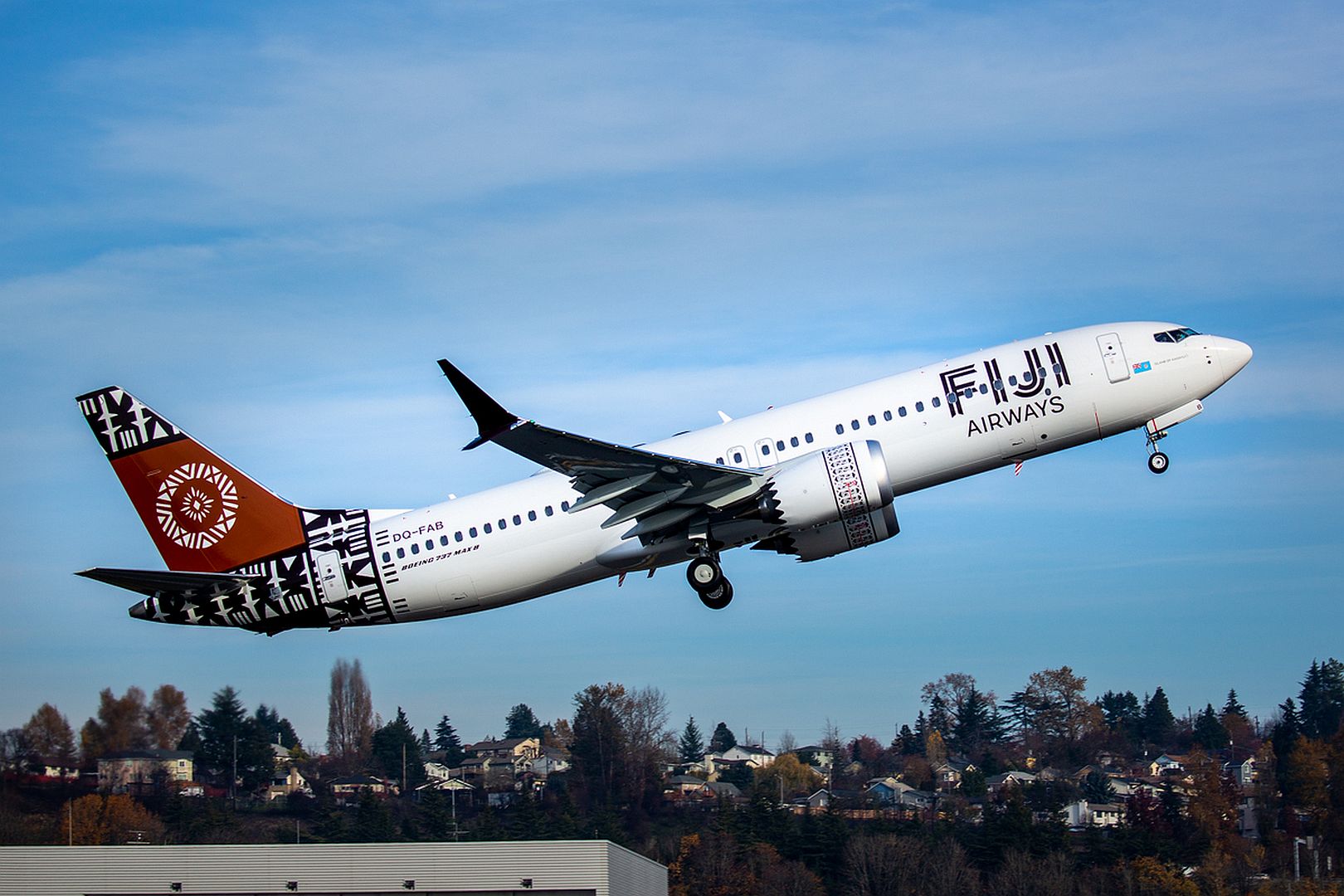
Air Lease Corporation (ALC) has taken delivery of its first U.S.-produced A321. The aircraft, delivered from the Airbus U.S. Manufacturing Facility in Mobile, Alabama, will be leased to Denver-based Frontier Airlines and features Xavier the Mountain Goat on its vertical tail and Sharklets. The aircraft is also the first U.S.-made A321ceo to enter Frontier?s fleet. The airline has previously taken direct delivery of six A320neos from Airbus?s Mobile production facility.
The milestone delivery was celebrated in Mobile by Steven F. Udvar-H?zy, Executive Chairman of ALC, joined by Frontier Airlines CFO Jimmy Dempsey and Airbus Americas Chairman & CEO Jeff Knittel.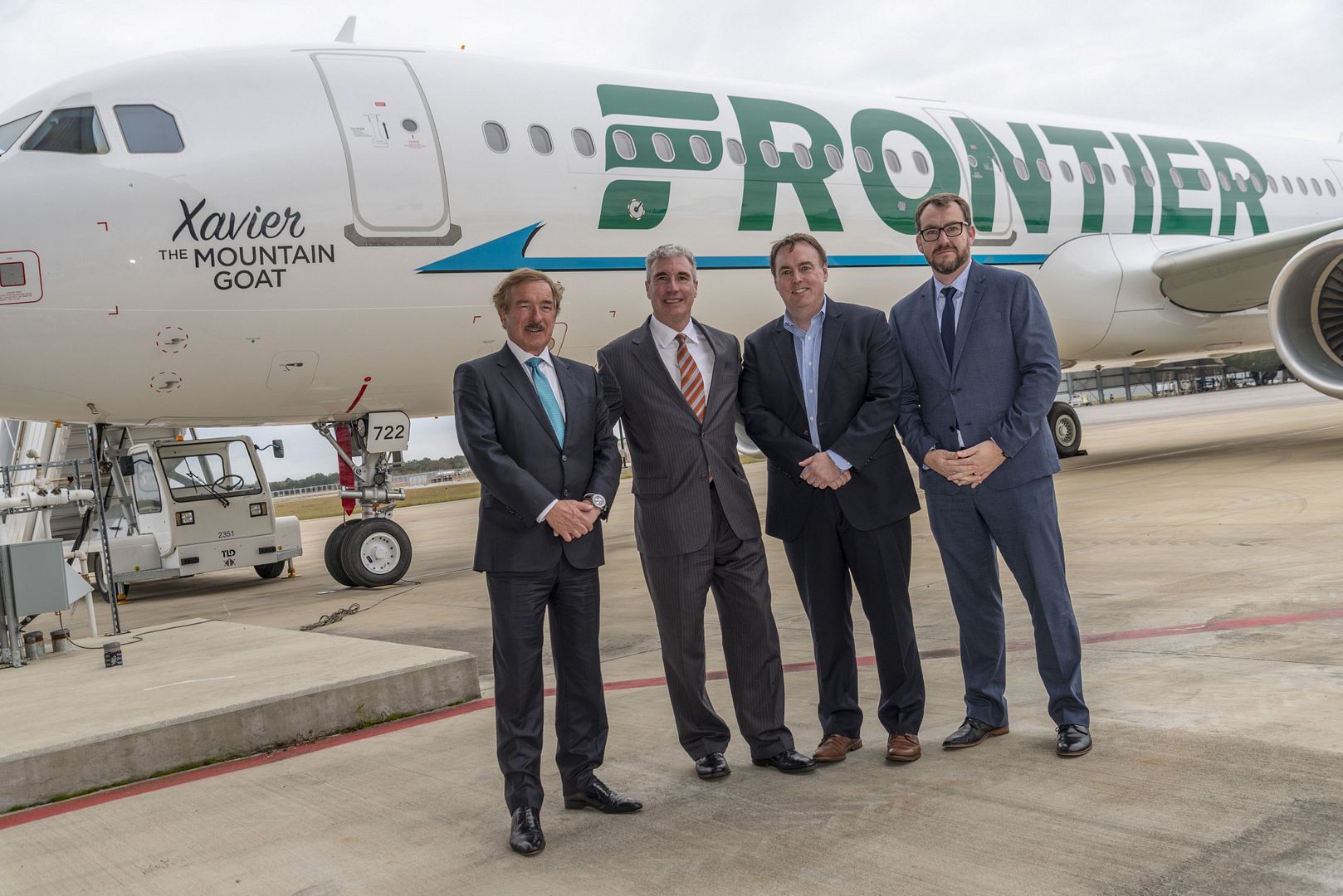
ALC is the eighth U.S.-based customer to receive aircraft from Airbus? Alabama-based A320 Family production facility.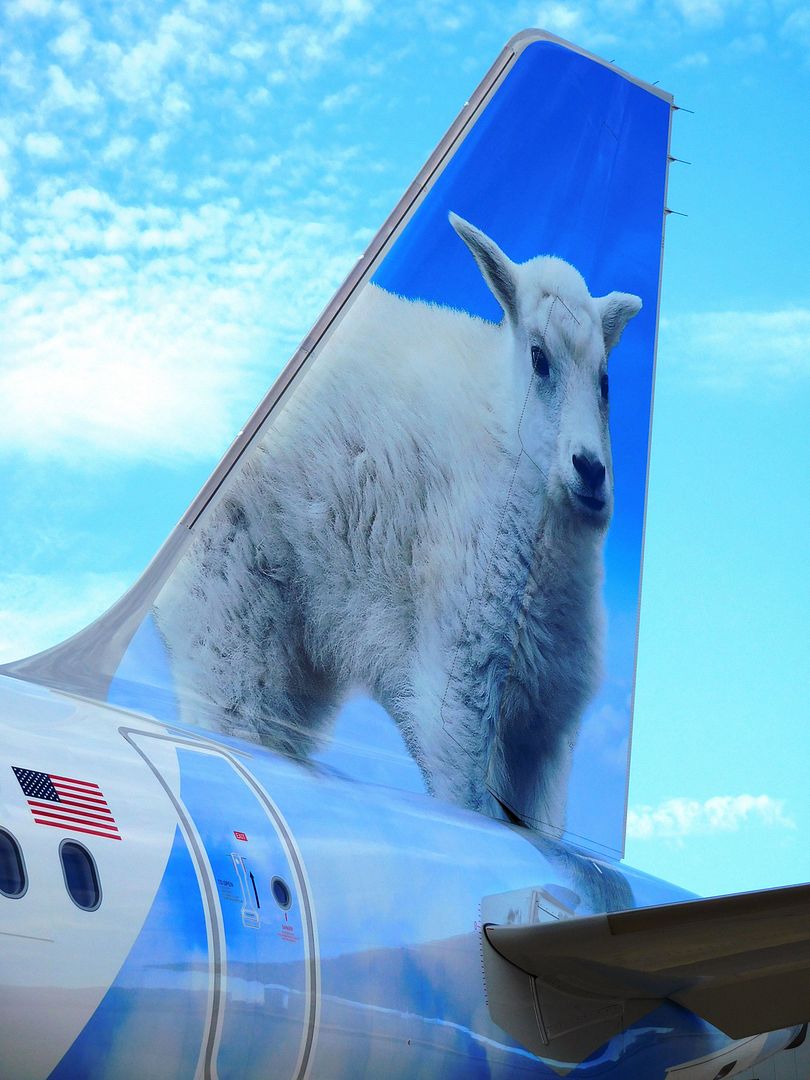
News Article / November 30, 2018
By Makala Chapman and Captain Lynne Patterson.
One of the Royal Canadian Air Force?s (RCAF) longest-serving Sea King helicopters has landed and now calls Trenton, Ontario, home.
On November 20, 2018, the first Canadian-built Sea King?tail number CH12405?emerged from the grey horizon at 8 Wing Trenton. It will soon be put on display at the National Air Force Museum of Canada (NAFMC), where it will continue to serve as a reminder of Canada?s rich aviation history.
The Sea King departed 443 Maritime Helicopter Squadron in Patricia Bay, British Columbia, on November 14, with her aircrew of Major Chris Inchley (pilot and aircraft commander), Captain Cory Proulx (co-pilot), Captain Brian Norwick (air combat systems officer), Master Warrant Officer Bruce Hollington (airborne electronic sensor operator), Master Corporal Mac Neilson (level C tech), Corporal John Dorenberg (aviation systems technician) and Corporal Matthew Coling (avionics systems technician). Along the way they stopped in places such as Penticton, British Columbia, Medicine Hat, Alberta (where they were weather delayed by a snowstorm), Winnipeg, Manitoba, and Green Bay, Wisconsin, to name a few.
The six aircrew on the transit had 52 years of experience on the aircraft amongst them?close, but not quite equalling the Sea King?s 55 years of service.
?Thinking back to all those that have worked on this aircraft, touched by the Sea King passion, we feel extremely privileged to be part of the final crew,? said Master Warrant Officer Hollington.
"The beginning of this trip felt like any other flight,? said Captain Norwick. ?Mission plan, equipment checks, prepare the helicopter, take-off from Victoria.
?The farther we flew, the more we realized the significance of the event. Crossing this great country and hearing stories of those that we met along the way it became clear that the Sea King's history is far-reaching. The nature of its missions meant that it is significant for both Air Force and Navy veterans. Over five and a half decades, that turns out to be a lot of people! We met people across the entire country, at various hotels, restaurants and airports, who had a personal story related to the Sea King.
?A highlight was being recognized by the Toronto Centre air controller. He knew that we were retiring the helicopter after its illustrious career and asked if we would like to complete a ?victory lap? around the CN Tower; the crew happily accepted.?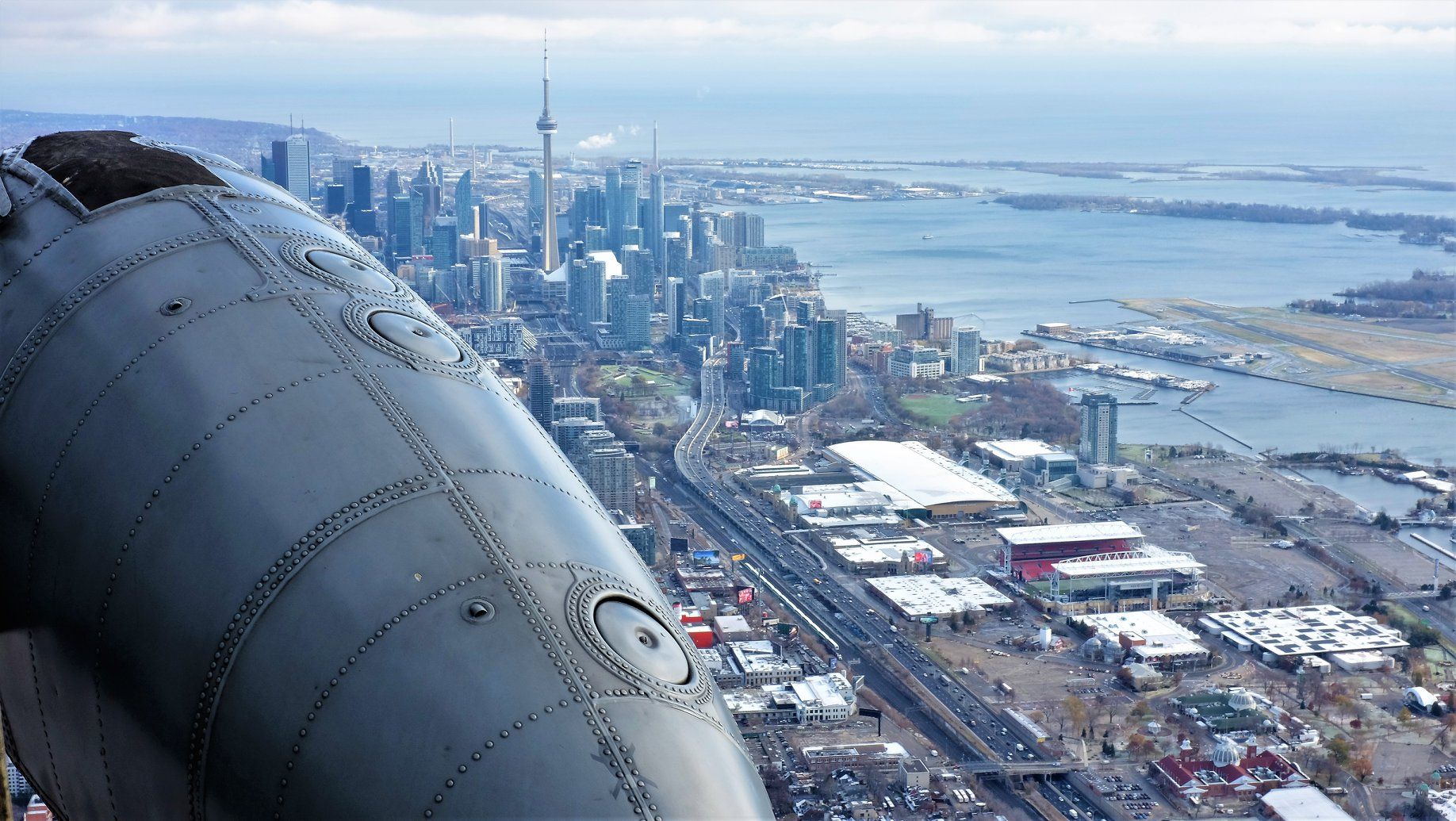
The arrival of 405 at the NAFMC is ??historic,? said Mr. Kevin Windsor, the museum?s executive director. ?This was the first Canadian-built Sea King. It?s the iconic helicopter of Canada.?
The first four Sea Kings in service in Canada were built by Sikorsky Aircraft at their factory in Connecticut, but CH12405 was the first to be built in Montreal. Of the 41 aircraft, 37 were assembled in Canada.
Mr. Windsor said he was delighted to have a new representative of maritime air at the museum. ?A lot of the guys at the museum who are working on the aircrafts in the restoration department are old Sea King maintainers and will continue to work on it. They?re really excited.?
?I?ve worked on this one here on an off for the past 12 years,? said Master Corporal Neilson. ?Honestly, I?m very proud to have been part of the final flight because I?ve put a lot of blood, sweat, tears and a lot of hours into it.?
The trip also marked a career milestone for Major Inchley.
?I just so happened to break 3,000 hours on the Sea King during this trip,? he said. ?That?s 14 years of flying. We just did the last shut down there and in 12 hours it will be a museum piece. It?s pretty significant.
?What we do with the aircraft is amazing,? he added. ?We can put it on the back of a small ship or we can take 11 technicians and eight aircrew and fly it all over the world in all crazy sea state, day or night. It?s just an amazing aircraft. It always has been and always will be.?
?People love the Sea King. Every place we go, they come out to see it. They ask if they can go inside, some of them even took video of the blades folding. It's just not something people see every day and they've heard about in the news and are genuinely curious about it,? he said. ?They're usually surprised at how big it is and the aviation buffs want to know how much fuel it burns, how heavy it is, etc.?
January 2018 saw the Sea King?s last East Coast flights in Halifax-Dartmouth. In August, the Shearwater Aviation Museum received tail numbers 401 (exactly 55 years to the day after the Royal Canadian Navy accepted it) and 431. Aircraft 441 sits outside the museum at the Shearwater Aviation Park. No. 405?s cross-country transit marks the fourth aircraft to arrive at its final destination, just before Sea King retirement events on November 30 and December 1 at 443 Squadron.
-
 Main AdminU.S. Air Force Airmen with the 732nd Aircraft Mobility Squadron deices a C-17 Globemaster III at Joint Base Elmendorf-Richardson, Alaska, Dec. 1, 2018. JBER mission operations continue following a 7.2 earthquake hit to Anchorage, Alaska, on Nov. 30. (U.S. Air Force photo by Airman 1st Class Caitlin Russell)
Main AdminU.S. Air Force Airmen with the 732nd Aircraft Mobility Squadron deices a C-17 Globemaster III at Joint Base Elmendorf-Richardson, Alaska, Dec. 1, 2018. JBER mission operations continue following a 7.2 earthquake hit to Anchorage, Alaska, on Nov. 30. (U.S. Air Force photo by Airman 1st Class Caitlin Russell)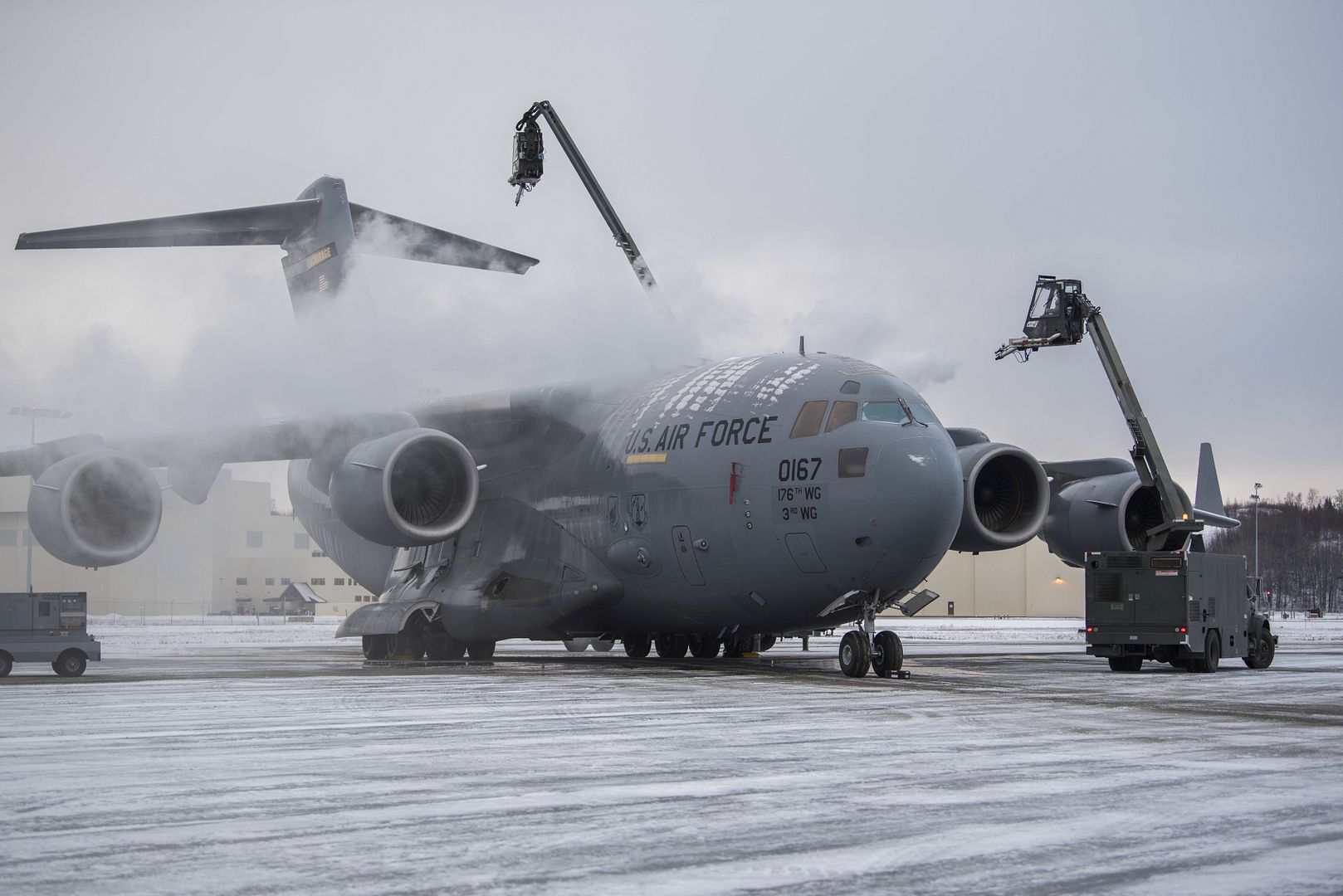
An F-15C Eagle assigned to the 493rd Fighter Squadron takes off for a sortie during the NATO Tactical Leadership Programme 18-4 at Amendola Air Base, Italy, Nov. 29, 2018. With over four decades of history, TLP has become the focal point for NATO?s Allied Air Forces tactical training, developing knowledge and leadership skills, necessary to face today's air tactical challenges. (U.S. Air Force photo/ Senior Airman Malcolm Mayfield)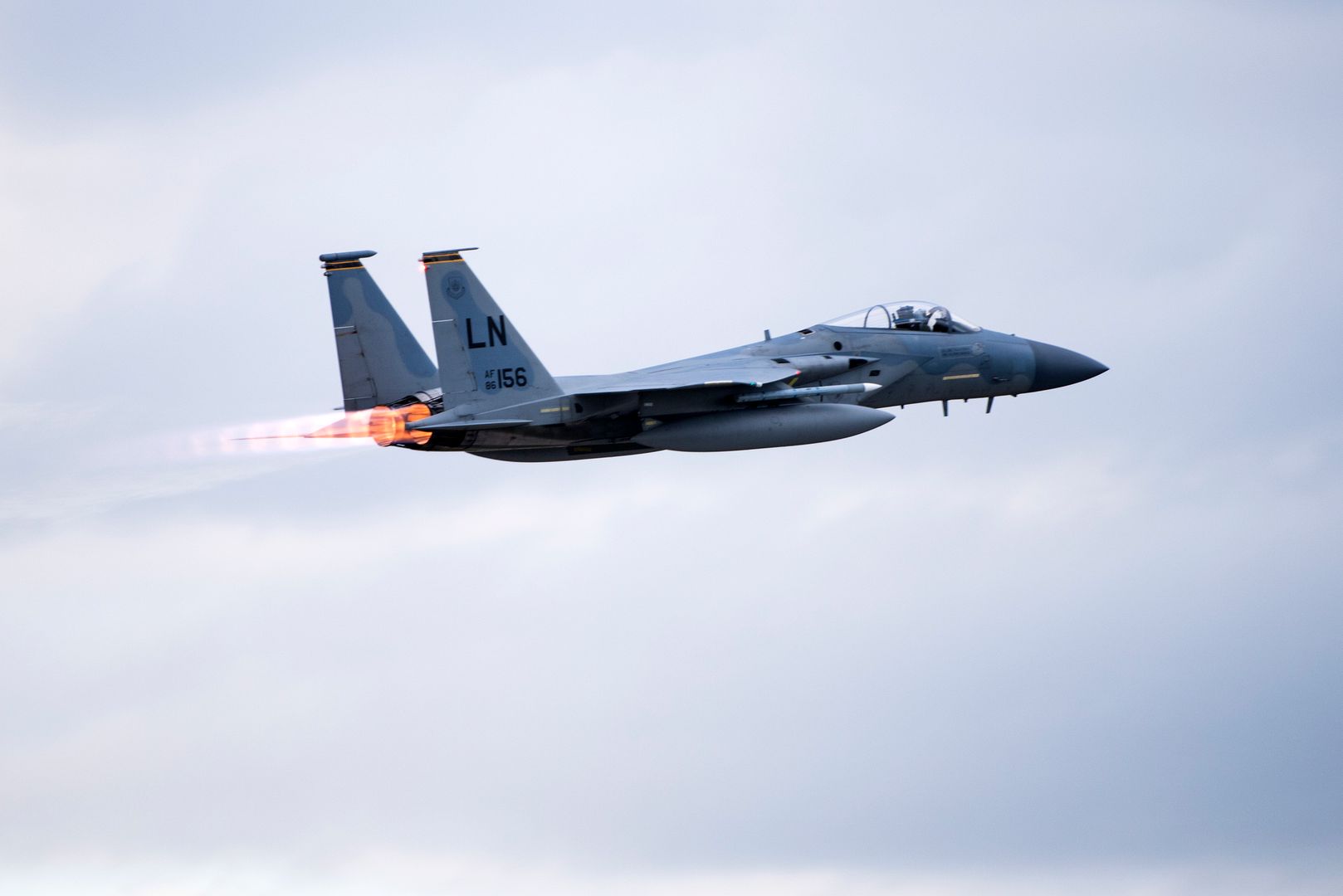
An F-15C Eagle assigned to the 493rd Fighter Squadron, and an Italian F-35A Lightning assigned to the 32nd Stormo, are put on display for a media event during the NATO Tactical Leadership Programme 18-4 at Amendola Air Base, Italy, Nov. 30, 2018. This event marks the first time the course has been held in Italy, from its normal host location at Albacete Air Base, Spain. (U.S. Air Force photo/ Senior Airman Malcolm Mayfield)
EVERETT, Wash., Dec. 3, 2018 ? Boeing?s [NYSE: BA] KC-46 tanker program has completed its planned Phase II receiver certification flight testing following three weeks of flights with F-15E aircraft out of Edwards Air Force Base, Calif.
Boeing and U.S. Air Force KC-46 crews kicked off receiver certification testing with F-16 aircraft in April 2018. Since then the joint team also completed testing with KC-135, C-17, A-10, KC-46, B-52, and F/A-18 aircraft.
?This accomplishment is a tribute to the Boeing/U.S. Air Force team and helps set the stage for the start of Initial Operational Test & Evaluation testing next year,? said Mike Gibbons, Boeing KC-46A tanker vice president and program manager. ?We are seeing great progress in both test and production and expect the positive momentum to continue as we begin delivering aircraft.?
During the certification flight tests, KC-46 and receiver aircraft flew at different airspeeds, altitudes and configurations to ensure compatibility and performance throughout the refueling envelope of each receiver. Now, the Air Force and the Aerial Refueling Certification Agency will review all test data and paperwork before ultimately ?certifying? each aircraft.
"The Air Force crews were with us every step of the way during this critical testing,? said Jake Kwasnik, KC-46 test program manager. ?It was awesome to see everyone working together as we conducted flights out of Boeing Field and also at Edwards and Minot Air Force bases.?
Six test aircraft have now completed more than 3,700 flight hours and supplied more than four million pounds of fuel in flight to receiver aircraft.
Phase III receiver certification testing will be conducted by the Air Force at Edwards Air Force Base in 2019. That testing will include additional receiver aircraft.
The KC-46, derived from Boeing?s commercial 767 airframe, is built in the company?s Everett, Wash., facility. Boeing is currently on contract for the first 52 of an expected 179 tankers for the U.S. Air Force.
The KC-46A is a multirole tanker that can refuel all allied and coalition military aircraft compatible with international aerial refueling procedures and can carry passengers, cargo and patients.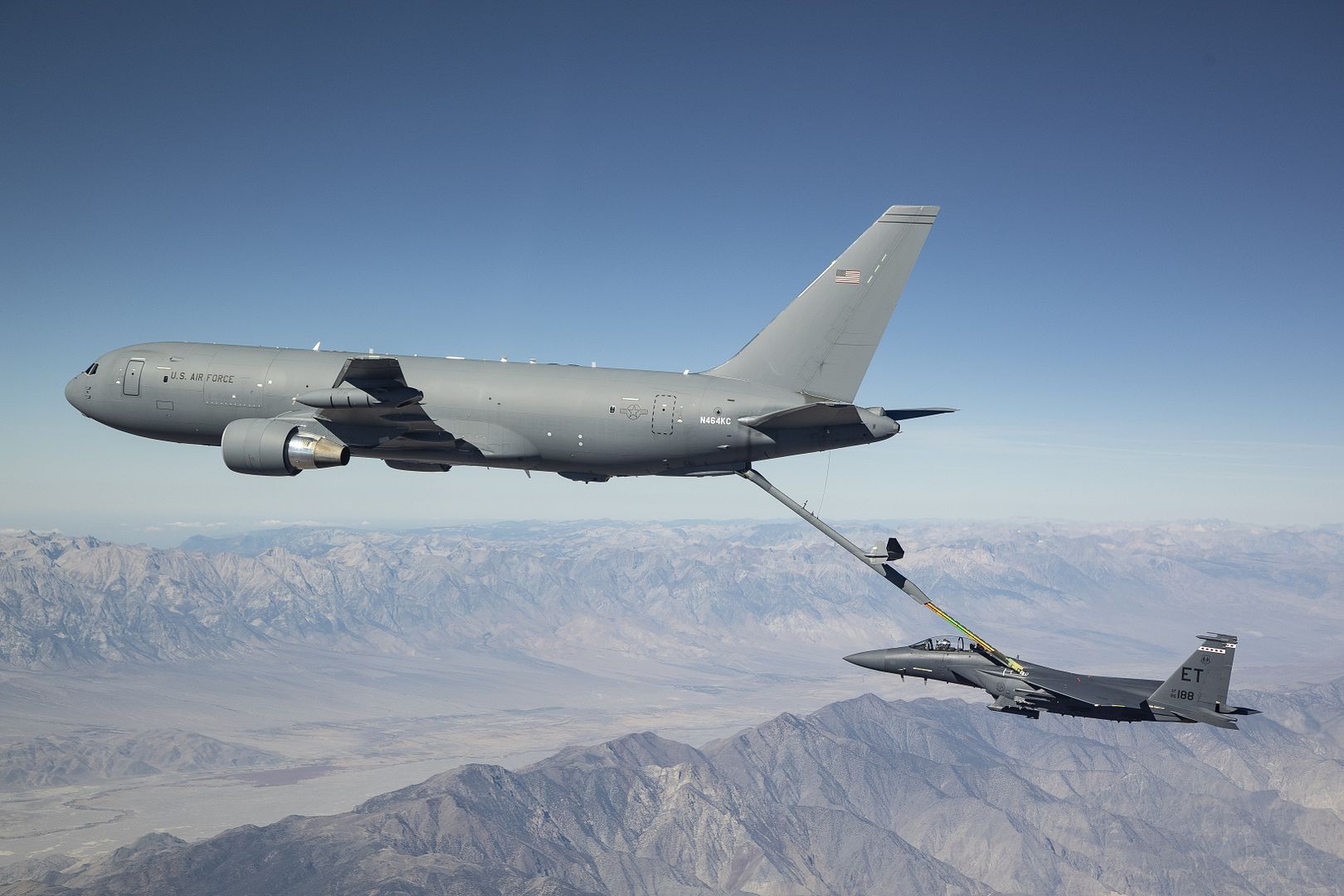
(December 3, 2018) Bell Helicopter, a Textron Inc. company, announced the delivery of the first law enforcement-configured Bell 505 Jet Ranger X to the Sacramento Police Department.Bell outfitted the Sacramento Police Department?s Bell 505 with several law enforcement provisions, including high skid gear and forward/aft hard points for mounting equipment. The aircraft also features additional equipment including a 15? monitor with moving map system, loudhailer, MX-10 EO/IR Sensor and Trakka Beam Searchlight.
?The Bell 505 will be invaluable in critical calls for service when minutes matter and will allow us to best protect the citizens of Sacramento,? said Sergeant Randy Van Dusen of the Sacramento Police Department?s Air Operations Team. ?The ergonomic seats allow the pilot and tactical flight officer to fly for hours comfortably, and the large windows allow for greater visibility that makes searching for suspects and missing persons easier.?
With a speed of 125 knots (232 km/h) and useful load of 1,500 pounds (680 kg), the Bell 505 is designed to be safe and easy to fly while providing significant value to the operator. The customer-driven design of the aircraft places safety, performance and affordability at the forefront, blending proven systems with advanced technology and a sleek, modern design.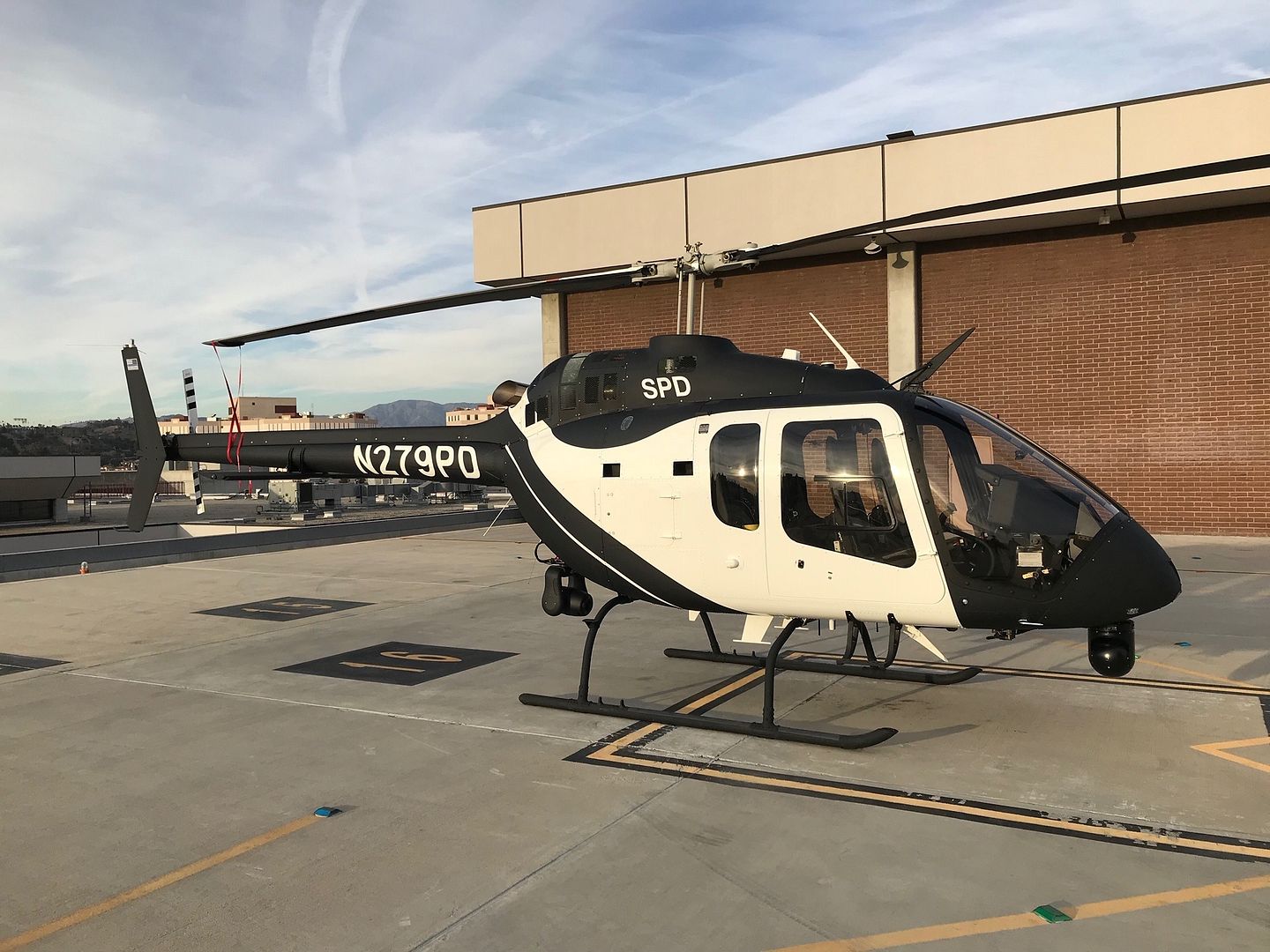
News Article / December 1, 2018
The Canadian Armed Forces gave a final salute to the CH-124 Sea King maritime helicopter, marking its more than five decades of service, in a parade held today in Victoria, British Columbia.
The Sea King will officially retire from service by December 31, 2018 as the RCAF completes its transition to the new CH-148 Cyclone maritime helicopter.
?The retirement of the CH-124 Sea King is truly historic for the Royal Canadian Air Force,? said Lieutenant-General Al Meinzinger, commander of the RCAF. ?No other fleet has served as long as the Sea King, and its 55 years of service are a monument not only to its durability and capability, but to the men and women who operated, maintained and otherwise supported this incredible helicopter.?
The CH-124 Sea King is a ship-borne maritime helicopter and the longest-serving aircraft in the RCAF fleet. It was procured by the Royal Canadian Navy in 1963 mainly for anti-submarine warfare but its versatility enabled it to serve in a variety of roles and operations throughout its history. The Sea King supported operations at home and around the world for 55 years.
?The Royal Canadian Navy has been well served by the Sea King?our longest range weapon and sensor?for decades. It was an honour to fly with the crew of Black Horse, the helicopter deployed with HMCS St. John?s, during the Sea King?s last operational deployment supporting NATO assurance measures this summer,? said Vice-Admiral M. F. Ron Lloyd, commander of the Royal Canadian Navy. ?Canada?s Navy and the Royal Canadian Air Force continue to forge ahead with an exciting new chapter, marked by the first operational deployment of Avalanche, the Cyclone helicopter currently deployed on NATO operations with HMCS Ville de Quebec.?
Thousands of men and women have been involved in the operations and maintenance of the CH-124 Sea King. There are several examples of more than one generation of serving military aircrew and technicians from the same family working on the aircraft, sometimes at the same time.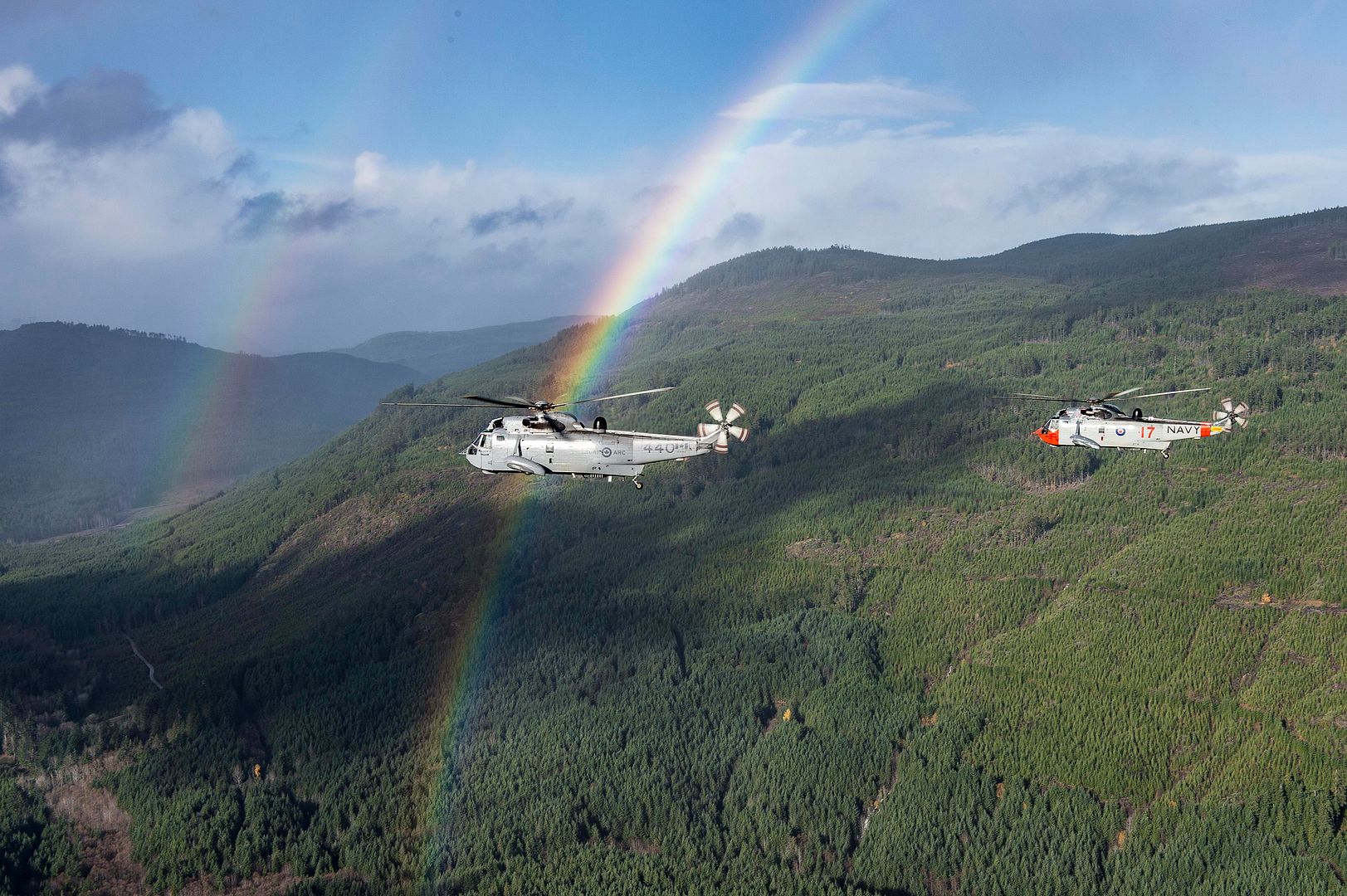
The CH-124 Sea King fleet has flown more than 550,000 hours, which, at a cruising speed of 162 km/h, is roughly equivalent to flying 7,200 times around the Earth, or the equivalent of the distance from Earth to Mars.
Over its long history, the CH-124 Sea King participated in a wide variety of operations, including NATO and other international maritime operations; search and rescue; disaster relief; counter-narcotic operations; international peacekeeping; counter-piracy; and pollution and fisheries patrols.
Most recently, a CH-124 Sea King was deployed in a transport role during Operation Lentus 18-05, the Canadian Armed Forces? support to fire-fighting operations in British Columbia.
The last overseas deployment for the Sea King came during the first half of 2018 aboard Her Majesty?s Canadian Ship (HMCS) St. John?s as part of Operation Reassurance.
On January 26, 2018, the last operational Sea King flight for 423 Maritime Helicopter Squadron, based at 12 Wing Shearwater, Nova Scotia, was marked with a flypast in Halifax-Dartmouth. The final Sea King flight will occur at 443 Maritime Helicopter Squadron, Patricia Bay, British Columbia, in December 2018.
As the fleet nears final retirement, disposal planning for the CH-124 Sea King is ongoing. This includes some aircraft being put up for sale and some being retained by the Department of National Defence and the Canada Aviation and Space Museum for display or training purposes. Those going to museums will continue their service as ambassadors of maritime aviation.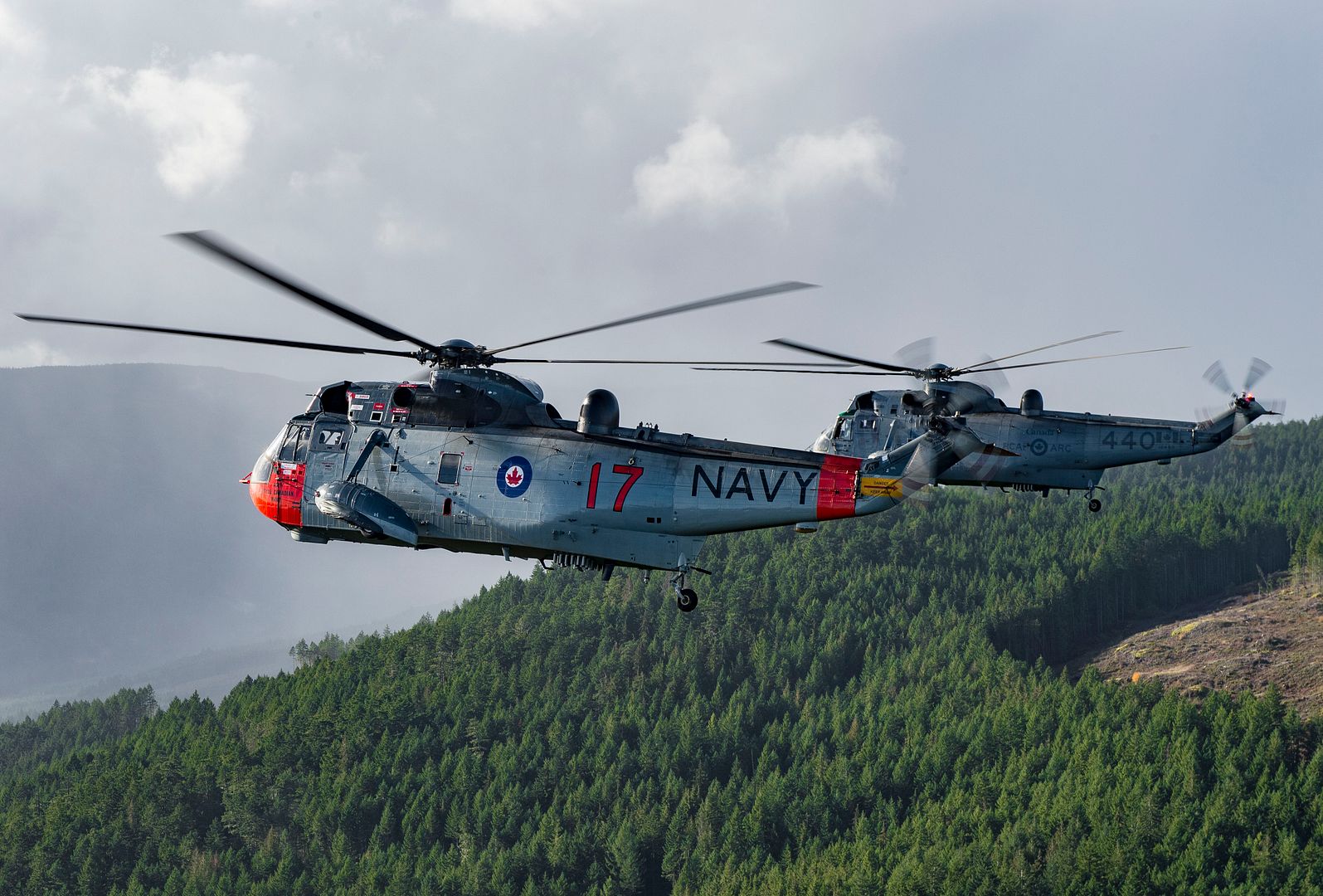
-
 Main AdminU.S. Marine Corps Brig. Gen. Michael J. Borgschulte (right), assistant wing commander, 3rd Marine Aircraft Wing (3rd MAW), and U.S. Marine Corps Maj. Zerbin M. Singleton (left), AH-1Z Viper helicopter pilot, Marine Light Attack Helicopter Squadron 469, Marine Aircraft Group 39, 3rd MAW, pose in front of an AH-1Z Viper, Dec. 3, 2018. Brig. Gen. Borgschulte, whose main headquarters is located at MCAS Miramar, California, was visiting MCAS Camp Pendleton as a part of a non-operational battlefield circulation to gain enhanced situational awareness on the 3rd MAW units and assets stationed at MCAS Camp Pendleton. (U.S. Marine Corps photo by Cpl. Emmanuel Necoechea)
Main AdminU.S. Marine Corps Brig. Gen. Michael J. Borgschulte (right), assistant wing commander, 3rd Marine Aircraft Wing (3rd MAW), and U.S. Marine Corps Maj. Zerbin M. Singleton (left), AH-1Z Viper helicopter pilot, Marine Light Attack Helicopter Squadron 469, Marine Aircraft Group 39, 3rd MAW, pose in front of an AH-1Z Viper, Dec. 3, 2018. Brig. Gen. Borgschulte, whose main headquarters is located at MCAS Miramar, California, was visiting MCAS Camp Pendleton as a part of a non-operational battlefield circulation to gain enhanced situational awareness on the 3rd MAW units and assets stationed at MCAS Camp Pendleton. (U.S. Marine Corps photo by Cpl. Emmanuel Necoechea)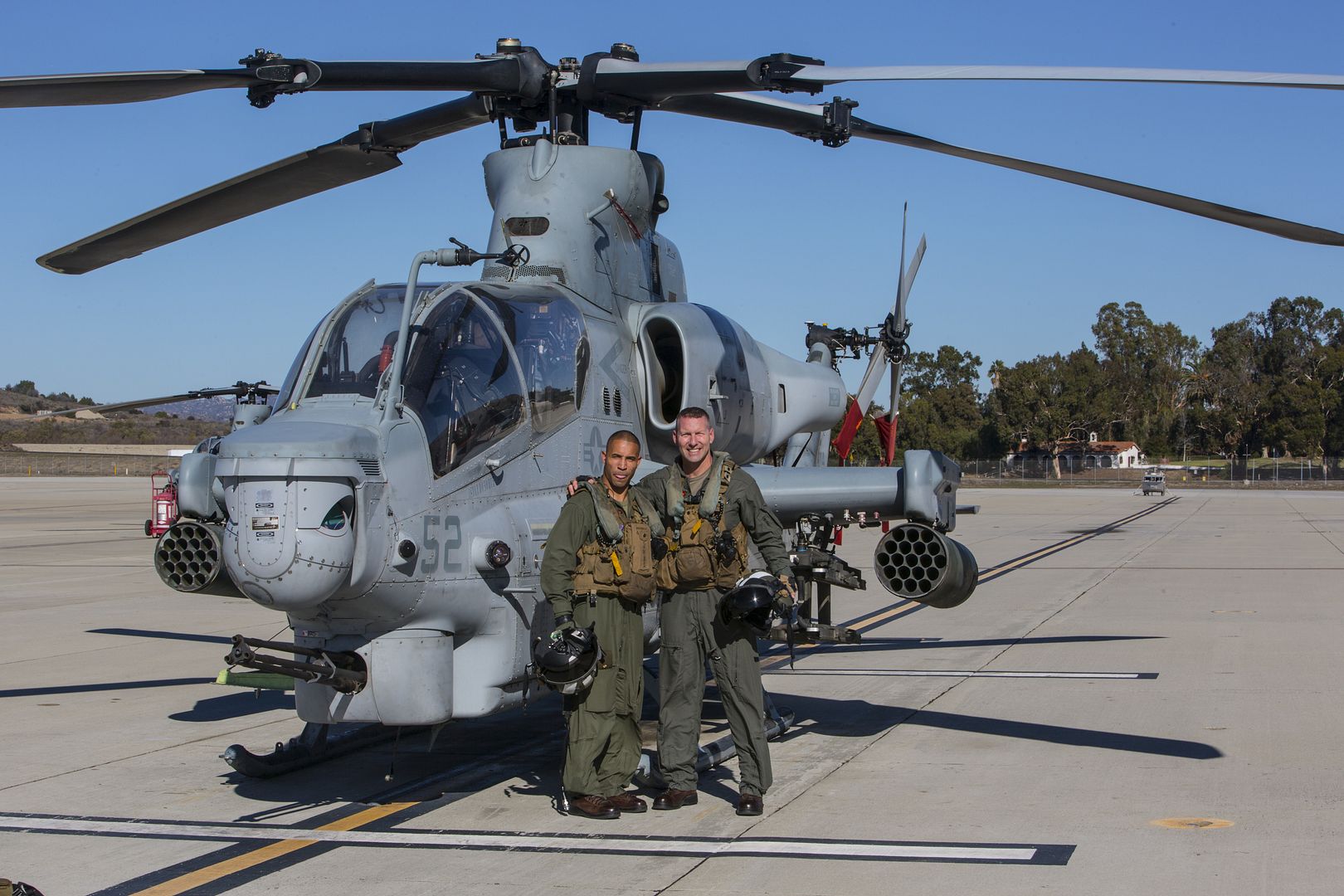
INDIAN OCEAN (Dec. 3, 2018) An F/A-18E Super Hornet, with Strike Fighter Squadron (VFA) 14, prepares to land on the flight deck aboard the Nimitz-class aircraft carrier USS John C. Stennis (CVN 74). John C. Stennis is underway conducting routine operations in the U.S. Pacific Fleet area of operations. (U.S. Navy photo by Mass Communication Specialist 3rd Class Grant G. Grady)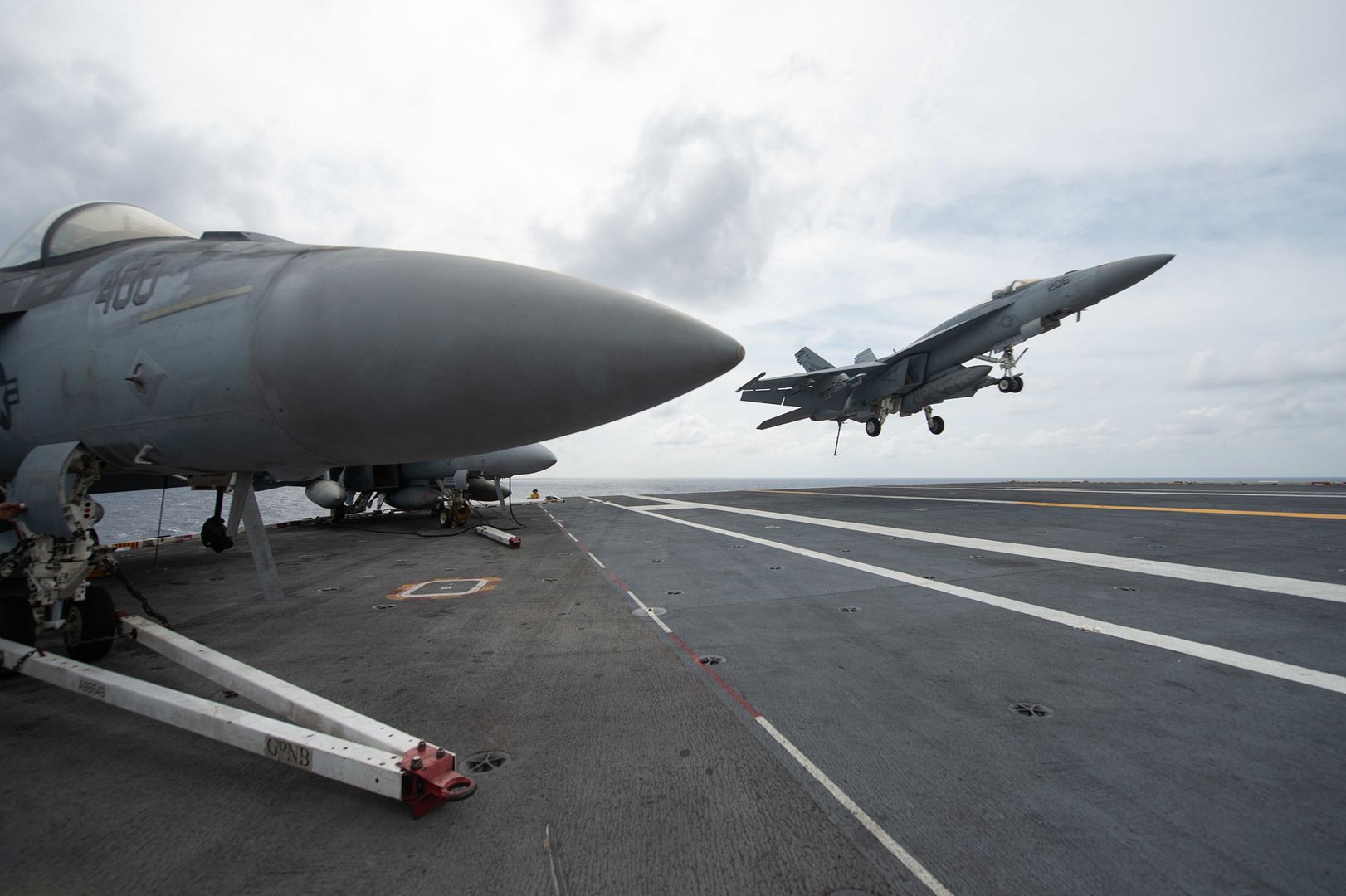
INDIAN OCEAN (Dec. 3, 2018) Sailors direct F/A-18E Super Hornets, with Strike Fighter Squadron (VFA) 14, onto an aircraft elevator aboard the Nimitz-class aircraft carrier USS John C. Stennis (CVN 74). John C. Stennis is underway conducting routine operations in the U.S. Pacific Fleet area of operations. (U.S. Navy photo by Mass Communication Specialist 3rd Class Grant G. Grady)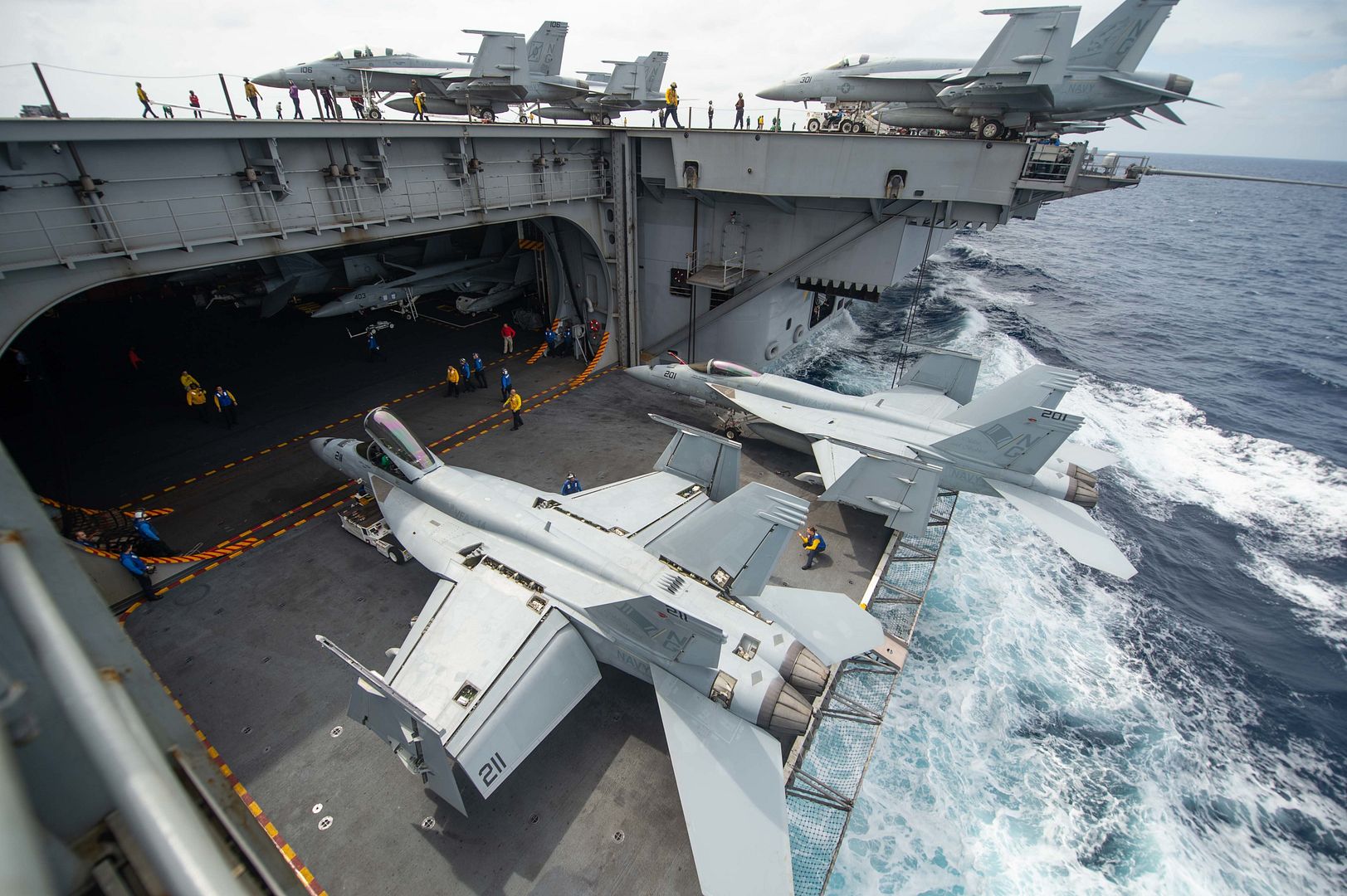
U.S. service members of the joint forces honor guard provide military honors during the departure of former President George H. W. Bush, the 41st President of the United States, from Ellington Field Joint Reserve Base, Texas Dec. 03, 2018. Nearly 4,000 military and civilian personnel from across all branches of the U.S. armed forces, including Reserve and National Guard components, provided ceremonial support during George H. W. Bush?s, the 41st President of the United States state funeral. (Air National Guard Photo's by Staff Sgt. Daniel J. Martinez)
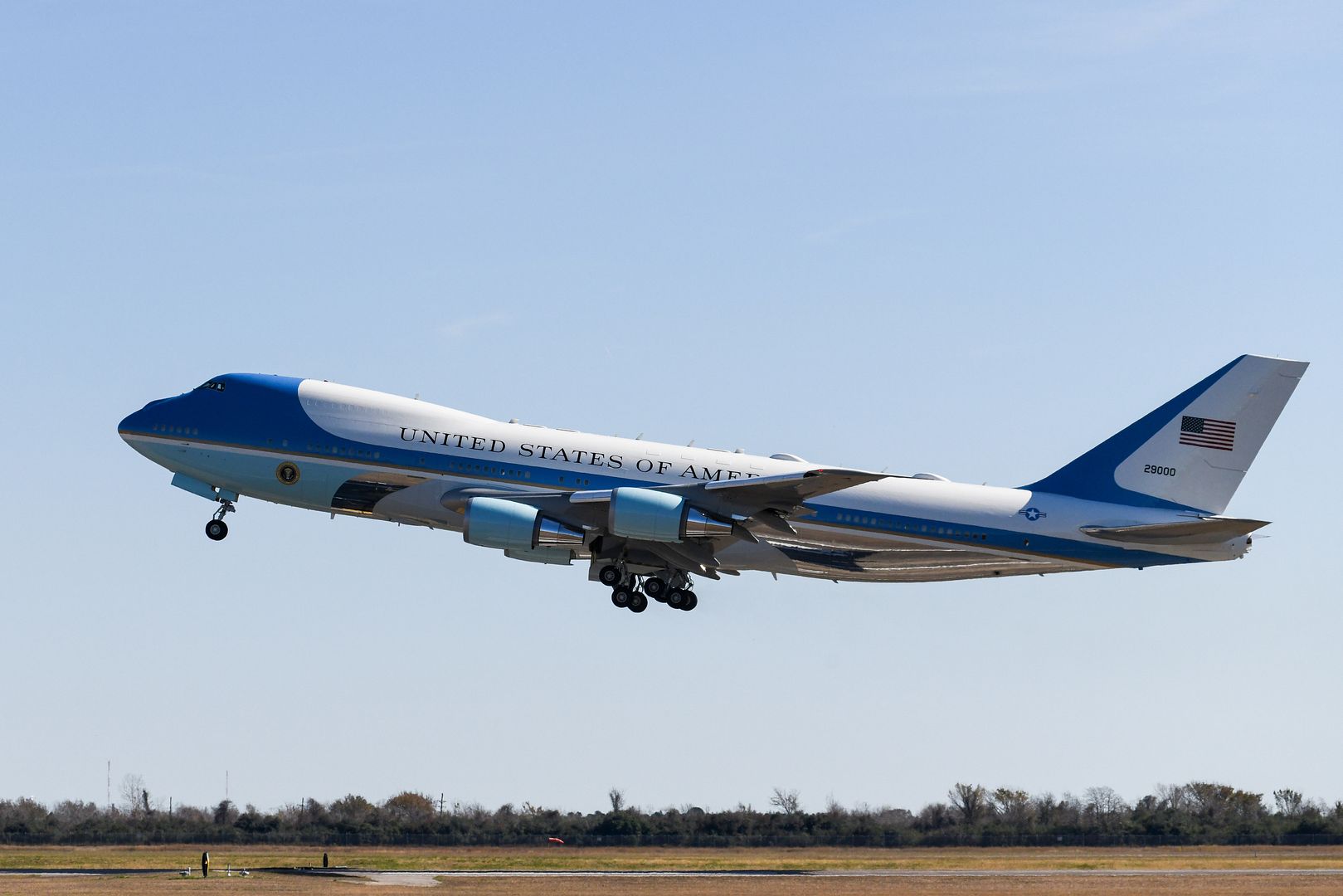
A 2nd Fighter Squadron T-38 Talon taxis down the runway at Eglin Air Force Base, Fla., Nov. 30. Seven Talons arrived here, their temporary home as part of a mission shift by the Air Force as Hurricane Michael recovery efforts continue at Tyndall. The 2nd FS is one of two T-38 Talon adversary squadrons. They provide air-to-air threat replication to support F-22 Raptor combat and formal training squadrons. The squadron also maintains readiness to augment worldwide combat operations. (U.S. Air Force photo/Ilka Cole)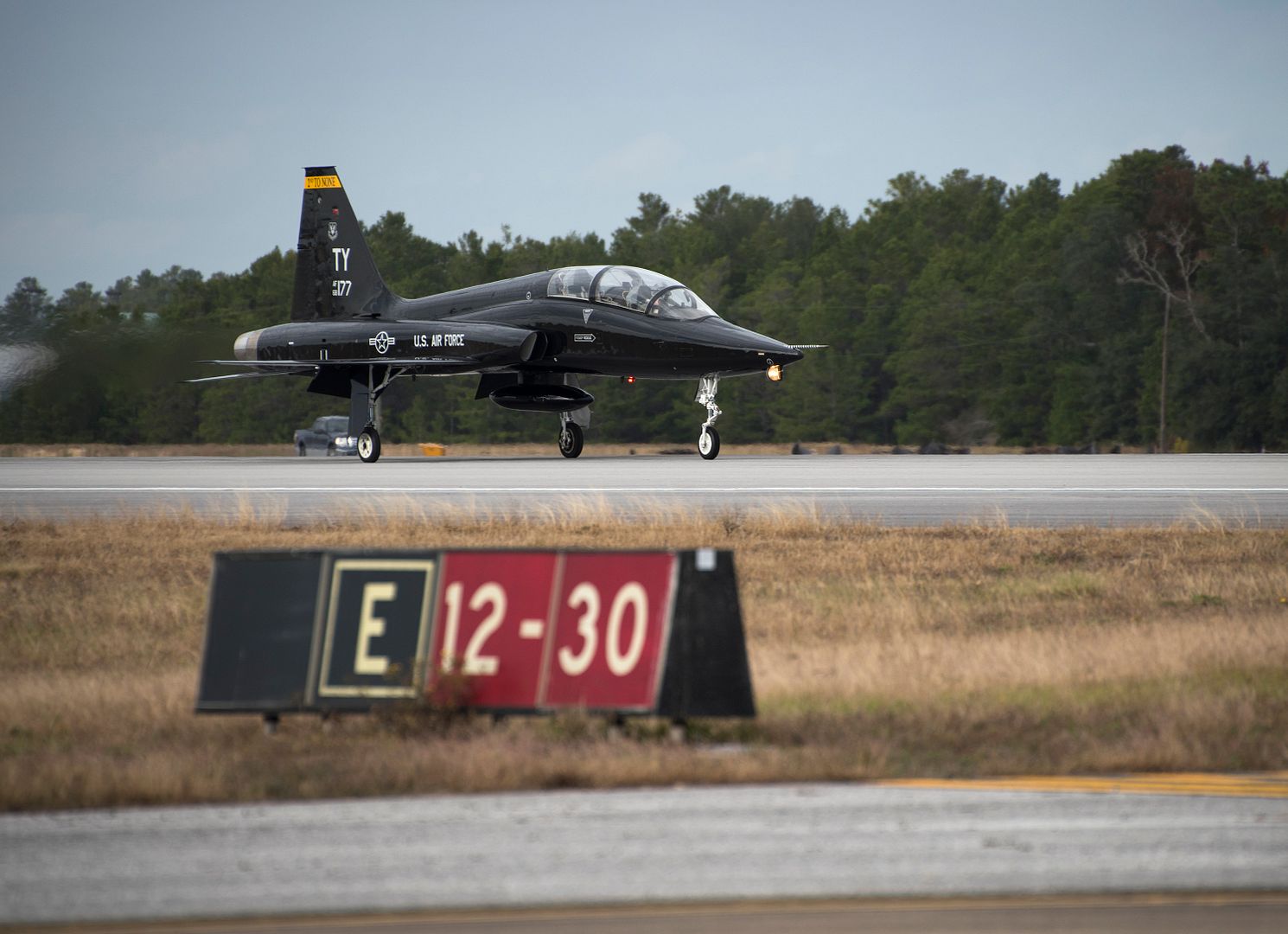
A 2nd Fighter Squadron maintainer marshals the T-38 Talon at Eglin Air Force Base, Fla., Nov. 30. Seven Talons arrived here, their temporary home as part of a mission shift by the Air Force as Hurricane Michael recovery efforts continue at Tyndall. The 2nd FS is one of two T-38 Talon adversary squadrons. They provide air-to-air threat replication to support F-22 Raptor combat and formal training squadrons. The squadron also maintains readiness to augment worldwide combat operations. (U.S. Air Force photo/Ilka Cole)
MADRID, Dec. 4, 2018 /PRNewswire/ -- Lockheed Martin (NYSE: LMT) and Airbus have signed an agreement to jointly explore opportunities to meet the growing demand for aerial refueling for U.S. defense customers.
The companies will seek to provide aerial-refueling services to address any identified capacity shortfall and to meet requirements for the next generation of tankers capable of operating in the challenging environments of future battlespace.
"Reliable and modernized aerial refueling is an essential capability for our customers to maintain their global reach and strategic advantage," said Lockheed Martin Chairman, President and CEO Marillyn Hewson. "By combining the innovation and expertise of Airbus and Lockheed Martin, we will be well-positioned to provide the United States Air Force with the advanced refueling solutions needed to meet 21st century security challenges."
"The U.S. Air Force deserves the best aerial-refueling technology and performance available under the sun and this great industry team, Lockheed Martin and Airbus, will offer exactly that," said Tom Enders, Airbus CEO.
The companies are taking a cooperative approach, with the Airbus A330 Multi Role Tanker Transport (A330 MRTT) at its heart, to examine a broad spectrum of opportunities. These may range from ways to support critical near-term air-refueling needs, such as a fee-for-service structure to conceptualizing the tanker of the future.
Airbus Defence and Space Head of Military Aircraft Fernando Alonso said, "The A330 MRTT has been selected by a dozen nations around the world. It is extensively proven in live operations and has been repeatedly praised by major air forces. We are convinced that the combination of Airbus' tanker expertise with Lockheed Martin's extensive U.S. presence, has the potential to provide highly effective solutions for current and future U.S. military aerial refueling requirements."
Lockheed Martin has a long and successful history of systems integration, manufacturing and maintenance, repair and overhaul operations with large airlift and tanker aircraft. When combined with Airbus expertise in this competitive space, the two companies will field a strong team to address future air refueling needs.
"Airbus is an industry leader in the aerial refueling area, and Lockheed Martin is known for cutting-edge defensive technologies and capabilities," said Michele Evans, executive vice president, Lockheed Martin Aeronautics. "This is a great opportunity for our two companies to combine our expertise ? cooperating to develop world-class solutions for critical needs around the world."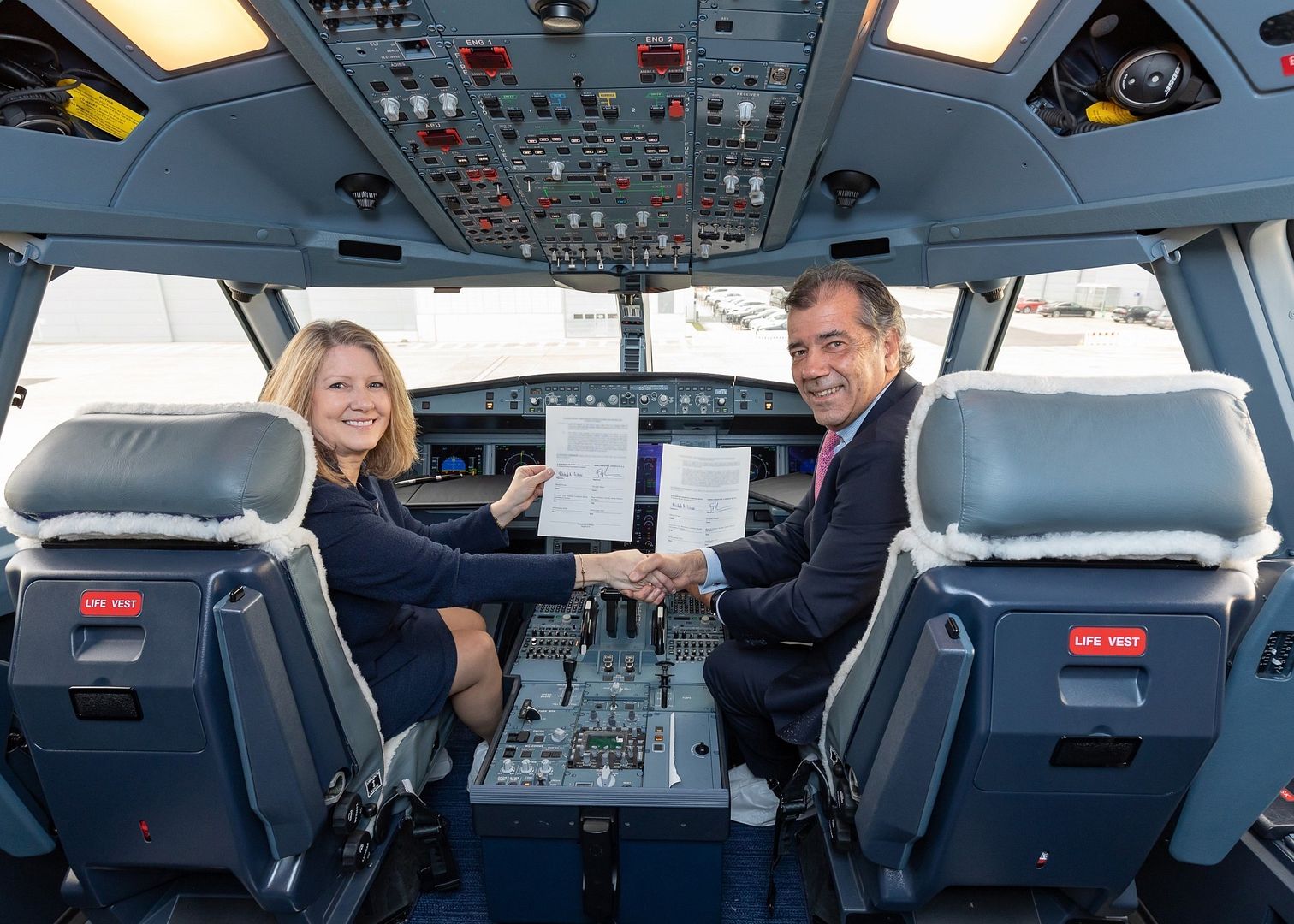
Amsterdam, Netherlands, December 4th, 2018 ? Embraer has signed a firm contract for three E190 aircraft with Nordic Aviation Capital (NAC), the global leader in regional aircraft leasing. This agreement was announced as a Letter of Intent (LoI) in July at the 2018 Farnborough Air Show. The firm order has a value of USD 156 million, based on Embraer?s list prices, and will be included in Embraer?s fourth quarter backlog.
These new aircraft will join the existing 155 E-Jets currently owned by NAC.
Embraer is the world?s leading manufacturer of commercial jets up to 150 seats. The Company has 100 customers from all over the world operating the ERJ and E-Jet families of aircraft. For the E-Jets program alone, Embraer has logged almost 1,800 orders and 1,400 deliveries, redefining the traditional concept of regional aircraft.
About Nordic Aviation Capital (NAC)
NAC is the industry?s leading regional aircraft lessor serving over 70 airline customers in 50 countries. The company provides aircraft to well-established carriers such as British Airways, Air Canada, LOT, Azul, Lufthansa, Garuda, Flybe, Aerom?xico and airBaltic as well as major regional carriers including Air Nostrum and Wider?e. NAC?s current fleet of nearly 500 owned and managed aircraft includes ATR 42, ATR 72, Bombardier Dash 8, CRJ900, CRJ1000, A220, E170, E175, E190 and E195.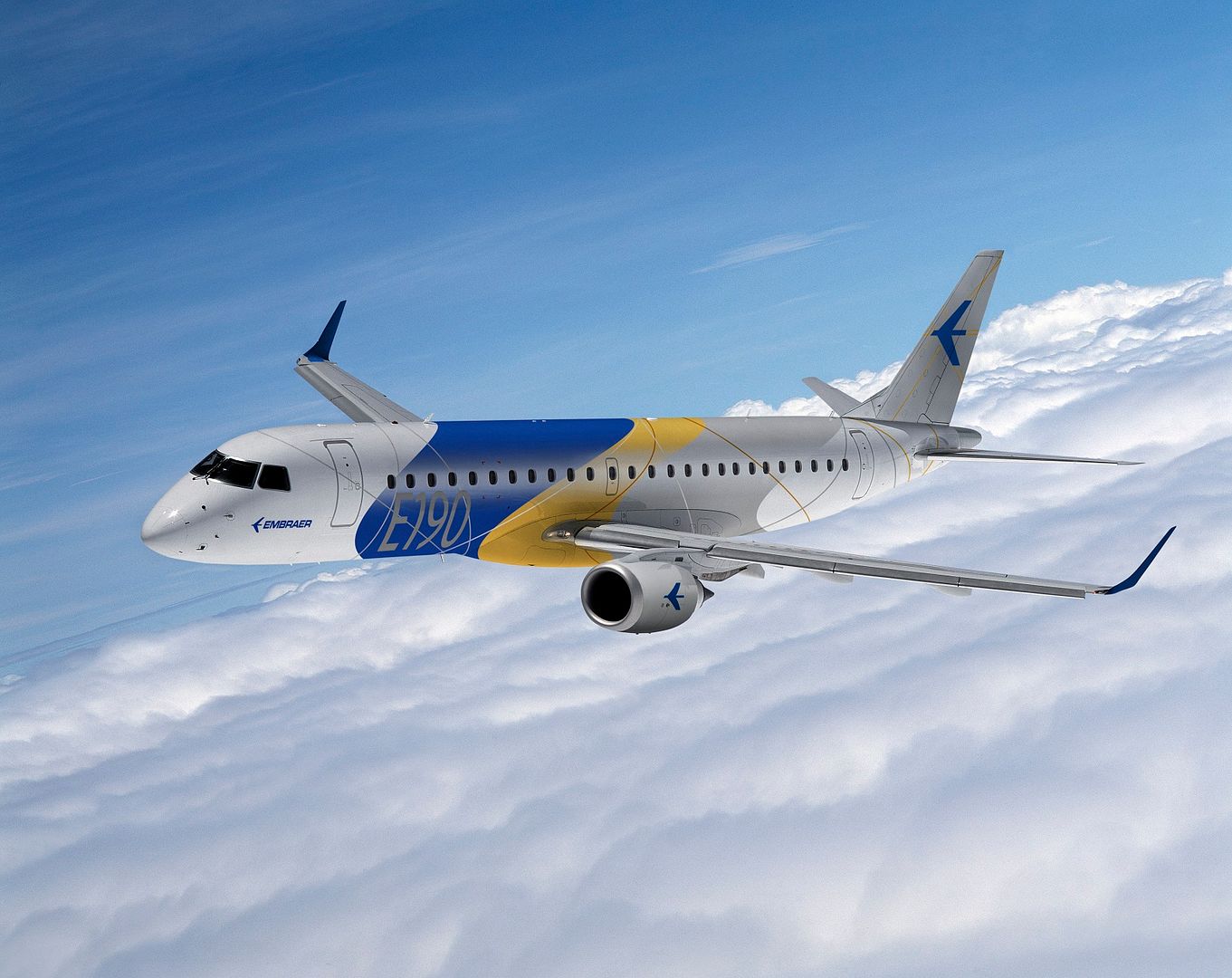
The new C-27J Spartan baseline configuration ? characterized by a brand new avionics system, new cockpit control panels and LED aircraft lights ? completed its first flight yesterday at Leonardo?s Aircraft Division Turin plant.
Lucio Valerio Cioffi, Leonardo?s Aircraft Division Managing Director, said: ?New operators will enjoy modern avionics and improved operational cost and performance within the aircraft flyaway price. The main benefits of the new C-27J baseline configuration are compliance with new civil aviation regulations and military requirements obsolescence risk reduction.?
The C-27J new avionic system is designed to comply with Next Generation Air Traffic Control requirements, like SESAR and NextGen, and provides TCAS 7.1 (Traffic Collision Avoidance System) capability. It features many major upgrades such as a new FMS (Flight Management System) with RNP (Required Navigation Performances) and LPV (Localizer Performance with Vertical Guidance) approach capabilities. The IFF (Identification Friend or Foe) Mode 5 has been updated at the latest standard. New cockpit displays, new weather radar, new radio navigation, enhanced satellite communications and radio communication capabilities, new intercommunication system, new cockpit and cargo panels and lighting system with led technology have been also included. Moreover, former avionics and general systems interface boxes have been replaced with new equipment made by Leonardo?s Airborne and Space Systems Division.
The new baseline configuration is also offered in retrofit to Current Operators willing to upgrade the capabilities of their C-27J fleet.
The C-27J Spartan has already been ordered by the Air Forces of Italy, Greece, Bulgaria, Lithuania, Romania, Slovakia, United States, Mexico, Australia, Peru, Kenya, Morocco, Chad and another African country for a total of 85 aircraft.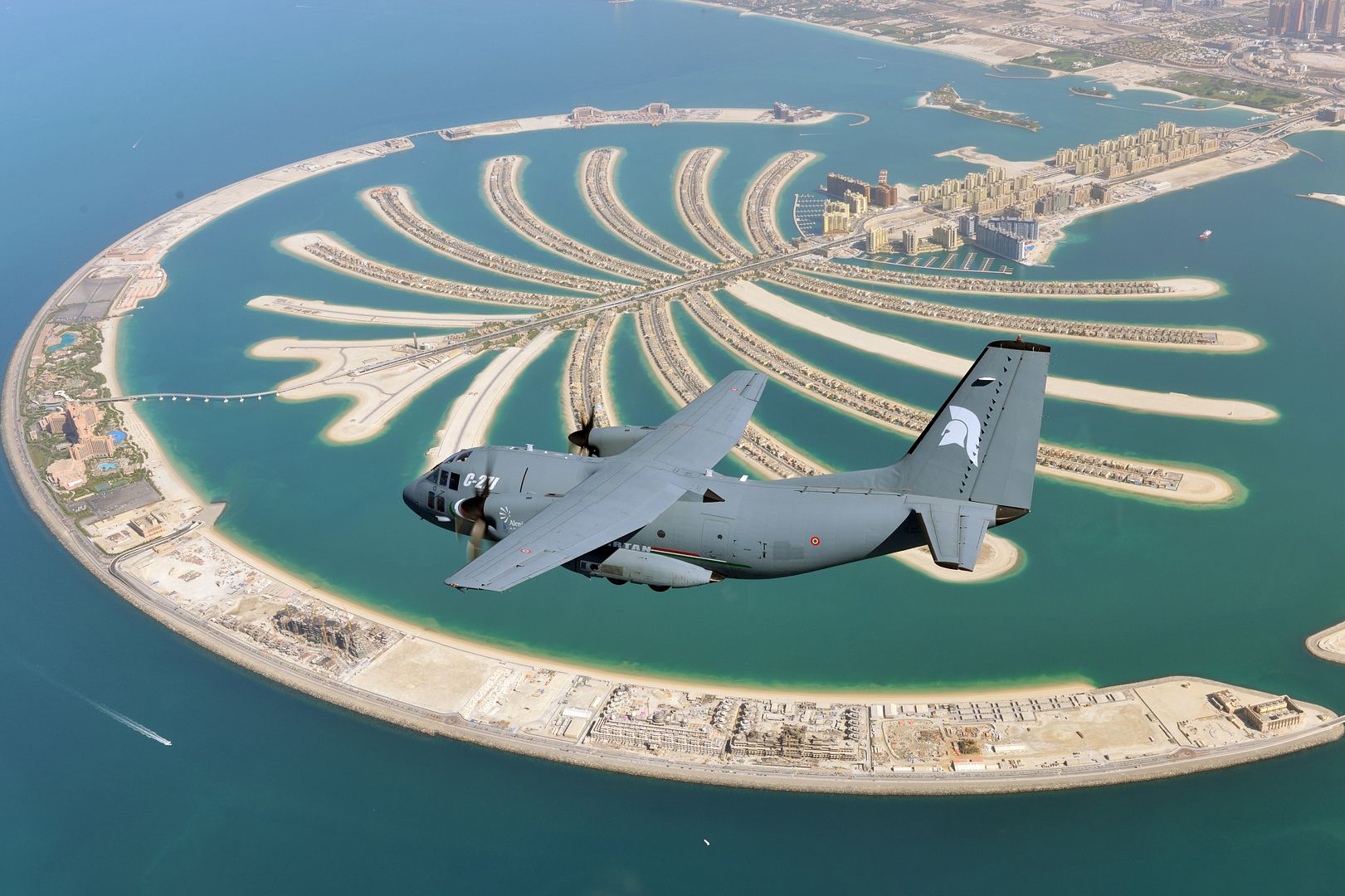
-
 Main AdminFORT WORTH, Texas (Dec. 4, 2018) An F/A-18 assigned to Strike Fighter Squadron 103 with President George H. W. Bush's name and the number 41 to signify his presidency displayed on the side lands at Naval Air Station Fort Worth Joint Reserve Base, Texas, a couple days before it is schedulede to lead a record-breaking 21-aircraft flyover at the late president's memorial service in College Station, Texas. Dozens more Navy aircraft are scheduled to arrive in Fort Worth Dec. 5 where they will rendevous before departing for the scheduled flyover Dec. 6. U.S. Navy photo's by Carl Richards (Released).
Main AdminFORT WORTH, Texas (Dec. 4, 2018) An F/A-18 assigned to Strike Fighter Squadron 103 with President George H. W. Bush's name and the number 41 to signify his presidency displayed on the side lands at Naval Air Station Fort Worth Joint Reserve Base, Texas, a couple days before it is schedulede to lead a record-breaking 21-aircraft flyover at the late president's memorial service in College Station, Texas. Dozens more Navy aircraft are scheduled to arrive in Fort Worth Dec. 5 where they will rendevous before departing for the scheduled flyover Dec. 6. U.S. Navy photo's by Carl Richards (Released).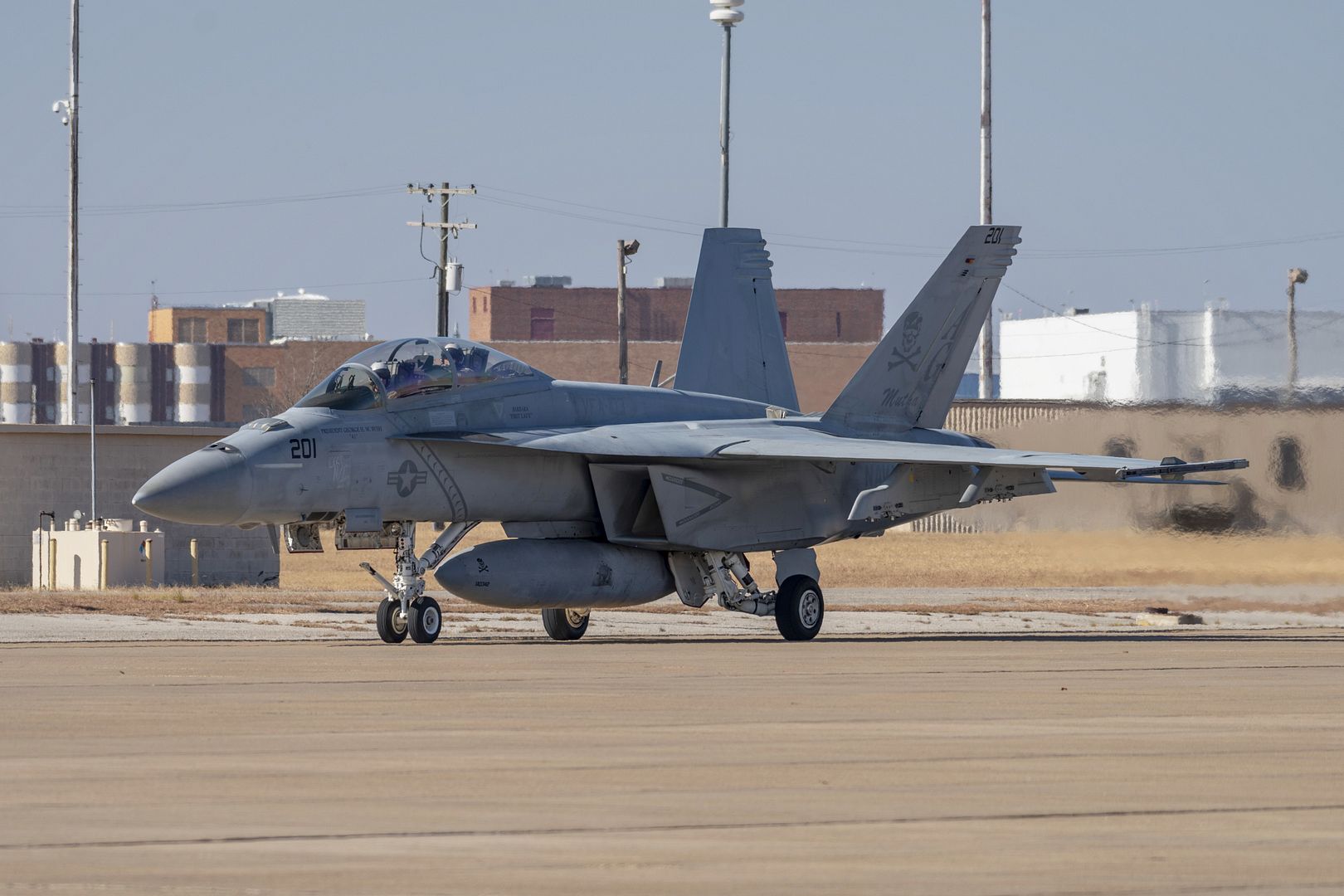
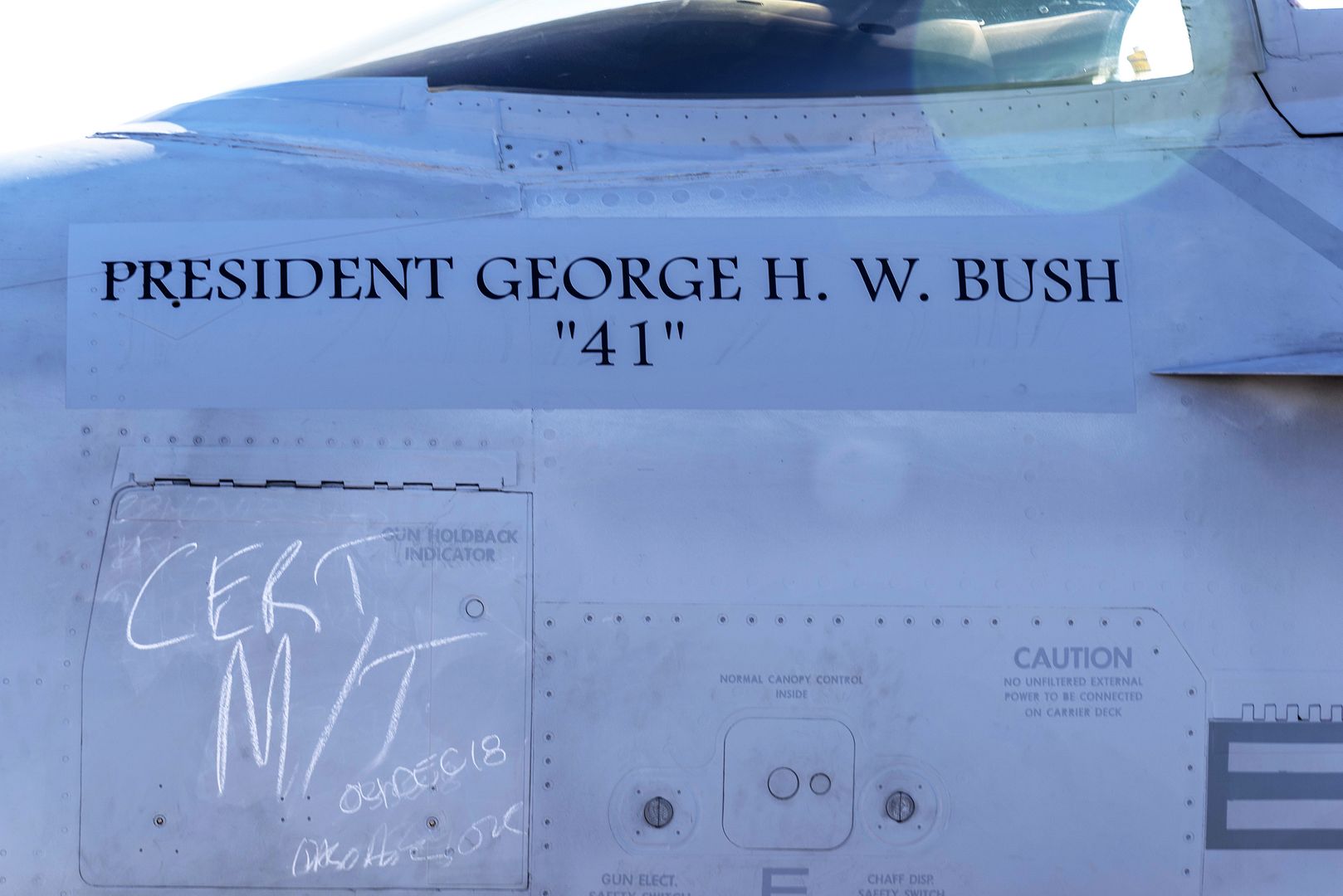
A B-52H Stratofortress Bomber assigned to the 96th Expeditionary Bomb Squadron, deployed from Barksdale Air Force Base, La., sits on the flightline after arriving for exercise Lightning Focus at Royal Australian Air Force (RAAF) Base Darwin, Australia, Nov. 29, 2018. Two bombers along with aircrew and support personnel deployed to RAAF Darwin to enable the U.S. to train and increase interoperability with Australian counterparts in support of U.S. Indo-Pacific Command?s Enhanced Air Cooperation (EAC) program. The EAC comprises a range of air exercises and training activities designed to enhance regional cooperation, coordination and interoperability between Australian and U.S. service members. (U.S. Air Force photo by Senior Airman Christopher Quail)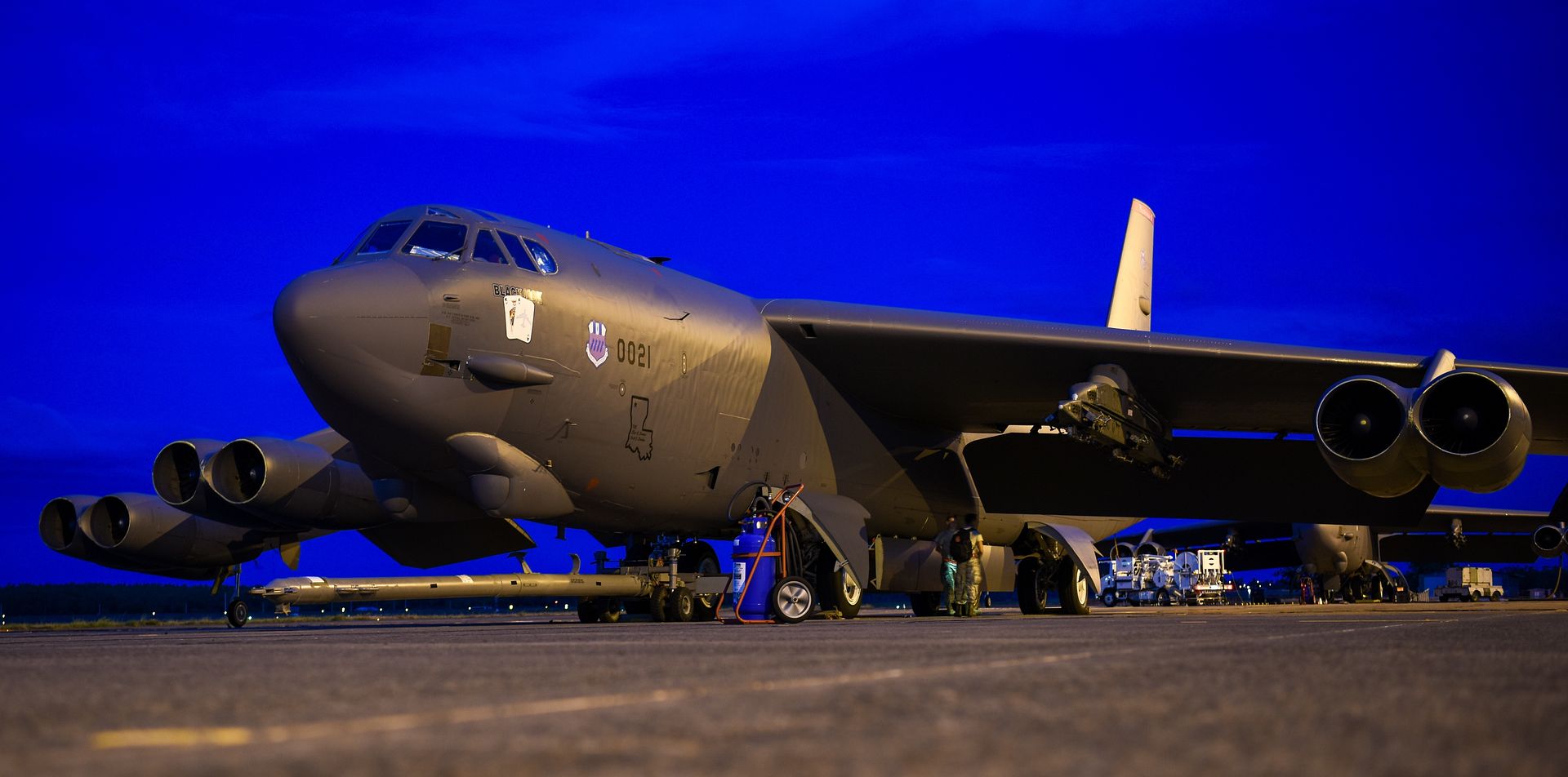
A U.S. Air Force B-52 Stratofortress, assigned to the 96th Expeditionary Bomb Squadron, deployed from Barksdale Air Force Base, Louisiana, opens its drag chute during exercies Lightning Focus at Royal Australian Air Force Base (RAAF) Darwin, Australia, Dec. 3, 2018. Two bombers along with aircrew and support personnel deployed to RAAF Darwin to enable the U.S. to train and increase interoperability with Australian counterparts in support of U.S. Indo-Pacific Command?s Enhanced Air Cooperation (EAC) program. (U.S. Air Force photo by Senior Airman Christopher Quail)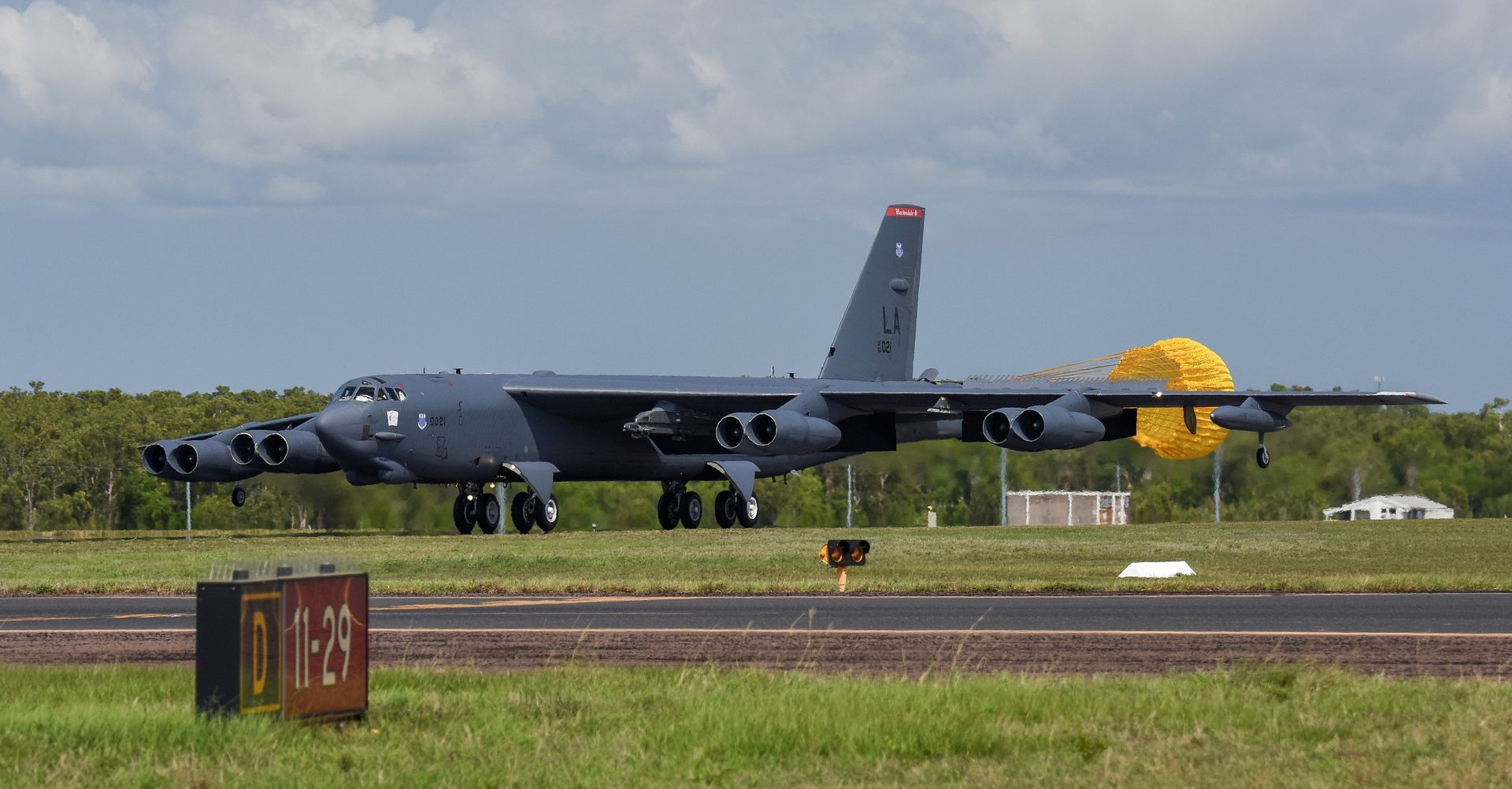
An A-10C ?Warthog? aircraft arrives at MacDill Air Force Base, Fla. Dec. 3, 2018 for Operation Guardian Blitz. The 122nd Fighter Wing and the 163rd Fighter Squadron from Fort Wayne, Ind. continuously training to prepare for defense of the nation. (U.S. Air National Guard photo's by Senior Airman Rita Foster/Released)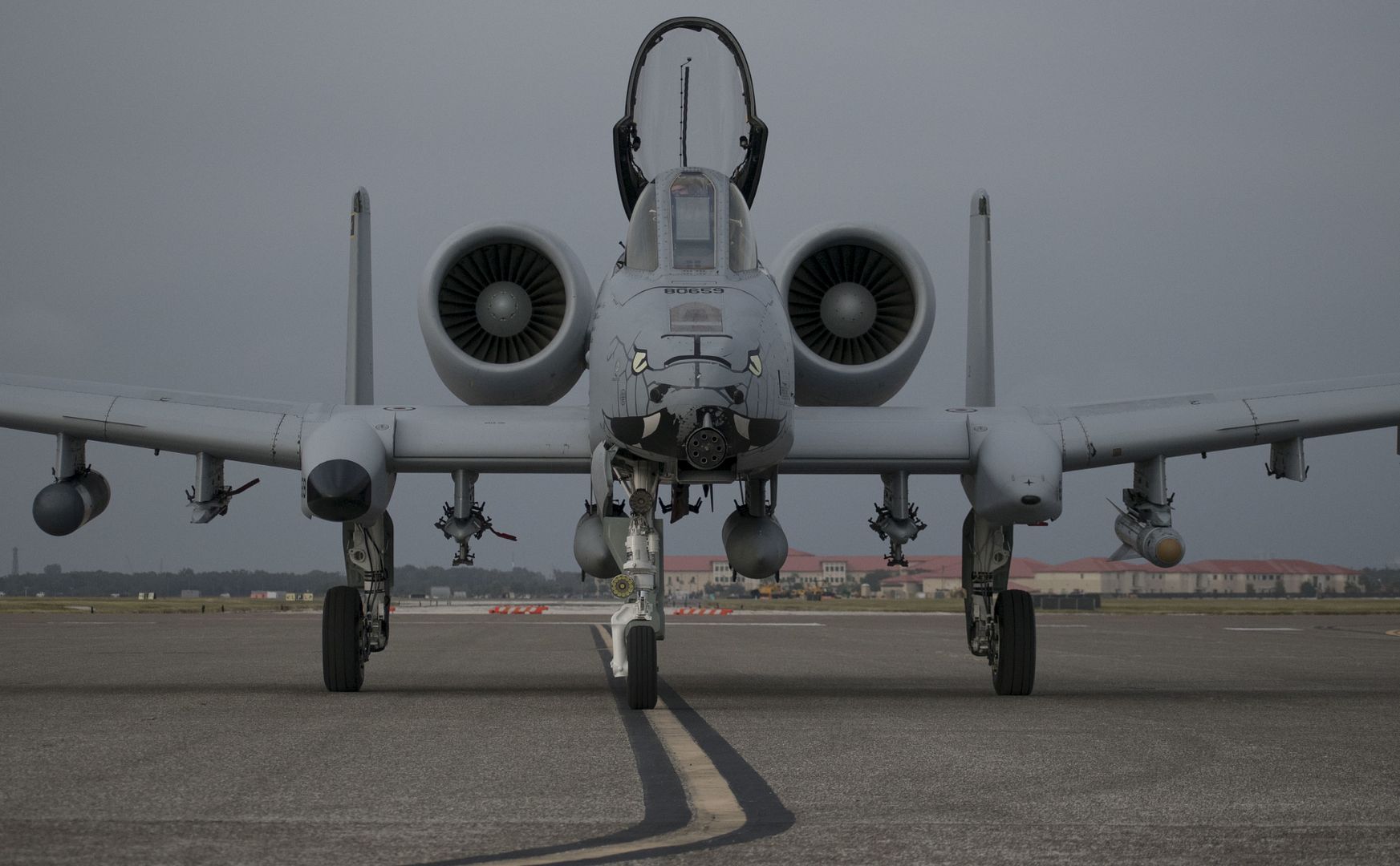
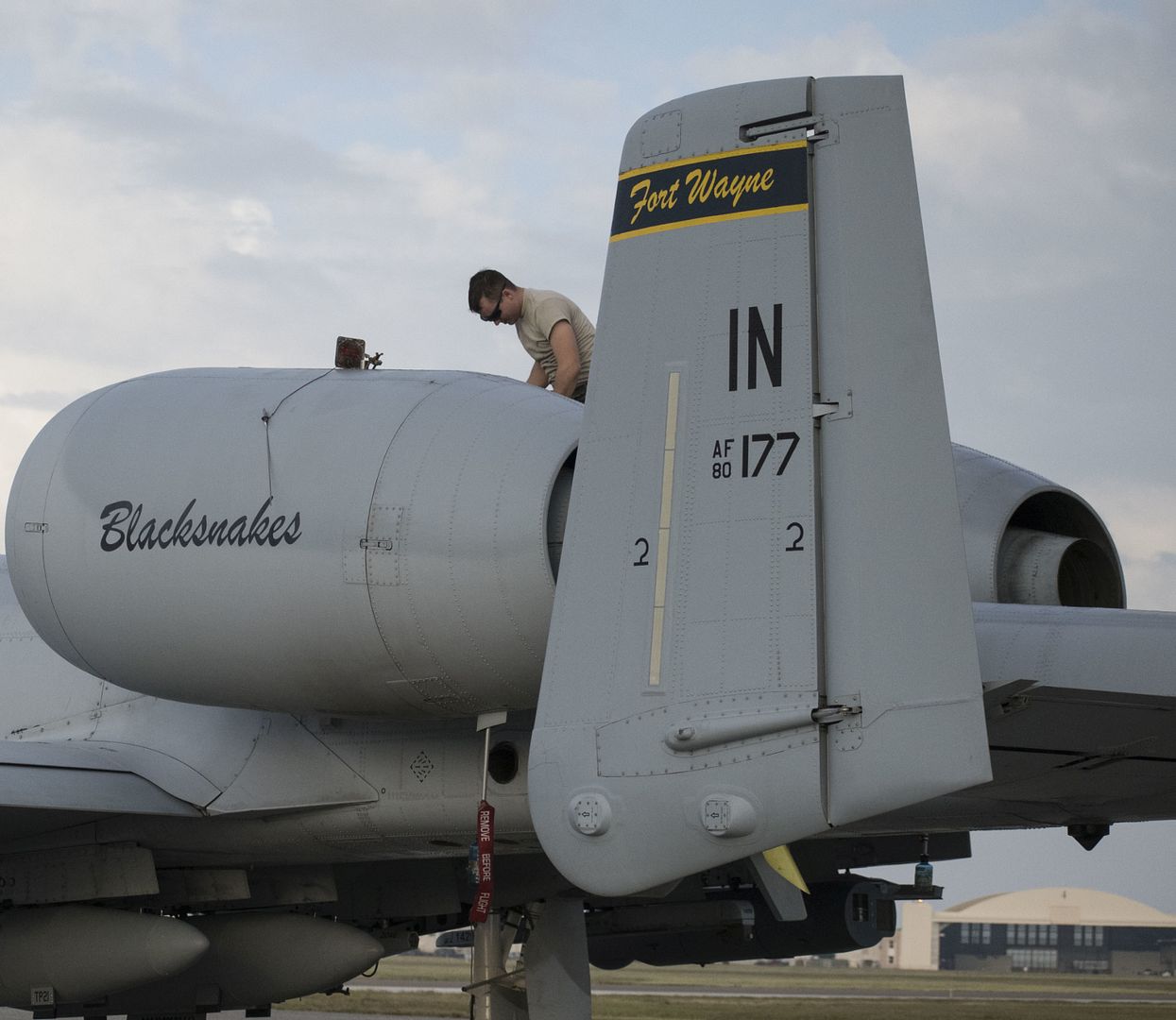
Post a reply
- Go to Previous topic
- Go to Next topic
- Go to Welcome
- Go to Introduce Yourself
- Go to General Discussion
- Go to Screenshots, Images and Videos
- Go to Off topic
- Go to Works in Progress
- Go to Skinning Tips / Tutorials
- Go to Skin Requests
- Go to IJAAF Library
- Go to Luftwaffe Library
- Go to RAF Library
- Go to USAAF / USN Library
- Go to Misc Library
- Go to The Ops Room
- Go to Made in Germany
- Go to Campaigns and Missions
- Go to Works in Progress
- Go to Juri's Air-Raid Shelter
- Go to Campaigns and Missions
- Go to Works in Progress
- Go to Skinpacks
- Go to External Projects Discussion
- Go to Books & Resources
